
Hellenic Broadcasting Corporation
The Hellenic Broadcasting Corporation or ERT (ΕΡΤ) is the state-owned public radio and television broadcaster of Greece.
Greece's public broadcaster ERT is shut down by then-prime minister Antonis Samaras. It would open exactly two years later by then-prime minister Alexis Tsipras.

The Hellenic Broadcasting Corporation or ERT (ΕΡΤ) is the state-owned public radio and television broadcaster of Greece.

Antonis Samaras is a Greek politician who served as 14th Prime Minister of Greece from 2012 to 2015. A member of the New Democracy party, he was its president from 2009 until 2015. Samaras started his national political career as Minister of Finance in 1989; he served as Minister of Foreign Affairs from 1989 to 1992 and Minister of Culture in 2009.

Alexis Tsipras is a Greek politician serving as Leader of the Official Opposition since 2019. He served as Prime Minister of Greece from 2015 to 2019.
Two earthquakes struck northern Afghanistan, triggering a massive landslide that buried a village and killed 75 people.

On 11 June 2012, two moderate earthquakes struck northern Afghanistan, causing a large landslide. The landslide buried the town of Sayi Hazara, trapping 71 people. After four days of digging, only five bodies were recovered and the search was called off. Overall, 75 people were killed and 13 others were injured.
More than 80 people die in a landslide triggered by two earthquakes in Afghanistan; an entire village is buried.

On 11 June 2012, two moderate earthquakes struck northern Afghanistan, causing a large landslide. The landslide buried the town of Sayi Hazara, trapping 71 people. After four days of digging, only five bodies were recovered and the search was called off. Overall, 75 people were killed and 13 others were injured.
The first African FIFA World Cup kicks off in South Africa.

The FIFA World Cup, often simply called the World Cup, is an international association football competition contested by the senior men's national teams of the members of the Fédération Internationale de Football Association, the sport's global governing body. The championship has been awarded every four years since the inaugural tournament in 1930, except in 1942 and 1946 when it was not held because of the Second World War. The reigning champions are France, who won their second title at the 2018 tournament in Russia.

South Africa, officially the Republic of South Africa (RSA), is the southernmost country in Africa. It is bounded to the south by 2,798 kilometres (1,739 mi) of coastline that stretch along the South Atlantic and Indian Oceans; to the north by the neighbouring countries of Namibia, Botswana, and Zimbabwe; and to the east and northeast by Mozambique and Eswatini. It also completely enclaves the country Lesotho. It is the southernmost country on the mainland of the Old World, and the second-most populous country located entirely south of the equator, after Tanzania. South Africa is a biodiversity hotspot, with unique biomes, plant and animal life. With over 60 million people, the country is the world's 24th-most populous nation and covers an area of 1,221,037 square kilometres. South Africa has three capital cities, with the executive, judicial and legislative branches of government based in Pretoria, Bloemfontein, and Cape Town respectively. The largest city is Johannesburg.
Canadian prime minister Stephen Harper apologised to the First Nations for past governments' policies of forced assimilation.

Stephen Joseph Harper is a Canadian politician who served as the 22nd prime minister of Canada from 2006 to 2015. Harper is the first and only prime minister to come from the modern-day Conservative Party of Canada, serving as the party's first leader from 2004 to 2015.
First Nations or first peoples may refer to:Indigenous peoples, for ethnic groups who are the earliest known inhabitants of an area.

In Canada, the Indian residential school system was a network of boarding schools for Indigenous peoples which amounted to cultural genocide. The network was funded by the Canadian government's Department of Indian Affairs and administered by Christian churches. The school system was created to isolate Indigenous children from the influence of their own native culture and religion in order to assimilate them into the dominant Canadian culture. Over the course of the system's more than hundred-year existence, around 150,000 children were placed in residential schools nationally. By the 1930s about 30 percent of Indigenous children were believed to be attending residential schools. The number of school-related deaths remains unknown due to incomplete records. Estimates range from 3,200 to over 30,000.
Canadian Prime Minister Stephen Harper makes a historic official apology to Canada's First Nations in regard to abuses at a Canadian Indian residential school.

The prime minister of Canada is the head of government of Canada. Under the Westminster system, the prime minister governs with the confidence of a majority the elected House of Commons; as such, the prime minister typically sits as a member of Parliament (MP) and leads the largest party or a coalition of parties. As first minister, the prime minister selects ministers to form the Cabinet, and serves as its chair. Constitutionally, the Crown exercises executive power on the advice of the Cabinet, which is collectively responsible to the House of Commons.

Stephen Joseph Harper is a Canadian politician who served as the 22nd prime minister of Canada from 2006 to 2015. Harper is the first and only prime minister to come from the modern-day Conservative Party of Canada, serving as the party's first leader from 2004 to 2015.
First Nations is a term used to identify those Indigenous Canadian peoples who are neither Inuit nor Métis. Traditionally, First Nations in Canada were peoples who lived south of the tree line, and mainly south of the Arctic Circle. There are 634 recognized First Nations governments or bands across Canada. Roughly half are located in the provinces of Ontario and British Columbia.

In Canada, the Indian residential school system was a network of boarding schools for Indigenous peoples which amounted to cultural genocide. The network was funded by the Canadian government's Department of Indian Affairs and administered by Christian churches. The school system was created to isolate Indigenous children from the influence of their own native culture and religion in order to assimilate them into the dominant Canadian culture. Over the course of the system's more than hundred-year existence, around 150,000 children were placed in residential schools nationally. By the 1930s about 30 percent of Indigenous children were believed to be attending residential schools. The number of school-related deaths remains unknown due to incomplete records. Estimates range from 3,200 to over 30,000.
The Fermi Gamma-ray Space Telescope is launched into orbit.

The Fermi Gamma-ray Space Telescope, formerly called the Gamma-ray Large Area Space Telescope (GLAST), is a space observatory being used to perform gamma-ray astronomy observations from low Earth orbit. Its main instrument is the Large Area Telescope (LAT), with which astronomers mostly intend to perform an all-sky survey studying astrophysical and cosmological phenomena such as active galactic nuclei, pulsars, other high-energy sources and dark matter. Another instrument aboard Fermi, the Gamma-ray Burst Monitor, is being used to study gamma-ray bursts and solar flares.
Mudslides caused by heavy monsoon rainfall and exacerbated by hill cutting killed at least 128 people in Chittagong, Bangladesh.

The 2007 Chittagong mudslides occurred in the port city of Chittagong in south-eastern Bangladesh. On 11 June 2007, heavy monsoon rainfall caused mudslides that engulfed slums around the hilly areas of the city. Experts had previously warned the increasing likelihood of landslides due to the Bangladesh government's failure in curbing the illegal hill cutting taking place in Chittagong.

A monsoon is traditionally a seasonal reversing wind accompanied by corresponding changes in precipitation but is now used to describe seasonal changes in atmospheric circulation and precipitation associated with annual latitudinal oscillation of the Intertropical Convergence Zone (ITCZ) between its limits to the north and south of the equator. Usually, the term monsoon is used to refer to the rainy phase of a seasonally changing pattern, although technically there is also a dry phase. The term is also sometimes used to describe locally heavy but short-term rains.

In civil engineering, a cut or cutting is where soil or rock from a relative rise along a route is removed. The term is also used in river management to speed a waterway's flow by short-cutting a meander.

Chittagong, officially Chattogram, is the second-largest city in Bangladesh after Dhaka and third largest city in Bengal. It is the administrative seat of the eponymous division and district. It hosts the busiest seaport on the Bay of Bengal. The city is located on the banks of the Karnaphuli River between the Chittagong Hill Tracts and the Bay of Bengal. The Greater Chittagong Area had a population of more than 5.2 million in 2022. In 2020, the city area had a population of more than 3.9 million.
Mudslides in Chittagong, Bangladesh, kill 130 people.

The 2007 Chittagong mudslides occurred in the port city of Chittagong in south-eastern Bangladesh. On 11 June 2007, heavy monsoon rainfall caused mudslides that engulfed slums around the hilly areas of the city. Experts had previously warned the increasing likelihood of landslides due to the Bangladesh government's failure in curbing the illegal hill cutting taking place in Chittagong.

Chittagong, officially Chattogram, is the second-largest city in Bangladesh after Dhaka and third largest city in Bengal. It is the administrative seat of the eponymous division and district. It hosts the busiest seaport on the Bay of Bengal. The city is located on the banks of the Karnaphuli River between the Chittagong Hill Tracts and the Bay of Bengal. The Greater Chittagong Area had a population of more than 5.2 million in 2022. In 2020, the city area had a population of more than 3.9 million.
Cassini–Huygens makes its closest flyby of the Saturn moon Phoebe.

Cassini–Huygens, commonly called Cassini, was a space-research mission by NASA, the European Space Agency (ESA), and the Italian Space Agency (ASI) to send a space probe to study the planet Saturn and its system, including its rings and natural satellites. The Flagship-class robotic spacecraft comprised both NASA's Cassini space probe and ESA's Huygens lander, which landed on Saturn's largest moon, Titan. Cassini was the fourth space probe to visit Saturn and the first to enter its orbit, where it stayed from 2004 to 2017. The two craft took their names from the astronomers Giovanni Cassini and Christiaan Huygens.
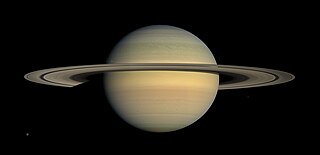
Saturn is the sixth planet from the Sun and the second-largest in the Solar System, after Jupiter. It is a gas giant with an average radius of about nine and a half times that of Earth. It has only one-eighth the average density of Earth; however, with its larger volume, Saturn is over 95 times more massive.

A natural satellite is, in the most common usage, an astronomical body that orbits a planet, dwarf planet, or small Solar System body. Natural satellites are often colloquially referred to as moons, a derivation from the Moon of Earth.

Phoebe is an irregular satellite of Saturn with a mean diameter of 213 km (132 mi). It was discovered by William Henry Pickering on March 18, 1899 from photographic plates that had been taken starting on 16 August 1898 at the Boyden Station of the Carmen Alto Observatory near Arequipa, Peru, by DeLisle Stewart. It was the first satellite to be discovered photographically.
Antonio Meucci is acknowledged as the first inventor of the telephone by the United States Congress.

Antonio Santi Giuseppe Meucci was an Italian inventor and an associate of Giuseppe Garibaldi, a major political figure in the history of Italy. Meucci is best known for developing a voice-communication apparatus that several sources credit as the first telephone.

A telephone is a telecommunications device that permits two or more users to conduct a conversation when they are too far apart to be easily heard directly. A telephone converts sound, typically and most efficiently the human voice, into electronic signals that are transmitted via cables and other communication channels to another telephone which reproduces the sound to the receiving user. The term is derived from Greek: τῆλε and φωνή, together meaning distant voice. A common short form of the term is phone, which came into use early in the telephone's history.

The United States Congress is the legislature of the federal government of the United States. It is bicameral, composed of a lower body, the House of Representatives, and an upper body, the Senate. It meets in the United States Capitol in Washington, D.C. Senators and representatives are chosen through direct election, though vacancies in the Senate may be filled by a governor's appointment. Congress has 535 voting members: 100 senators and 435 representatives. The vice president of the United States has a vote in the Senate only when senators are evenly divided. The House of Representatives has six non-voting members.
Timothy McVeigh, detonator of a truck bomb in front of the Oklahoma federal building, was executed by lethal injection for using a weapon of mass destruction, among other charges.

Timothy James McVeigh was an American domestic terrorist responsible for the 1995 Oklahoma City bombing that killed 168 people, 19 of whom were children, injured more than 680 others, and destroyed one-third of the Alfred P. Murrah Federal Building. The bombing was the deadliest act of terrorism in the United States prior to the September 11 attacks. It remains the deadliest act of domestic terrorism in U.S. history.

The Oklahoma City bombing was a domestic terrorist truck bombing of the Alfred P. Murrah Federal Building in Oklahoma City, Oklahoma, United States, on April 19, 1995. Perpetrated by two anti-government extremists, Timothy McVeigh and Terry Nichols, the bombing happened at 9:02 a.m. and killed at least 168 people, injured more than 680 others, and destroyed more than one-third of the building, which had to be demolished. The blast destroyed or damaged 324 other buildings within a 16-block radius, shattered glass in 258 nearby buildings, and destroyed 86 cars, causing an estimated $652 million worth of damage. Local, state, federal, and worldwide agencies engaged in extensive rescue efforts in the wake of the bombing. The Federal Emergency Management Agency (FEMA) activated 11 of its Urban Search and Rescue Task Forces, consisting of 665 rescue workers who assisted in rescue and recovery operations. The Oklahoma City bombing remains the deadliest act of domestic terrorism in U.S. history.
Robert Edward Dyer was sentenced to 16 years' imprisonment for conducting a six-month-long letter-bomb campaign against the British supermarket chain Tesco.
The Tesco bomb campaign was an attempted extortion against British supermarket chain Tesco which started in Bournemouth, England, in August 2000 and led to one of the largest and most secretive operations ever undertaken by Dorset Police. During the campaign, a blackmailer identified by the pseudonym "Sally" sent letters to Tesco stores threatening to harm customers if his demands—for Clubcards, modified so that the holder could withdraw cash from ATMs—were not met.

Tesco PLC is a British multinational groceries and general merchandise retailer headquartered in Welwyn Garden City, England. In 2011 it was the third-largest retailer in the world measured by gross revenues and the ninth-largest in the world measured by revenues. It has shops in Ireland, the United Kingdom, the Czech Republic, Hungary and Slovakia. It is the market leader of groceries in the UK.
Timothy McVeigh is executed for his role in the Oklahoma City bombing.

Timothy James McVeigh was an American domestic terrorist responsible for the 1995 Oklahoma City bombing that killed 168 people, 19 of whom were children, injured more than 680 others, and destroyed one-third of the Alfred P. Murrah Federal Building. The bombing was the deadliest act of terrorism in the United States prior to the September 11 attacks. It remains the deadliest act of domestic terrorism in U.S. history.

The Oklahoma City bombing was a domestic terrorist truck bombing of the Alfred P. Murrah Federal Building in Oklahoma City, Oklahoma, United States, on April 19, 1995. Perpetrated by two anti-government extremists, Timothy McVeigh and Terry Nichols, the bombing happened at 9:02 a.m. and killed at least 168 people, injured more than 680 others, and destroyed more than one-third of the building, which had to be demolished. The blast destroyed or damaged 324 other buildings within a 16-block radius, shattered glass in 258 nearby buildings, and destroyed 86 cars, causing an estimated $652 million worth of damage. Local, state, federal, and worldwide agencies engaged in extensive rescue efforts in the wake of the bombing. The Federal Emergency Management Agency (FEMA) activated 11 of its Urban Search and Rescue Task Forces, consisting of 665 rescue workers who assisted in rescue and recovery operations. The Oklahoma City bombing remains the deadliest act of domestic terrorism in U.S. history.
Compaq Computer pays US$9 billion for Digital Equipment Corporation in the largest high-tech acquisition.

Compaq Computer Corporation was an American information technology company founded in 1982 that developed, sold, and supported computers and related products and services. Compaq produced some of the first IBM PC compatible computers, being the second company after Columbia Data Products to legally reverse engineer the IBM Personal Computer. It rose to become the largest supplier of PC systems during the 1990s before being overtaken by Dell in 2001. Struggling to keep up in the price wars against Dell, as well as with a risky acquisition of DEC, Compaq was acquired for US$25 billion by HP in 2002. The Compaq brand remained in use by HP for lower-end systems until 2013 when it was discontinued. Since 2013, the brand is currently licensed to third parties for use on electronics in Brazil and India.

Digital Equipment Corporation, using the trademark Digital, was a major American company in the computer industry from the 1960s to the 1990s. The company was co-founded by Ken Olsen and Harlan Anderson in 1957. Olsen was president until forced to resign in 1992, after the company had gone into precipitous decline.
In one of the most famous upsets in FA Cup history, Sutton United, a team in the fifth tier of English league football, defeated top-tier Coventry City.
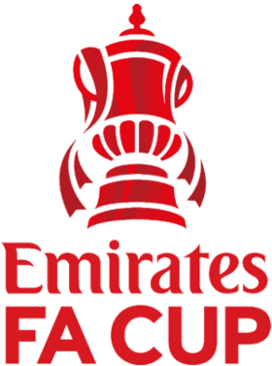
The Football Association Challenge Cup, more commonly known as the FA Cup, is an annual knockout football competition in men's domestic English football. First played during the 1871–72 season, it is the oldest national football competition in the world. It is organized by and named after The Football Association. Since 2015, it has been known as The Emirates FA Cup after its headline sponsor. A concurrent women's tournament is also held, the Women's FA Cup.

Sutton United Football Club is a professional football club in Sutton, South London, England, who play in League Two, the fourth tier of the English football league system. They play home games at Gander Green Lane in Sutton about 10 miles south-southwest of central London.
The English football league system, also known as the football pyramid, is a series of interconnected leagues for men's association football clubs in England, with five teams from Wales, one from Guernsey, one from Jersey and one from the Isle of Man also competing. The system has a hierarchical format with promotion and relegation between leagues at different levels, allowing even the smallest club the theoretical possibility of ultimately rising to the very top of the system, the Premier League. Below that are levels 2–4 organised by the English Football League, then the National League System from levels 5–10 administered by the FA, and thereafter feeder leagues run by relevant county FAs on an ad hoc basis.

The 1988–89 FA Cup third-round match between Sutton United and Coventry City was an association football game played at Gander Green Lane in Sutton, on 7 January 1989. Coventry City entered the FA Cup in the third round, as they participated in the Football League First Division, the top tier of English league football. Sutton United of the Conference, the fifth tier of English football, had started their cup run in the 4th Qualifying round, winning three ties to reach this stage of the competition. Coventry, the away team, went into the match as strong favourites, a reflection of the gulf in divisions that separated the two teams.

Coventry City Football Club is a professional association football club based in Coventry, West Midlands, England. The team currently compete in the Championship, the second tier of the English football league system. The club play at the 32,609 capacity Coventry Building Society Arena. The club is nicknamed the Sky Blues because of the colour of their home strip. From 1899 to 2005, Coventry City played at Highfield Road. The 32,609-capacity Coventry Building Society Arena was opened in August 2005 to replace Highfield Road.
Diane Abbott, Paul Boateng and Bernie Grant are elected as the first black MPs in Great Britain.

Diane Julie Abbott is a British politician who has been Member of Parliament (MP) for Hackney North and Stoke Newington since 1987. A socialist member of the Labour Party, she served in Jeremy Corbyn's Shadow Cabinet as Shadow Home Secretary from 2016 to 2020. Abbott is the first black woman elected to Parliament, and the longest-serving black MP in the House of Commons.

Paul Yaw Boateng, Baron Boateng is a British Labour Party politician, who was the Member of Parliament (MP) for Brent South from 1987 to 2005, becoming the UK's first Black Cabinet Minister in May 2002, when he was appointed as Chief Secretary to the Treasury. Following his departure from the House of Commons, he served as the British High Commissioner to South Africa from March 2005 to May 2009. He was introduced as a member of the House of Lords on 1 July 2010.
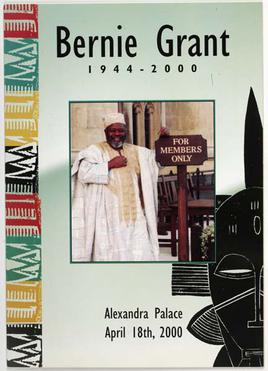
Bernard Alexander Montgomery Grant was a British Labour Party politician who was the Member of Parliament for Tottenham, London, from 1987 to his death in 2000.
Steven Spielberg's E.T. the Extra-Terrestrial was released, and went on to set the record for the highest-grossing film of all time, which it held for 11 years.

Steven Allan Spielberg is an American director, writer, and producer. A major figure of the New Hollywood era and pioneer of the modern blockbuster, he is the most commercially successful director of all time. Spielberg is the recipient of various accolades, including three Academy Awards, a Kennedy Center honor, a Cecil B. DeMille Award, and an AFI Life Achievement Award. In 2013, Time listed him as one of the 100 most influential people.

E.T. the Extra-Terrestrial is a 1982 American science fiction film produced and directed by Steven Spielberg and written by Melissa Mathison. It tells the story of Elliott, a boy who befriends an extraterrestrial, dubbed E.T., who is left behind on Earth. Along with his friends and family, Elliott must find a way to help E.T. find his way home. The film stars Dee Wallace, Henry Thomas, Peter Coyote, Robert MacNaughton and Drew Barrymore.
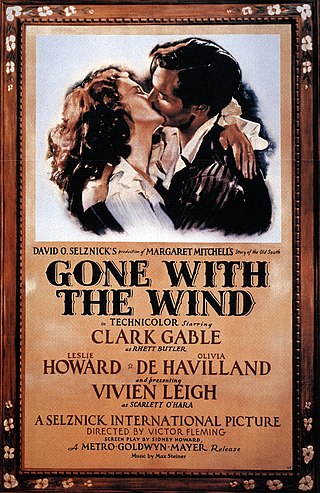
Films generate income from several revenue streams, including theatrical exhibition, home video, television broadcast rights, and merchandising. However, theatrical box-office earnings are the primary metric for trade publications in assessing the success of a film, mostly because of the availability of the data compared to sales figures for home video and broadcast rights, but also because of historical practice. Included on the list are charts of the top box-office earners, a chart of high-grossing films by calendar year, a timeline showing the transition of the highest-grossing film record, and a chart of the highest-grossing film franchises and series. All charts are ranked by international theatrical box-office performance where possible, excluding income derived from home video, broadcasting rights, and merchandise.
A magnitude 6.9 earthquake at Golbaf, Iran, kills at least 2,000.
Golbaf is a city and capital of Golbaf District, in Kerman County, Kerman Province, Iran. At the 2006 census, its population was 8,341, in 2,039 families.
Altaf Hussain founds the student political movement All Pakistan Muhajir Students Organisation (APMSO) in Karachi University.
Altaf Hussain is a British Pakistani politician who is known as the founder of the Muttahida Qaumi Movement. He holds United Kingdom citizenship and has been living in exile in the United Kingdom since the start of Operation Clean-up. Since 2015, he has been a fugitive from the Anti Terrorism Court of Pakistan on the charges of murder, targeted killings, treason, inciting violence and hate speeches. He is due to go on trial in the United Kingdom in January 2022 for promoting terrorism and unrest through hate speech in Pakistan. He fled the country in 1992 after a crackdown against his party was launched.

The All Pakistan Muttahida Students Organization is a Pakistani student organization notable for creating a political party: the Mohajir Quami Movement, now called the Muttahida Qaumi Movement (MQM).

The University of Karachi is a public research university located in Karachi, Sindh, Pakistan. Established in June 1951 by an act of Parliament and as a successor to the University of Sindh, the university is a "Sindh Government University" and designed by Mohsin Baig as its chief architect.
The U.S. Government forcibly removes the last holdouts to the Native American Occupation of Alcatraz, ending 19 months of control.

The Indigenous peoples of the Americas are the inhabitants of the Americas before the arrival of the European settlers in the 15th century, and the ethnic groups who now identify themselves with those peoples.

The Occupation of Alcatraz was a 19-month long protest when 89 Native Americans and their supporters occupied Alcatraz Island. The protest was led by Richard Oakes, LaNada Means, and others, while John Trudell served as spokesman. The group lived on the island together until the protest was forcibly ended by the U.S. government.
After being appointed on May 15, Anna Mae Hays and Elizabeth P. Hoisington officially receive their ranks as U.S. Army Generals, becoming the first women to do so.

Anna Mae Violet Hays was an American military officer who served as the 13th chief of the United States Army Nurse Corps. She was the first woman in the United States Armed Forces to be promoted to a general officer rank; in 1970, she was promoted to brigadier general. Hays paved the way for equal treatment of women, countered occupational sexism, and made a number of recommendations which were accepted into military policy.

Elizabeth Paschel Hoisington was a United States Army officer who was one of the first two women to attain the rank of brigadier general.
In the United States military, a general is the most senior general-grade officer; it is the highest achievable commissioned officer rank that may be attained in the United States Armed Forces, with exception of the Navy and Coast Guard, which have the equivalent rank of admiral instead. The official and formal insignia of "general" is defined by its four stars.
Lloyd J. Old identified the first cell surface antigens that could differentiate among different cell types.

Lloyd John Old was one of the founders and standard-bearers of the field of cancer immunology. When Old began his career in 1958, tumor immunology was in its infancy. Today, cancer immunotherapies are emerging as a significant advance in cancer therapy.

The cell membrane is a biological membrane that separates and protects the interior of all cells from the outside environment. The cell membrane consists of a lipid bilayer, made up of two layers of phospholipids with cholesterols interspersed between them, maintaining appropriate membrane fluidity at various temperatures. The membrane also contains membrane proteins, including integral proteins that span the membrane and serve as membrane transporters, and peripheral proteins that loosely attach to the outer (peripheral) side of the cell membrane, acting as enzymes to facilitate interaction with the cell's environment. Glycolipids embedded in the outer lipid layer serve a similar purpose. The cell membrane controls the movement of substances in and out of cells and organelles, being selectively permeable to ions and organic molecules. In addition, cell membranes are involved in a variety of cellular processes such as cell adhesion, ion conductivity, and cell signalling and serve as the attachment surface for several extracellular structures, including the cell wall and the carbohydrate layer called the glycocalyx, as well as the intracellular network of protein fibers called the cytoskeleton. In the field of synthetic biology, cell membranes can be artificially reassembled.
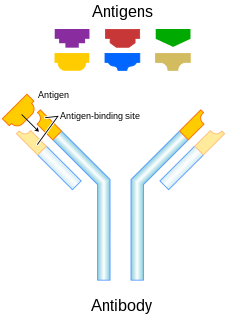
In immunology, an antigen (Ag) is a molecule or molecular structure or any foreign particulate matter or a pollen grain that can bind to a specific antibody or T-cell receptor. The presence of antigens in the body may trigger an immune response. The term antigen originally referred to a substance that is an antibody generator. Antigens can be proteins, peptides, polysaccharides, lipids, or nucleic acids.
A cell type is a classification used to identify cells that share morphological or phenotypical features. A multicellular organism may contain cells of a number of widely differing and specialized cell types, such as muscle cells and skin cells, that differ both in appearance and function yet have identical genomic sequences. Cells may have the same genotype, but belong to different cell types due to the differential regulation of the genes they contain. Classification of a specific cell type is often done through the use of microscopy. Recent developments in single cell RNA sequencing facilitated classification of cell types based on shared gene expression patterns. This has led to the discovery of many new cell types in e.g. mouse cortex, hippocampus, dorsal root ganglion and spinal cord.
World War II veteran Walter Seifert attacks an elementary school in Cologne, Germany, killing at least eight children and two teachers and seriously injuring several more with a home-made flamethrower and a lance.

The Cologne school massacre was a mass murder that occurred at the Catholic elementary school located in the suburb of Volkhoven in Cologne, West Germany on 11 June 1964. The perpetrator, Walter Seifert, also known as "Der Feuerteufel von Volkhoven", attacked the people at the school with a home-made flamethrower and a spear, killing eight pupils and two teachers, and wounding twenty-two others. When police arrived at the scene, he fled from the school compound and poisoned himself. He was taken to a hospital, where he died the same evening.

Cologne is the largest city of the German western state of North Rhine-Westphalia (NRW) and the fourth-most populous city of Germany with 1.1 million inhabitants in the city proper and 3.6 million people in the urban region. Centered on the left (west) bank of the Rhine, Cologne is about 35 km (22 mi) southeast of NRW's state capital Düsseldorf and 25 km (16 mi) northwest of Bonn, the former capital of West Germany.

A flamethrower is a ranged incendiary device designed to project a controllable jet of fire. First deployed by the Byzantine Empire in the 7th century AD, flamethrowers saw use in modern times during World War I, and more widely in World War II as a tactical siege weapon against fortifications.
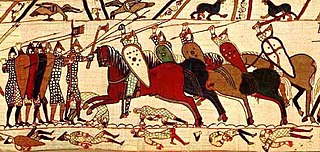
A lance is a spear designed to be used by a mounted warrior or cavalry soldier (lancer). In ancient and medieval warfare, it evolved into the leading weapon in cavalry charges, and was unsuited for throwing or for repeated thrusting, unlike similar weapons of the javelin and pike family typically used by infantry. Lances were often equipped with a vamplate, a small circular plate to prevent the hand sliding up the shaft upon impact, and beginning in the late 14th century were used in conjunction with a lance rest attached to the breastplate. Though best known as a military and sporting weapon carried by European knights and men-at-arms, the use of lances was widespread throughout Asia, the Middle East, and North Africa wherever suitable mounts were available. Lancers of the medieval period also carried secondary weapons such as swords, battle axes, war hammers, maces and daggers for use in hand-to-hand combat, since the lance was often a one-use-per-engagement weapon; assuming the lance survived the initial impact without breaking, it was often too long, heavy, and slow to be effective against opponents in a melee.
Vietnamese monk Thích Quảng Đức burned himself to death in Saigon to protest the persecution of Buddhists by Catholic South Vietnamese President Ngo Dinh Diem's administration.

A bhikkhu is an ordained male in Buddhist monasticism. Male and female monastics are members of the Sangha.

Thích Quảng Đức was a Vietnamese Mahayana Buddhist monk who burned himself to death at a busy Saigon road intersection on 11 June 1963. Quảng Đức was protesting the persecution of Buddhists by the South Vietnamese government led by Ngô Đình Diệm, a staunch Roman Catholic. Photographs of his self-immolation circulated around the world, drawing attention to the policies of the Diệm government. John F. Kennedy said of one photograph, "No news picture in history has generated so much emotion around the world as that one." Malcolm Browne won the World Press Photo of the Year for his photograph of the monk's death.
The term self-immolation broadly refers to acts of altruistic suicide, otherwise the giving up of one's body in an act of sacrifice. However, it most often refers specifically to autocremation, the act of sacrificing oneself by setting oneself on fire and burning to death. It is typically used for political or religious reasons, often as a form of non-violent protest or in acts of martyrdom. It has a centuries-long recognition as the most extreme form of protest possible by humankind.

Ho Chi Minh City, formerly known as Saigon, is the largest city in Vietnam, with a population of around 9 million in 2019. Situated in the southeast region of Vietnam, the city surrounds the Saigon River and covers about 2,061 km2 (796 sq mi).
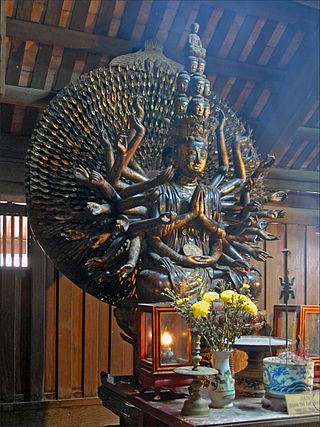
Buddhism in Vietnam, as practiced by the ethnic Vietnamese, is mainly of the Mahayana tradition and is the main religion. Buddhism may have first come to Vietnam as early as the 3rd or 2nd century BCE from the Indian subcontinent or from China in the 1st or 2nd century CE. Vietnamese Buddhism has had a syncretic relationship with certain elements of Taoism, Chinese spirituality, and Vietnamese folk religion.

The Catholic Church in Vietnam is part of the worldwide Catholic Church, under the spiritual leadership of bishops in Vietnam who are in communion with the pope in Rome. Vietnam has the fifth largest Catholic population in Asia, after the Philippines, India, China and Indonesia. There are about 7 million Catholics in Vietnam, representing 7.0% of the total population. There are 27 dioceses with 2,228 parishes and 2,668 priests. The main liturgical rites employed in Vietnam are those of the Latin Church.

This is a list of leaders of South Vietnam, since the establishment of the Autonomous Republic of Cochinchina in 1946, and the division of Vietnam in 1954 until the fall of the Republic of Vietnam in 1975, and the reunification of Vietnam in 1976.

Ngô Đình Diệm was a South Vietnamese politician. He was the final prime minister of the State of Vietnam (1954–1955), and then served as the first president of South Vietnam from 1955 until he was captured and assassinated during the 1963 military coup.
The University of Alabama was desegregated as Governor George Wallace stepped aside after defiantly blocking the entrance to an auditorium.

The University of Alabama is a public research university in Tuscaloosa, Alabama. Established in 1820 and opened to students in 1831, the University of Alabama is the oldest and largest of the public universities in Alabama as well as the University of Alabama System. It is classified among "R1: Doctoral Universities – Very high research activity".

In the United States, racial segregation is the systematic separation of facilities and services such as housing, healthcare, education, employment, and transportation on racial grounds. The term is mainly used in reference to the legally or socially enforced separation of African Americans from whites, but it is also used in reference to the separation of other ethnic minorities from majority and mainstream communities. While mainly referring to the physical separation and provision of separate facilities, it can also refer to other manifestations such as prohibitions against interracial marriage, and the separation of roles within an institution. Notably, in the United States Armed Forces up until 1948, black units were typically separated from white units but were still led by white officers.

George Corley Wallace Jr. was an American politician who served as the 45th governor of Alabama for four terms. A member of the Democratic Party, he is best remembered for his staunch segregationist and populist views. During his tenure, he promoted "industrial development, low taxes, and trade schools." Wallace sought the United States presidency as a Democrat three times, and once as an American Independent Party candidate, unsuccessfully each time. Wallace opposed desegregation and supported the policies of "Jim Crow" during the Civil Rights Movement, declaring in his 1963 inaugural address that he stood for "segregation now, segregation tomorrow, segregation forever".

The Stand in the Schoolhouse Door took place at Foster Auditorium at the University of Alabama on June 11, 1963. George Wallace, the Governor of Alabama, in a symbolic attempt to keep his inaugural promise of "segregation now, segregation tomorrow, segregation forever" and stop the desegregation of schools, stood at the door of the auditorium as if to block the entry of two African American students: Vivian Malone and James Hood.
American Civil Rights Movement: Governor of Alabama George Wallace defiantly stands at the door of Foster Auditorium at the University of Alabama in an attempt to block two black students, Vivian Malone and James Hood, from attending that school. Later in the day, accompanied by federalized National Guard troops, they are able to register.

The civil rights movement was a political movement and campaign from 1954 to 1968 in the United States to abolish institutional racial segregation, discrimination, and disenfranchisement throughout the United States. The movement had its origins in the Reconstruction era during the late 19th century, although it made its largest legislative gains in the 1960s after years of direct actions and grassroots protests. The social movement's major nonviolent resistance and civil disobedience campaigns eventually secured new protections in federal law for the civil rights of all Americans.

The governor of Alabama is the head of government of the U.S. state of Alabama. The governor is the head of the executive branch of Alabama's state government and is charged with enforcing state laws.

Alabama is a state in the Southeastern region of the United States, bordered by Tennessee to the north; Georgia to the east; Florida and the Gulf of Mexico to the south; and Mississippi to the west. Alabama is the 30th largest by area and the 24th-most populous of the U.S. states. With a total of 1,500 miles (2,400 km) of inland waterways, Alabama has among the most of any state.

George Corley Wallace Jr. was an American politician who served as the 45th governor of Alabama for four terms. A member of the Democratic Party, he is best remembered for his staunch segregationist and populist views. During his tenure, he promoted "industrial development, low taxes, and trade schools." Wallace sought the United States presidency as a Democrat three times, and once as an American Independent Party candidate, unsuccessfully each time. Wallace opposed desegregation and supported the policies of "Jim Crow" during the Civil Rights Movement, declaring in his 1963 inaugural address that he stood for "segregation now, segregation tomorrow, segregation forever".

The Stand in the Schoolhouse Door took place at Foster Auditorium at the University of Alabama on June 11, 1963. George Wallace, the Governor of Alabama, in a symbolic attempt to keep his inaugural promise of "segregation now, segregation tomorrow, segregation forever" and stop the desegregation of schools, stood at the door of the auditorium as if to block the entry of two African American students: Vivian Malone and James Hood.
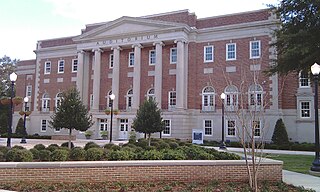
Foster Auditorium is a multi-purpose facility at the University of Alabama in Tuscaloosa, Alabama. It was built in 1939 as a Works Progress Administration project and has been used for Alabama basketball, women's sports, graduations, lectures, concerts, and other large gatherings, including registration. Its status as the largest indoor building on campus came to an end in 1968 with the opening of the Memorial Coliseum. The building housed the Department of Kinesiology until 2006. In April 2009, the University announced a major renovation for the auditorium. After the renovation, the Crimson Tide women's basketball and volleyball programs moved back to Foster Auditorium, their original home.

The University of Alabama is a public research university in Tuscaloosa, Alabama. Established in 1820 and opened to students in 1831, the University of Alabama is the oldest and largest of the public universities in Alabama as well as the University of Alabama System. It is classified among "R1: Doctoral Universities – Very high research activity".

Vivian Juanita Malone Jones was one of the first two black students to enroll at the University of Alabama in 1963, and in 1965 became the university's first black graduate. She was made famous when George Wallace, the Governor of Alabama, attempted to block her and James Hood from enrolling at the all-white university.

James Alexander Hood was one of the first African Americans to enroll at the University of Alabama in 1963, and was made famous when Alabama Governor George Wallace attempted to block him and fellow student Vivian Malone from enrolling at the then all-white university, an incident which became known as the "Stand in the Schoolhouse Door".
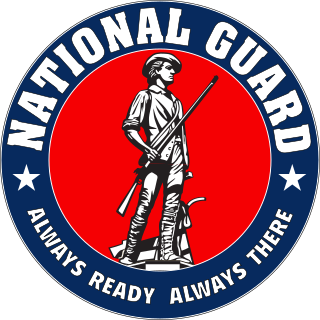
The National Guard is a state-based military force that becomes part of the reserve components of the United States Army and the United States Air Force when activated for federal missions. It is a military reserve force composed of National Guard military members or units of each state and the territories of Guam, the Virgin Islands, Puerto Rico, and the District of Columbia, for a total of 54 separate organizations. It is officially created under Congress's Article 1 Section 8 ability to 'raise and support armies'. All members of the National Guard are also members of the organized militia of the United States as defined by 10 U.S.C. § 246. National Guard units are under the dual control of the state governments and the federal government.
Buddhist monk Thích Quảng Đức burns himself with gasoline in a busy Saigon intersection to protest the lack of religious freedom in South Vietnam.

Thích Quảng Đức was a Vietnamese Mahayana Buddhist monk who burned himself to death at a busy Saigon road intersection on 11 June 1963. Quảng Đức was protesting the persecution of Buddhists by the South Vietnamese government led by Ngô Đình Diệm, a staunch Roman Catholic. Photographs of his self-immolation circulated around the world, drawing attention to the policies of the Diệm government. John F. Kennedy said of one photograph, "No news picture in history has generated so much emotion around the world as that one." Malcolm Browne won the World Press Photo of the Year for his photograph of the monk's death.
The term self-immolation broadly refers to acts of altruistic suicide, otherwise the giving up of one's body in an act of sacrifice. However, it most often refers specifically to autocremation, the act of sacrificing oneself by setting oneself on fire and burning to death. It is typically used for political or religious reasons, often as a form of non-violent protest or in acts of martyrdom. It has a centuries-long recognition as the most extreme form of protest possible by humankind.

Gasoline or petrol is a transparent, petroleum-derived flammable liquid that is used primarily as a fuel in most spark-ignited internal combustion engines. It consists mostly of organic compounds obtained by the fractional distillation of petroleum, enhanced with a variety of additives. On average, U.S. refineries produce, from a barrel of crude oil, about 19 to 20 gallons of gasoline; 11 to 13 gallons of distillate fuel ; and 3 to 4 gallons of jet fuel. The product ratio depends on the processing in an oil refinery and the crude oil assay. A barrel of oil is defined as holding 42 US gallons, which is about 159 liters or 35 imperial gallons.

Ho Chi Minh City, formerly known as Saigon, is the largest city in Vietnam, with a population of around 9 million in 2019. Situated in the southeast region of Vietnam, the city surrounds the Saigon River and covers about 2,061 km2 (796 sq mi).
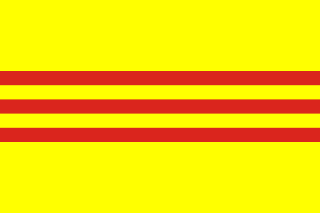
South Vietnam, officially the Republic of Vietnam, was a country in Southeast Asia that existed from 1955 to 1975, the period when the southern portion of Vietnam was a member of the Western Bloc during part of the Cold War after the 1954 division of Vietnam. It first received international recognition in 1949 as the State of Vietnam within the French Union, with its capital at Saigon, before becoming a republic in 1955. South Vietnam was bordered by North Vietnam to the north, Laos to the northwest, Cambodia to the southwest, and Thailand across the Gulf of Thailand to the southwest. Its sovereignty was recognized by the United States and 87 other nations, though it failed to gain admission into the United Nations as a result of a Soviet veto in 1957. It was succeeded by the Republic of South Vietnam in 1975.
John F. Kennedy addresses Americans from the Oval Office proposing the Civil Rights Act of 1964, which would revolutionize American society by guaranteeing equal access to public facilities, ending segregation in education, and guaranteeing federal protection for voting rights.
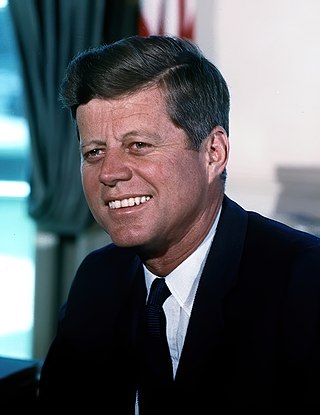
John Fitzgerald Kennedy, often referred to by his initials JFK and the nickname Jack, was an American politician who served as the 35th president of the United States from 1961 until his assassination near the end of his third year in office. Kennedy was the youngest person to assume the presidency by election. He was also the youngest president at the end of his tenure. Kennedy served at the height of the Cold War, and the majority of his work as president concerned relations with the Soviet Union and Cuba. A Democrat, he represented Massachusetts in both houses of the U.S. Congress prior to his presidency.

The Civil Rights Act of 1964 is a landmark civil rights and labor law in the United States that outlaws discrimination based on race, color, religion, sex, and national origin. It prohibits unequal application of voter registration requirements, racial segregation in schools and public accommodations, and employment discrimination. The act "remains one of the most significant legislative achievements in American history".
American criminals Clarence Anglin, John Anglin and Frank Morris escaped from Alcatraz Island, one of the United States' most famous prisons.

In June 1962, inmates Clarence Anglin, John Anglin, and Frank Morris escaped from Alcatraz Federal Penitentiary, a maximum-security prison located on Alcatraz Island in San Francisco Bay. Late on the night of June 11 or early morning of June 12, the three men tucked papier-mâché heads resembling their own likenesses into their beds, broke out of the main prison building via ventilation ducts and an unused utility corridor, and departed the island aboard an improvised inflatable raft to an uncertain fate. A fourth conspirator, Allen West, failed in his escape attempt and remained on the island.

Alcatraz Island is a small island in San Francisco Bay, 1.25 miles (2.01 km) offshore from San Francisco, California, United States. The island was developed in the mid-19th century with facilities for a lighthouse, a military fortification, and a military prison. In 1934, the island was converted into a federal prison, Alcatraz Federal Penitentiary. The strong currents around the island and cold water temperatures made escape nearly impossible, and the prison became one of the most notorious in American history. The prison closed in 1963, and the island is now a major tourist attraction.
Frank Morris, John Anglin and Clarence Anglin allegedly become the only prisoners to escape from the prison on Alcatraz Island.

In June 1962, inmates Clarence Anglin, John Anglin, and Frank Morris escaped from Alcatraz Federal Penitentiary, a maximum-security prison located on Alcatraz Island in San Francisco Bay. Late on the night of June 11 or early morning of June 12, the three men tucked papier-mâché heads resembling their own likenesses into their beds, broke out of the main prison building via ventilation ducts and an unused utility corridor, and departed the island aboard an improvised inflatable raft to an uncertain fate. A fourth conspirator, Allen West, failed in his escape attempt and remained on the island.

Alcatraz Island is a small island in San Francisco Bay, 1.25 miles (2.01 km) offshore from San Francisco, California, United States. The island was developed in the mid-19th century with facilities for a lighthouse, a military fortification, and a military prison. In 1934, the island was converted into a federal prison, Alcatraz Federal Penitentiary. The strong currents around the island and cold water temperatures made escape nearly impossible, and the prison became one of the most notorious in American history. The prison closed in 1963, and the island is now a major tourist attraction.
Start of Gal Oya riots, the first reported ethnic riots that target minority Sri Lankan Tamils in the Eastern Province. The total number of deaths is reportedly 150.
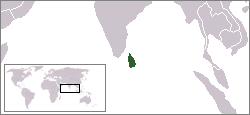
The 1956 anti-Tamil pogrom, also known as the Gal Oya riots, was the first organised pogrom against Sri Lankan Tamils in the Dominion of Ceylon. It began with anti-Tamil rioting in Colombo, followed by anti-Sinhalese rioting in Batticaloa. The worst of the violence took place in the Gal Oya valley, where local majority Sinhalese colonists and employees of the Gal Oya Development Board commandeered government vehicles, dynamite and weapons and massacred minority Tamils. It is estimated that over 150 people died during the violence. The police and army were eventually able to bring the situation under control.

Sri Lankan Tamils, also known as Ceylon Tamils or Eelam Tamils, are Tamils native to the South Asian island state of Sri Lanka. Today, they constitute a majority in the Northern Province, live in significant numbers in the Eastern Province and are in the minority throughout the rest of the country. 70% of Sri Lankan Tamils in Sri Lanka live in the Northern and Eastern provinces.
The deadliest accident in motorsport history occurred when two cars collided during a running of the 24 Hours of Le Mans, causing 84 deaths.

The 1955 Le Mans disaster was a major crash that occurred on 11 June 1955 during the 24 Hours of Le Mans motor race at Circuit de la Sarthe in Le Mans, Sarthe, France. Large pieces of debris flew into the crowd, killing 83 spectators and French driver Pierre Levegh, and injuring nearly 180 more. It was the most catastrophic crash in motorsport history, and it prompted Mercedes-Benz to withdraw from motor racing until 1989.

The 1955 24 Hours of Le Mans was the 23rd 24 Hours of Le Mans and took place on 11 and 12 June 1955 on Circuit de la Sarthe. It was also the fourth round of the F.I.A. World Sports Car Championship. During the race, Pierre Levegh crashed into a crowd of spectators, killing 84 and injuring 120 in the deadliest accident in motor racing history.

The 24 Hours of Le Mans is an endurance-focused sports car race held annually near the town of Le Mans, France. It is the world's oldest active endurance racing event. Unlike fixed-distance races whose winner is determined by minimum time, the 24 Hours of Le Mans is won by the car that covers the greatest distance in 24 hours. The cars on this track can go up to 366 km/h (227 mph), and in prior events reaching 405 km/h (252 mph) before track modifications. Racing teams must balance the demands of speed with the cars' ability to run for 24 hours without mechanical failure.
Eighty-three spectators are killed and at least 100 are injured after an Austin-Healey and a Mercedes-Benz collide at the 24 Hours of Le Mans, the deadliest ever accident in motorsports.
Austin-Healey was a British sports car maker established in 1952 through a joint venture between the Austin division of the British Motor Corporation (BMC) and the Donald Healey Motor Company (Healey), a renowned automotive engineering and design firm. Leonard Lord represented BMC and Donald Healey his firm.
Mercedes-Benz, commonly referred to as Mercedes and sometimes as Benz, is a German luxury and commercial vehicle automotive brand established in 1926. Mercedes-Benz AG is headquartered in Stuttgart, Baden-Württemberg, Germany. Mercedes-Benz AG produces consumer luxury vehicles and commercial vehicles badged as Mercedes-Benz. From November 2019 onwards, Mercedes-Benz-badged heavy commercial vehicles are managed by Daimler Truck, a former part of the Mercedes-Benz Group turned into an independent company in late 2021. In 2018, Mercedes-Benz was the largest brand of premium vehicles in the world, having sold 2.31 million passenger cars.

The 1955 Le Mans disaster was a major crash that occurred on 11 June 1955 during the 24 Hours of Le Mans motor race at Circuit de la Sarthe in Le Mans, Sarthe, France. Large pieces of debris flew into the crowd, killing 83 spectators and French driver Pierre Levegh, and injuring nearly 180 more. It was the most catastrophic crash in motorsport history, and it prompted Mercedes-Benz to withdraw from motor racing until 1989.

Motorsport, motorsports or motor sport is a global term used to encompass the group of competitive sporting events which primarily involve the use of motorized vehicles. The terminology can also be used to describe forms of competition of two-wheeled motorised vehicles under the banner of motorcycle racing, and includes off-road racing such as motocross.
USS Missouri, the last battleship built by the United States Navy and future site of the signing of the Japanese Instrument of Surrender, is commissioned.

USS Missouri (BB-63) is an Iowa-class battleship built for the United States Navy (USN) in the 1940s and is currently a museum ship. Completed in 1944, she is the last battleship commissioned by the United States. The ship was assigned to the Pacific Theater during World War II, where she participated in the Battles of Iwo Jima and Okinawa and shelled the Japanese home islands. Her quarterdeck was the site of the surrender of the Empire of Japan, which ended World War II. She has been called the most historic battleship in the world.
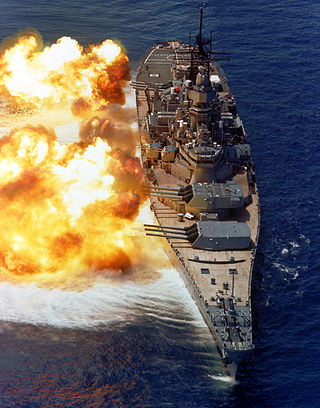
A battleship is a large armored warship with a main battery consisting of large caliber guns. It dominated naval warfare in the late 19th and early 20th centuries.

The United States Navy (USN) is the maritime service branch of the United States Armed Forces and one of the eight uniformed services of the United States. It is the largest and most powerful navy in the world, with the estimated tonnage of its active battle fleet alone exceeding the next 13 navies combined, including 11 allies or partner nations of the United States as of 2015. It has the highest combined battle fleet tonnage and the world's largest aircraft carrier fleet, with eleven in service, two new carriers under construction, and five other carriers planned. With 336,978 personnel on active duty and 101,583 in the Ready Reserve, the United States Navy is the third largest of the United States military service branches in terms of personnel. It has 290 deployable combat vessels and more than 2,623 operational aircraft as of June 2019.

The Japanese Instrument of Surrender was the written agreement that formalized the surrender of the Empire of Japan, marking the end of hostilities in World War II. It was signed by representatives from the Empire of Japan and from the Allied nations: the United States of America, the Republic of China, the United Kingdom of Great Britain and Northern Ireland, the Union of Soviet Socialist Republics, the Commonwealth of Australia, the Dominion of Canada, the Provisional Government of the French Republic, the Kingdom of the Netherlands, and the Dominion of New Zealand. The signing took place on the deck of USS Missouri in Tokyo Bay on 2 September 1945.
Ship commissioning is the act or ceremony of placing a ship in active service and may be regarded as a particular application of the general concepts and practices of project commissioning. The term is most commonly applied to placing a warship in active duty with its country's military forces. The ceremonies involved are often rooted in centuries-old naval tradition.
World War II: The United States agrees to send Lend-Lease aid to the Soviet Union.
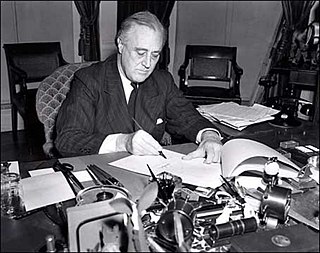
Lend-Lease, formally the Lend-Lease Act and introduced as An Act to Promote the Defense of the United States, was a policy under which the United States supplied the United Kingdom, the Soviet Union and other Allied nations with food, oil, and materiel between 1941 and 1945. It was given on the basis that such help was essential for the defense of the United States; this aid included warships and warplanes, along with other weaponry. It was signed into law on March 11, 1941, and ended on September 20, 1945. In general, the aid was free, although some hardware were returned after the war. Canada, already a belligerent, supplemented its aid to Great Britain with a similar, smaller program called Mutual Aid.
Free French Forces retreat from Bir Hakeim after having successfully delayed the Axis advance.

Free France was a political entity that claimed to be the legitimate government of France following the dissolution of the Third Republic. Led by French general Charles de Gaulle, Free France was established as a government-in-exile in London in June 1940 after the Fall of France during World War II and fought the Axis as an Allied nation with its Free French Forces. Free France also supported the resistance in Nazi-occupied France, known as the French Forces of the Interior, and gained strategic footholds in several French colonies in Africa.

Bir Hakeim is in the Libyan desert at 31°36′00″N 23°29′00″E and is the site of a former Ottoman Empire fort built around the site of an ancient Roman well, dating to the period when the oasis was part of Ottoman Tripolitania. It is about 160 kilometres (99 mi) west of Sollum on the Libyan coast and 80 kilometres (50 mi) south-east of Gazala. Bir Hakeim is best known for the battle of Bir Hakeim, which took place there during World War II.
World War II: The Siege of Malta begins with a series of Italian air raids.

World War II or the Second World War, often abbreviated as WWII or WW2, was a world war that lasted from 1939 to 1945. It involved the vast majority of the world's countries—including all of the great powers—forming two opposing military alliances: the Allies and the Axis powers. World War II was a total war that directly involved more than 100 million personnel from more than 30 countries.

The siege of Malta in World War II was a military campaign in the Mediterranean Theatre. From June 1940 to November 1942, the fight for the control of the strategically important island of the British Crown Colony of Malta pitted the air and naval forces of Fascist Italy and Nazi Germany against the Royal Air Force (RAF) and the Royal Navy.
Second Sino-Japanese War: The Battle of Wuhan starts.
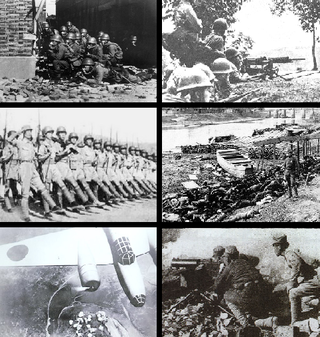
The Second Sino-Japanese War (1937–1945) or War of Resistance was a military conflict that was primarily waged between the Republic of China and the Empire of Japan. The war made up the Chinese theater of the wider Pacific Theater of the Second World War. The beginning of the war is conventionally dated to the Marco Polo Bridge Incident on 7 July 1937, when a dispute between Japanese and Chinese troops in Peking escalated into a full-scale invasion. Some Chinese historians believe that the Japanese invasion of Manchuria on 18 September 1931 marks the start of the war. This full-scale war between the Chinese and the Empire of Japan is often regarded as the beginning of World War II in Asia.

The Battle of Wuhan (武漢之戰), popularly known to the Chinese as the Defense of Wuhan, and to the Japanese as the Capture of Wuhan, was a large-scale battle of the Second Sino-Japanese War. Engagements took place across vast areas of Anhui, Henan, Jiangxi, Zhejiang, and Hubei provinces over a period of four and a half months. It was the longest, the largest, and arguably the most significant battle in the early stages of the Second Sino-Japanese War. More than one million National Revolutionary Army troops from the Fifth and Ninth War Zone were put under the direct command of Chiang Kai-shek, defending Wuhan from the Central China Area Army of the Imperial Japanese Army led by Shunroku Hata. Chinese forces were also supported by the Soviet Volunteer Group, a group of volunteer pilots from Soviet Air Forces.
Great Purge: The Soviet Union under Joseph Stalin executes eight army leaders.

The Great Purge or the Great Terror, also known as the Year of '37 and the Yezhovshchina, was Soviet General Secretary Joseph Stalin's campaign to solidify his power over the party and the state; the purges were also designed to remove the remaining influence of Leon Trotsky as well as other prominent political rivals within the party. It occurred from August 1936 to March 1938.

The Soviet Union, officially the Union of Soviet Socialist Republics (USSR), was a transcontinental country that spanned much of Eurasia from 1922 to 1991. A flagship communist state, it was nominally a federal union of fifteen national republics; in practice, both its government and its economy were highly centralized until its final years. It was a one-party state governed by the Communist Party of the Soviet Union, with the city of Moscow serving as its capital as well as that of its largest and most populous republic: the Russian SFSR. Other major cities included Leningrad, Kiev, Minsk, Tashkent, Alma-Ata, and Novosibirsk. It was the largest country in the world, covering over 22,402,200 square kilometres (8,649,500 sq mi) and spanning eleven time zones.

Joseph Vissarionovich Stalin was a Georgian revolutionary and Soviet political leader who led the Soviet Union from 1924 until his death in 1953. He held power as General Secretary of the Communist Party of the Soviet Union (1922–1952) and Chairman of the Council of Ministers of the Soviet Union (1941–1953). Initially governing the country as part of a collective leadership, he consolidated power to become a dictator by the 1930s. Ideologically adhering to the Leninist interpretation of Marxism, he formalised these ideas as Marxism–Leninism, while his own policies are called Stalinism.
The Case of the Trotskyist Anti-Soviet Military Organization, also known as the Military Case or the Tukhachevsky Case, was a 1937 secret trial of the high command of the Red Army, a part of the Great Purge.
The London International Surrealist Exhibition opens.
The International Surrealist Exhibition was held from 11 June to 4 July 1936 at the New Burlington Galleries, near Savile Row in London's Mayfair, England.
Inventor Edwin Armstrong gives the first public demonstration of FM broadcasting in the United States at Alpine, New Jersey.
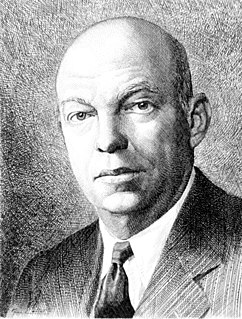
Edwin Howard Armstrong was an American electrical engineer and inventor, who developed FM radio and the superheterodyne receiver system. He held 42 patents and received numerous awards, including the first Medal of Honor awarded by the Institute of Radio Engineers, the French Legion of Honor, the 1941 Franklin Medal and the 1942 Edison Medal. He was inducted into the National Inventors Hall of Fame and included in the International Telecommunication Union's roster of great inventors. Armstrong attended Columbia University, and served as a professor there for most of his life.

Frequency modulation (FM) is the encoding of information in a carrier wave by varying the instantaneous frequency of the wave. The technology is used in telecommunications, radio broadcasting, signal processing, and computing.

Alpine is a borough in Bergen County, New Jersey, United States, approximately 15 miles (24 km) north of Midtown Manhattan. It is the easternmost community in New Jersey.
During their national convention in Chicago, Republican Party leaders gathered in negotiations at The Blackstone Hotel to select their presidential candidate, leading to the phrase "smoke-filled room".

The 1920 Republican National Convention nominated Ohio Senator Warren G. Harding for president and Massachusetts Governor Calvin Coolidge for vice president. The convention was held in Chicago, Illinois, at the Chicago Coliseum from June 8 to June 12, 1920, with 940 delegates. Under convention rules, a majority plus one, or at least 471 of the 940 delegates, was necessary for a nomination.

The Republican Party, also referred to as the GOP, is one of the two major contemporary political parties in the United States. The GOP was founded in 1854 by anti-slavery activists who opposed the Kansas–Nebraska Act, which allowed for the potential expansion of chattel slavery into the western territories. Since Ronald Reagan's presidency in the 1980s, conservatism has been the dominant ideology of the GOP. It has been the main political rival of the Democratic Party since the mid-1850s.

The Blackstone Hotel is a historic 290-foot (88 m) 21-story hotel on the corner of Michigan Avenue and Balbo Drive in the Michigan Boulevard Historic District in the Loop community area of Chicago, Illinois. Built between 1908 and 1910, it is on the National Register of Historic Places. The Blackstone is famous for hosting celebrity guests, including numerous U.S. presidents, for which it was known as the "Hotel of Presidents" for much of the 20th century, and for contributing the term "smoke-filled room" to political parlance.

In U.S. political jargon, a smoke-filled room is an exclusive, sometimes secret political gathering or round-table-style decision-making process. The phrase is generally used to suggest an inner circle of power brokers, a cabal of the powerful or well-connected acting to make decisions without regard for the will of the larger group.
During the U.S. Republican National Convention in Chicago, U.S. Republican Party leaders gathered in a room at the Blackstone Hotel to come to a consensus on their candidate for the U.S. presidential election, leading the Associated Press to coin the political phrase "smoke-filled room".

The 1920 Republican National Convention nominated Ohio Senator Warren G. Harding for president and Massachusetts Governor Calvin Coolidge for vice president. The convention was held in Chicago, Illinois, at the Chicago Coliseum from June 8 to June 12, 1920, with 940 delegates. Under convention rules, a majority plus one, or at least 471 of the 940 delegates, was necessary for a nomination.

The Republican Party, also referred to as the GOP, is one of the two major contemporary political parties in the United States. The GOP was founded in 1854 by anti-slavery activists who opposed the Kansas–Nebraska Act, which allowed for the potential expansion of chattel slavery into the western territories. Since Ronald Reagan's presidency in the 1980s, conservatism has been the dominant ideology of the GOP. It has been the main political rival of the Democratic Party since the mid-1850s.

The Blackstone Hotel is a historic 290-foot (88 m) 21-story hotel on the corner of Michigan Avenue and Balbo Drive in the Michigan Boulevard Historic District in the Loop community area of Chicago, Illinois. Built between 1908 and 1910, it is on the National Register of Historic Places. The Blackstone is famous for hosting celebrity guests, including numerous U.S. presidents, for which it was known as the "Hotel of Presidents" for much of the 20th century, and for contributing the term "smoke-filled room" to political parlance.

The 1920 United States presidential election was the 34th quadrennial presidential election, held on Tuesday, November 2, 1920. In the first election held after the end of World War I and the first election after the ratification of the Nineteenth Amendment, Republican Senator Warren G. Harding of Ohio defeated Democratic Governor James M. Cox of Ohio.

The Associated Press (AP) is an American non-profit news agency headquartered in New York City. Founded in 1846, it operates as a cooperative, unincorporated association. It produces news reports that are distributed to its members, U.S. newspapers and broadcasters. The AP has earned 56 Pulitzer Prizes, including 34 for photography, since the award was established in 1917. It is also known for publishing the widely used AP Stylebook.

In U.S. political jargon, a smoke-filled room is an exclusive, sometimes secret political gathering or round-table-style decision-making process. The phrase is generally used to suggest an inner circle of power brokers, a cabal of the powerful or well-connected acting to make decisions without regard for the will of the larger group.
Sir Barton wins the Belmont Stakes, becoming the first horse to win the U.S. Triple Crown.

Sir Barton was a champion American Thoroughbred racehorse who is the first winner of the American Triple Crown.

The Belmont Stakes is an American Grade I stakes race for three-year-old Thoroughbreds run at Belmont Park in Elmont, New York. It is run over 1.5 miles. Colts and geldings carry a weight of 126 pounds (57 kg); fillies carry 121 pounds (55 kg). The race, nicknamed The Test of the Champion, The Test of Champions and The Run for the Carnations, is the traditional third and final leg of the Triple Crown. It is usually held on the first or second Saturday in June, five weeks after the Kentucky Derby and three weeks after the Preakness Stakes. The 1973 Belmont Stakes and Triple Crown winner Secretariat holds the track record of 2:24.

The Triple Crown of Thoroughbred Racing, often shortened to Triple Crown, is a series of horse races for Thoroughbreds, often restricted to three-year-olds. Winning all three of these Thoroughbred horse races is considered the greatest accomplishment in Thoroughbred racing. The term originated in mid-19th-century England and nations where Thoroughbred racing is popular each have their own Triple Crown series.
Alexander (pictured) was crowned King of Greece, succeeding his father Constantine I, who had abdicated.

Alexander was King of Greece from 11 June 1917 until his death three years later, at the age of 27, from the effects of a monkey bite.

The Kingdom of Greece was ruled by the House of Wittelsbach between 1832 and 1862 and by the House of Glücksburg from 1863 to 1924, temporarily abolished during the Second Hellenic Republic, and from 1935 to 1973, when it was once more abolished and replaced by the Third Hellenic Republic.

Constantine I was King of Greece from 18 March 1913 to 11 June 1917 and from 19 December 1920 to 27 September 1922. He was commander-in-chief of the Hellenic Army during the unsuccessful Greco-Turkish War of 1897 and led the Greek forces during the successful Balkan Wars of 1912–1913, in which Greece expanded to include Thessaloniki, doubling in area and population. He succeeded to the throne of Greece on 18 March 1913, following his father's assassination.
King Alexander assumes the throne of Greece after his father, Constantine I, is deemed to have abdicated under pressure from allied armies occupying Athens.

Alexander was King of Greece from 11 June 1917 until his death three years later, at the age of 27, from the effects of a monkey bite.
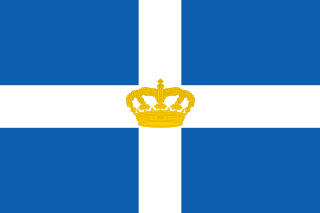
The Kingdom of Greece was established in 1832 and was the successor state to the First Hellenic Republic. It was internationally recognised by the Treaty of Constantinople, where Greece also secured its full independence from the Ottoman Empire after nearly four centuries.

Constantine I was King of Greece from 18 March 1913 to 11 June 1917 and from 19 December 1920 to 27 September 1922. He was commander-in-chief of the Hellenic Army during the unsuccessful Greco-Turkish War of 1897 and led the Greek forces during the successful Balkan Wars of 1912–1913, in which Greece expanded to include Thessaloniki, doubling in area and population. He succeeded to the throne of Greece on 18 March 1913, following his father's assassination.

The Triple Entente describes the informal understanding between the Russian Empire, the French Third Republic, and the United Kingdom of Great Britain and Ireland as well as Romania which joined later on. It was built upon the Franco-Russian Alliance of 1894, the Entente Cordiale of 1904 between Paris and London, and the Anglo-Russian Entente of 1907. It formed a powerful counterweight to the Triple Alliance of Germany, Austria-Hungary, and Italy. The Triple Entente, unlike the Triple Alliance or the Franco-Russian Alliance itself, was not an alliance of mutual defence.
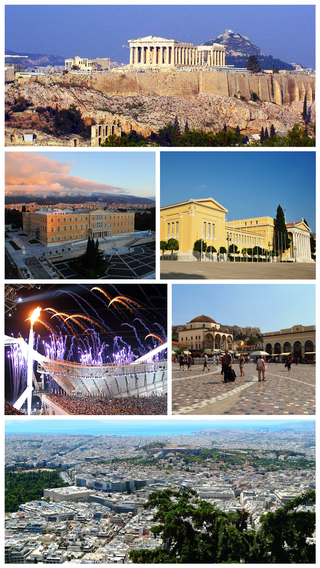
Athens is both the capital and largest city of Greece. With a population close to four million, it is also the seventh largest city in the European Union. Athens dominates and is the capital of the Attica region and is one of the world's oldest cities, with its recorded history spanning over 3,400 years and its earliest human presence beginning somewhere between the 11th and 7th millennia BC.
A group of Serbian officers storms the royal palace and assassinates King Alexander I of Serbia and his wife, Queen Draga.

The May Coup was a coup d'état involving the assassination of the Serbian King Alexander Obrenović and his consort Queen Draga inside the Royal Palace in Belgrade on the night of 10–11 June [O.S. 28–29 May] 1903. This act resulted in the extinction of the Obrenović dynasty that had ruled the Kingdom of Serbia since the middle of the 19th century. A group of Serbian Army officers led by captain Dragutin Dimitrijević (Apis) organized the assassination. After the May Coup, the throne passed to King Peter I of Serbia.
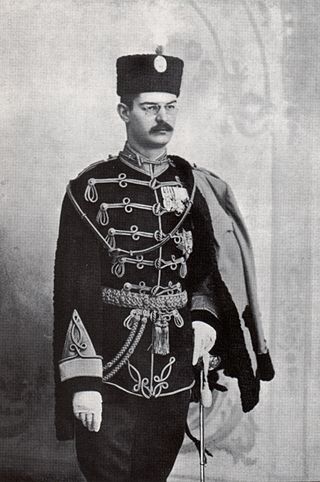
Alexander I reigned as the king of Serbia from 1889 to 1903 when he and his wife, Draga Mašin, were assassinated by a group of Royal Serbian Army officers, led by Captain Dragutin Dimitrijević.

Draginja "Draga" Obrenović, formerly Mašin (Машин), was the Queen consort of Serbia as the wife of King Aleksandar Obrenović. She was formerly a lady-in-waiting to Aleksandar's mother, Queen Natalija.
The boundaries of the Colony of New Zealand are extended by the UK to include the Cook Islands.

The Colony of New Zealand was a Crown colony of the United Kingdom of Great Britain and Ireland that encompassed the islands of New Zealand from 1841 to 1907. The power of the British government was vested in the Governor of New Zealand, as the representative of their monarch. The colony had three capitals: Old Russell in 1841; Auckland from 1841 to 1865; and Wellington, which was the capital until the colony's reorganisation into a Dominion, and continues to be the capital of New Zealand till the present day.

The Cook Islands is a self-governing island country in the South Pacific Ocean in free association with New Zealand. It comprises 15 islands whose total land area is 240 square kilometres (93 sq mi). The Cook Islands' Exclusive Economic Zone (EEZ) covers 1,960,027 square kilometres (756,771 sq mi) of ocean.
The Hundred Days' Reform, a planned movement to reform social, political, and educational institutions in China, is started by the Guangxu Emperor, but is suspended by Empress Dowager Cixi after 104 days. (The failed reform led to the abolition of the Imperial examination in 1905.)
The Hundred Days' Reform or Wuxu Reform was a failed 103-day national, cultural, political, and educational reform movement that occurred from 11 June to 22 September 1898 during the late Qing dynasty. It was undertaken by the young Guangxu Emperor and his reform-minded supporters. Following the issuing of the reformative edicts, a coup d'état was perpetrated by powerful conservative opponents led by Empress Dowager Cixi.
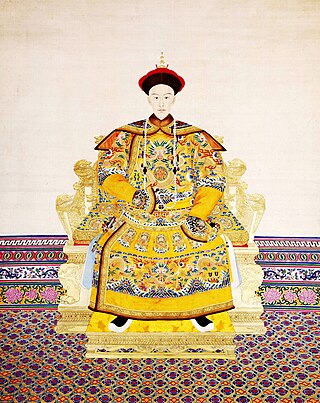
The Guangxu Emperor, personal name Zaitian, was the tenth Emperor of the Qing dynasty, and the ninth Qing emperor to rule over China proper. His reign lasted from 1875 to 1908, but in practice he ruled, without Empress Dowager Cixi's influence, only from 1889 to 1898. He initiated the Hundred Days' Reform, but was abruptly stopped when the empress dowager launched a coup in 1898, after which he became powerless and was held under house arrest until his death by poisoning. His era name, "Guangxu", means "glorious succession".

Empress Dowager Cixi, of the Manchu Yehe Nara clan, was a Chinese noblewoman, concubine and later regent who effectively controlled the Chinese government in the late Qing dynasty for 47 years, from 1861 until her death in 1908. Selected as a concubine of the Xianfeng Emperor in her adolescence, she gave birth to a son, Zaichun, in 1856. After the Xianfeng Emperor's death in 1861, the young boy became the Tongzhi Emperor, and she assumed the role of co-empress dowager, alongside the Emperor's widow, Empress Dowager Ci'an. Cixi ousted a group of regents appointed by the late emperor and assumed the regency along with Ci'an, who later mysteriously died. Cixi then consolidated control over the dynasty when she installed her nephew as the Guangxu Emperor at the death of her son, the Tongzhi Emperor, in 1875. This was contrary to the traditional rules of succession of the Qing dynasty that had ruled China since 1644.

The imperial examination, or keju was a civil-service examination system in Imperial China, administered for the purpose of selecting candidates for the state bureaucracy. The concept of choosing bureaucrats by merit rather than by birth started early in Chinese history, but using written examinations as a tool of selection started in earnest during the Sui dynasty (581–618) then into the Tang dynasty of 618–907. The system became dominant during the Song dynasty (960–1279) and lasted for almost a millennium until its abolition in the late Qing dynasty reforms in 1905. Aspects of the imperial examination still exist for entry into the civil service of contemporary China, in both the People's Republic of China (PRC) and the Republic of China (ROC).
1905 (MCMV) was a common year starting on Sunday of the Gregorian calendar and a common year starting on Saturday of the Julian calendar, the 1905th year of the Common Era (CE) and Anno Domini (AD) designations, the 905th year of the 2nd millennium, the 5th year of the 20th century, and the 6th year of the 1900s decade. As of the start of 1905, the Gregorian calendar was 13 days ahead of the Julian calendar, which remained in localized use until 1923.
Paris–Bordeaux–Paris, sometimes called the first automobile race in history or the "first motor race", takes place.
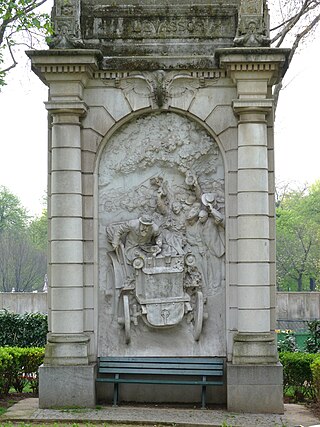
The Paris–Bordeaux–Paris Trail race of June 1895 is sometimes called the "first motor race", although it did not fit modern competition where the fastest is the winner. It was a win for Émile Levassor, who came first after completing the 1,178km race in 48 hours, almost six hours before second place. However, the official winner was Paul Koechlin, who finished third in his Peugeot, exactly 11 hours slower than Levassor, but the official race regulations had been established for four-seater cars, while Levassor and runner-up Louis Rigoulot were driving two-seater cars.
The Limelight Department, one of the world's first film studios, is officially established in Melbourne, Australia.
The Limelight Department was one of the world's first film studios, beginning in 1898, operated by The Salvation Army in Melbourne, Australia. The Limelight Department produced evangelistic material for use by the Salvation Army, including lantern slides as early as 1891, as well as private and government contracts. In its 19 years of operation, the Limelight Department produced about 300 films of various lengths, making it one of largest film producers of its time.
A film studio is a major entertainment company or motion picture company that has its own privately owned studio facility or facilities that are used to make films, which is handled by the production company. Most firms in the entertainment industry have never owned their own studios, but have rented space from other companies.

Melbourne is the capital and most populous city of the Australian state of Victoria, and the second-most populous city in both Australia and Oceania. Its name generally refers to a 9,993 km2 (3,858 sq mi) metropolitan area known as Greater Melbourne, comprising an urban agglomeration of 31 local municipalities, although the name is also used specifically for the local municipality of City of Melbourne based around its central business area. The metropolis occupies much of the northern and eastern coastlines of Port Phillip Bay and spreads into the Mornington Peninsula, West Gippsland, as well as the hinterlands towards the Yarra Valley, the Dandenong and Macedon Ranges. It has a population over 5 million, mostly residing to the east side of the city centre, and its inhabitants are commonly referred to as "Melburnians".
The Naval Battle of the Riachuelo is fought on the rivulet Riachuelo (Argentina), between the Paraguayan Navy on one side and the Brazilian Navy on the other. The Brazilian victory was crucial for the later success of the Triple Alliance (Brazil, Uruguay, and Argentina) in the Paraguayan War.

The Battle of Riachuelo was a large and decisive naval battle of the Paraguayan War between Paraguay and the Empire of Brazil. By late 1864, Paraguay had scored a series of victories in the war, but on 11 June 1865, its naval defeat by the Brazilians on the Paraná River began to turn the tide in favor of the allies.

Argentina, officially the Argentine Republic, is a country in the southern half of South America. Argentina covers an area of 2,780,400 km2 (1,073,500 sq mi), making it the second-largest country in South America after Brazil, the fourth-largest country in the Americas, and the eighth-largest country in the world. It shares the bulk of the Southern Cone with Chile to the west, and is also bordered by Bolivia and Paraguay to the north, Brazil to the northeast, Uruguay and the South Atlantic Ocean to the east, and the Drake Passage to the south. Argentina is a federal state subdivided into twenty-three provinces, and one autonomous city, which is the federal capital and largest city of the nation, Buenos Aires. The provinces and the capital have their own constitutions, but exist under a federal system. Argentina claims sovereignty over the Falkland Islands, South Georgia and the South Sandwich Islands, and a part of Antarctica.
The Paraguayan Navy is the maritime force of the Armed Forces of Paraguay, in charge of the defense of Paraguay's waters despite not having direct access to the sea.

The Brazilian Navy is the naval service branch of the Brazilian Armed Forces, responsible for conducting naval operations. The Brazilian Navy is the largest navy in Latin America and the second largest navy in the Americas after the United States Navy.

The Treaty of the Triple Alliance was a treaty that allied the Empire of Brazil, Argentina, and Uruguay against Paraguay. Signed in 1865, after the outbreak of the Paraguayan War, its articles prescribed the allies' actions both during and after the war. The war led to the near-annihilation of Paraguay.

Brazil, officially the Federative Republic of Brazil, is the largest country in both South America and Latin America. At 8.5 million square kilometers (3,300,000 sq mi) and with over 217 million people, Brazil is the world's fifth-largest country by area and the seventh most populous. Its capital is Brasília, and its most populous city is São Paulo. The federation is composed of the union of the 26 states and the Federal District. It is the largest country to have Portuguese as an official language and the only one in the Americas; one of the most multicultural and ethnically diverse nations, due to over a century of mass immigration from around the world; and the most populous Roman Catholic-majority country.

Uruguay, officially the Oriental Republic of Uruguay, is a country in South America. It shares borders with Argentina to its west and southwest and Brazil to its north and northeast; while bordering the Río de la Plata to the south and the Atlantic Ocean to the southeast. It is part of the Southern Cone region of South America. Uruguay covers an area of approximately 181,034 square kilometers (69,898 sq mi) and has a population of an estimated 3.4 million, of whom around 2 million live in the metropolitan area of its capital and largest city, Montevideo.

The Paraguayan War, also known as the War of the Triple Alliance, was a South American war that lasted from 1864 to 1870. It was fought between Paraguay and the Triple Alliance of Argentina, the Empire of Brazil, and Uruguay. It was the deadliest and bloodiest inter-state war in Latin American history. Paraguay sustained large casualties, but the approximate numbers are disputed. Paraguay was forced to cede disputed territory to Argentina and Brazil. The war began in late 1864, as a result of a conflict between Paraguay and Brazil caused by the Uruguayan War. Argentina and Uruguay entered the war against Paraguay in 1865, and it then became known as the "War of the Triple Alliance".
Prince Afonso (pictured) died at the age of two, leaving his father Pedro II, the last emperor of Brazil, without a male heir.

Dom Afonso was the Prince Imperial and heir apparent to the throne of the Empire of Brazil. Born in Rio de Janeiro, he was the eldest child of Emperor Dom Pedro II and Dona Teresa Cristina of the Two Sicilies, and thus a member of the Brazilian branch of the House of Braganza.

Dom Pedro II, nicknamed "the Magnanimous", was the second and last monarch of the Empire of Brazil, reigning for over 58 years. He was born in Rio de Janeiro, the seventh child of Emperor Dom Pedro I of Brazil and Empress Dona Maria Leopoldina and thus a member of the Brazilian branch of the House of Braganza. His father's abrupt abdication and departure to Europe in 1831 left the five-year-old as emperor and led to a grim and lonely childhood and adolescence, obliged to spend his time studying in preparation for rule. His experiences with court intrigues and political disputes during this period greatly affected his later character; he grew into a man with a strong sense of duty and devotion toward his country and his people, yet increasingly resentful of his role as monarch.
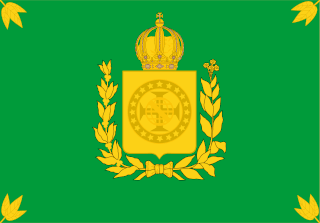
The monarchs of Brazil were the imperial heads of state and hereditary rulers of Brazil from the House of Braganza that reigned from the creation of the Brazilian monarchy in 1815 as a constituent kingdom of the United Kingdom of Portugal, Brazil and the Algarves until the republican coup d'état that overthrew the Empire of Brazil in 1889.
Tensions between Yankees and Irish Americans in Boston, Massachusetts, erupted in the Broad Street Riot.
The term Yankee and its contracted form Yank have several interrelated meanings, all referring to people from the United States. Its various senses depend on the context, and may refer to New Englanders, residents of the Northern United States, or Americans in general. According to the Oxford English Dictionary, it is "a nickname for a native or inhabitant of New England, or, more widely, of the northern States generally".

Irish Americans or Hiberno-Americans are Americans who have full or partial ancestry from Ireland. About 32 million Americans — 9.7% of the total population — identified as being Irish in the 2020 American Community Survey conducted by the U.S. Census Bureau.
The Broad Street Riot was a massive brawl that occurred in Boston, Massachusetts, on June 11, 1837, between Irish Americans and Yankee firefighters. An estimated 800 people were involved in the actual fighting, with at least 10,000 spectators egging them on. Nearby homes were sacked and vandalized, and the occupants beaten. Many on both sides were seriously injured, but no immediate deaths resulted from the violence. After raging for hours, the riot was quelled when Mayor Samuel Eliot called in the state militia.
The Broad Street Riot occurs in Boston, fueled by ethnic tensions between Yankees and Irish.
The Broad Street Riot was a massive brawl that occurred in Boston, Massachusetts, on June 11, 1837, between Irish Americans and Yankee firefighters. An estimated 800 people were involved in the actual fighting, with at least 10,000 spectators egging them on. Nearby homes were sacked and vandalized, and the occupants beaten. Many on both sides were seriously injured, but no immediate deaths resulted from the violence. After raging for hours, the riot was quelled when Mayor Samuel Eliot called in the state militia.
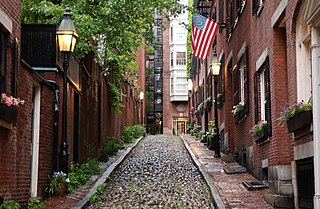
Boston, officially the City of Boston, is the state capital and most populous city of the Commonwealth of Massachusetts, as well as the cultural and financial center of the New England region of the United States. It is the 24th-most populous city in the country. The city boundaries encompass an area of about 48.4 sq mi (125 km2) and a population of 675,647 as of 2020. It is the seat of Suffolk County. The city is the economic and cultural anchor of a substantially larger metropolitan area known as Greater Boston, a metropolitan statistical area (MSA) home to a census-estimated 4.8 million people in 2016 and ranking as the tenth-largest MSA in the country. A broader combined statistical area (CSA), generally corresponding to the commuting area and including Providence, Rhode Island, is home to approximately 8.2 million people, making it the sixth most populous in the United States.
The term Yankee and its contracted form Yank have several interrelated meanings, all referring to people from the United States. Its various senses depend on the context, and may refer to New Englanders, residents of the Northern United States, or Americans in general. According to the Oxford English Dictionary, it is "a nickname for a native or inhabitant of New England, or, more widely, of the northern States generally".
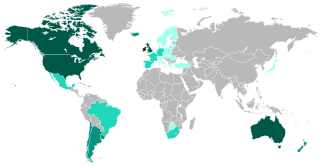
The Irish are an ethnic group and nation native to the island of Ireland, who share a common history and culture. There have been humans in Ireland for about 33,000 years, and it has been continually inhabited for more than 10,000 years. For most of Ireland's recorded history, the Irish have been primarily a Gaelic people. From the 9th century, small numbers of Vikings settled in Ireland, becoming the Norse-Gaels. Anglo-Normans also conquered parts of Ireland in the 12th century, while England's 16th/17th-century conquest and colonisation of Ireland brought many English and Lowland Scots to parts of the island, especially the north. Today, Ireland is made up of the Republic of Ireland and Northern Ireland. The people of Northern Ireland hold various national identities including British, Irish, Northern Irish or some combination thereof.
The first cornerstone is laid for Fort Hamilton in New York City.
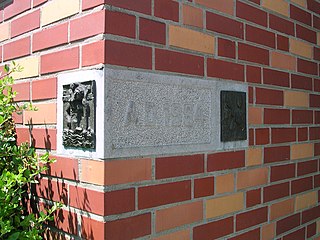
The cornerstone is the first stone set in the construction of a masonry foundation. All other stones will be set in reference to this stone, thus determining the position of the entire structure.
Fort Hamilton is a United States Army installation in the southwestern corner of the New York City borough of Brooklyn, surrounded by the communities of Bay Ridge and Dyker Heights. It is one of several posts that are part of the region which is headquartered by the Military District of Washington. Its mission is to provide the New York metropolitan area with military installation support for the Army National Guard and the United States Army Reserve. The original fort was completed in 1831, with major additions made in the 1870s and 1900s. However, all defenses except about half of the original fort have been demolished or buried.
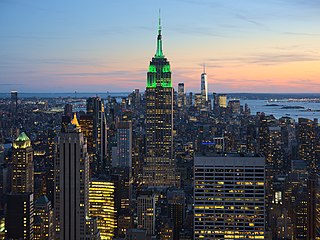
New York, often called New York City or NYC for short, is the most populous city in the United States. With a 2020 population of 8,804,190 distributed over 300.46 square miles (778.2 km2), New York City is also the most densely populated major city in the United States, and is more than twice as populous as second-place Los Angeles. New York City lies at the southern tip of New York State, and constitutes the geographical and demographic center of both the Northeast megalopolis and the New York metropolitan area, the largest metropolitan area in the world by urban landmass. With over 20.1 million people in its metropolitan statistical area and 23.5 million in its combined statistical area as of 2020, New York is one of the world's most populous megacities, and over 58 million people live within 250 mi (400 km) of the city. New York City is a global cultural, financial, and media center with a significant influence on commerce, health care and life sciences, entertainment, research, technology, education, politics, tourism, dining, art, fashion, and sports. New York is the most photographed city in the world. Home to the headquarters of the United Nations, New York is an important center for international diplomacy, an established safe haven for global investors, and is sometimes described as the capital of the world.
A fire consumes large portions of Detroit in the Michigan Territory.
Detroit, the largest city in the state of Michigan, was settled in 1701 by French colonists. It is the first European settlement above tidewater in North America. Founded as a New France fur trading post, it began to expand during the 19th century with American settlement around the Great Lakes. By 1920, based on the booming auto industry and immigration, it became a world-class industrial powerhouse and the fourth-largest city in the United States. It held that standing through the mid-20th century.

Detroit is the largest city in the U.S. state of Michigan. It is also the largest U.S. city on the United States–Canada border, and the seat of government of Wayne County. The City of Detroit had a population of 639,111 at the 2020 census, making it the 27th-most populous city in the United States. The metropolitan area, known as Metro Detroit, is home to 4.3 million people, making it the second-largest in the Midwest after the Chicago metropolitan area, and the 14th-largest in the United States. Regarded as a major cultural center, Detroit is known for its contributions to music, art, architecture and design, in addition to its historical automotive background. Time named Detroit as one of the fifty World's Greatest Places of 2022 to explore.

The Territory of Michigan was an organized incorporated territory of the United States that existed from June 30, 1805, until January 26, 1837, when the final extent of the territory was admitted to the Union as the State of Michigan. Detroit was the territorial capital.
Russian explorer Gerasim Izmailov reaches Alaska.
Gerasim Grigoryevich Izmaylov was a Russian navigator involved in the Russian colonization of the Americas and in the establishment of the colonies of Russian America in Alaska. He was responsible for the first detailed maps of the Aleutian Islands.
The Continental Congress appoints Thomas Jefferson, John Adams, Benjamin Franklin, Roger Sherman, and Robert R. Livingston to the Committee of Five to draft a declaration of independence.

The Continental Congress was a series of legislative bodies, with some executive function, for thirteen of Britain's colonies in North America, and the newly declared United States just before, during, and after the American Revolutionary War. The term "Continental Congress" most specifically refers to the First and Second Congresses of 1774–1781 and, at the time, was also used to refer to the Congress of the Confederation of 1781–1789, which operated as the first national government of the United States until being replaced under the Constitution of the United States. Thus, the term covers the three congressional bodies of the Thirteen Colonies and the new United States that met between 1774 and 1789.

Thomas Jefferson was an American statesman, diplomat, lawyer, architect, philosopher, and Founding Father who served as the third president of the United States from 1801 to 1809. He was previously the nation's second vice president under John Adams and the first United States secretary of state under George Washington. The principal author of the Declaration of Independence, Jefferson was a proponent of democracy, republicanism, and individual rights, motivating American colonists to break from the Kingdom of Great Britain and form a new nation. He produced formative documents and decisions at state, national, and international levels.

John Adams was an American statesman, attorney, diplomat, writer, and Founding Father who served as the second president of the United States from 1797 to 1801. Before his presidency, he was a leader of the American Revolution that achieved independence from Great Britain, and during the war served as a diplomat in Europe. He was twice elected vice president, serving from 1789 to 1797 in a prestigious role with little power. Adams was a dedicated diarist and regularly corresponded with many important contemporaries, including his wife and adviser Abigail Adams as well as his friend and rival Thomas Jefferson.

Benjamin Franklin was an American polymath who was active as a writer, scientist, inventor, statesman, diplomat, printer, publisher, and political philosopher. Among the leading intellectuals of his time, Franklin was one of the Founding Fathers of the United States, a drafter and signer of the United States Declaration of Independence, and the first United States Postmaster General.

Roger Sherman was an American statesman, lawyer, and a Founding Father of the United States. He is the only person to sign four of the great state papers of the United States related to the founding: the Continental Association, Declaration of Independence, Articles of Confederation, and U.S. Constitution. He also signed the 1774 Petition to the King.

Robert Robert Livingston was an American lawyer, politician, and diplomat from New York, as well as a Founding Father of the United States. He was known as "The Chancellor", after the high New York state legal office he held for 25 years. He was a member of the Committee of Five that drafted the Declaration of Independence, along with Thomas Jefferson, Benjamin Franklin, John Adams, and Roger Sherman. Livingston administered the oath of office to George Washington when he assumed the presidency April 30, 1789. Livingston was also elected as a member of the American Philosophical Society in 1801.

The Committee of Five of the Second Continental Congress was a group of five members who drafted and presented to the full Congress in Pennsylvania State House what would become the United States Declaration of Independence of July 4, 1776. This Declaration committee operated from June 11, 1776, until July 5, 1776, the day on which the Declaration was published.

The United States Declaration of Independence, formally The unanimous Declaration of the thirteen united States of America, is the pronouncement and founding document adopted by the Second Continental Congress meeting at Pennsylvania State House in Philadelphia, Pennsylvania, on July 4, 1776. Enacted during the American Revolution, the Declaration explains why the Thirteen Colonies at war with the Kingdom of Great Britain regarded themselves as thirteen independent sovereign states, no longer subject to British colonial rule. With the Declaration, these new states took a collective first step in forming the United States of America and, de facto, formalized the American Revolutionary War, which had been ongoing since April 1775.
The Battle of Machias, the first naval engagement of the American Revolutionary War, commenced in and around the port of Machias in what is now eastern Maine.

The Battle of Machias was an early naval engagement of the American Revolutionary War, also known as the Battle of the Margaretta, fought around the port of Machias, Maine.

The American Revolutionary War, also known as the Revolutionary War or American War of Independence, secured American independence from Great Britain. Fighting began on April 19, 1775, followed by the Lee Resolution on July 2, 1776, and the Declaration of Independence on July 4, 1776. The American Patriots were supported by the Kingdom of France and, to a lesser extent, the Dutch Republic and the Spanish Empire, in a conflict taking place in North America, the Caribbean, and the Atlantic Ocean.
Machias is a town in and the county seat of Washington County in Down East Maine, United States. As of the 2020 census, the town population was 2,060. It is home to the University of Maine at Machias and Machias Valley Airport, a small public airport owned by the town. The word Machias roughly translates in Passamaquoddy as "bad little falls", a reference to the Machias River. Machias is best known as the site of the first naval battle of the American Revolution.

Maine is a state in the New England and Northeastern regions of the United States. It borders New Hampshire to the west, the Gulf of Maine to the southeast, and the Canadian provinces of New Brunswick and Quebec to the northeast and northwest, respectively. The largest state by total area in New England, Maine is the 12th-smallest by area, the 9th-least populous, the 13th-least densely populated, and the most rural of the 50 U.S. states. It is also the northeasternmost among the contiguous United States, the northernmost state east of the Great Lakes, the only state whose name consists of a single syllable, and the only state to border exactly one other U.S. state. Approximately half the area of Maine lies on each side of the 45th parallel north in latitude. The most populous city in Maine is Portland, while its capital is Augusta.
The American Revolutionary War's first naval engagement, the Battle of Machias, results in the capture of a small British naval vessel.

The American Revolutionary War, also known as the Revolutionary War or American War of Independence, secured American independence from Great Britain. Fighting began on April 19, 1775, followed by the Lee Resolution on July 2, 1776, and the Declaration of Independence on July 4, 1776. The American Patriots were supported by the Kingdom of France and, to a lesser extent, the Dutch Republic and the Spanish Empire, in a conflict taking place in North America, the Caribbean, and the Atlantic Ocean.

The Battle of Machias was an early naval engagement of the American Revolutionary War, also known as the Battle of the Margaretta, fought around the port of Machias, Maine.
British explorer Captain James Cook runs aground on the Great Barrier Reef.

James Cook was a British explorer, navigator, cartographer, and captain in the British Royal Navy, famous for his three voyages between 1768 and 1779 in the Pacific Ocean and to New Zealand and Australia in particular. He made detailed maps of Newfoundland prior to making three voyages to the Pacific, during which he achieved the first recorded European contact with the eastern coastline of Australia and the Hawaiian Islands, and the first recorded circumnavigation of New Zealand.

The Great Barrier Reef is the world's largest coral reef system composed of over 2,900 individual reefs and 900 islands stretching for over 2,300 kilometres (1,400 mi) over an area of approximately 344,400 square kilometres (133,000 sq mi). The reef is located in the Coral Sea, off the coast of Queensland, Australia, separated from the coast by a channel 100 miles wide in places and over 200 feet deep. The Great Barrier Reef can be seen from outer space and is the world's biggest single structure made by living organisms. This reef structure is composed of and built by billions of tiny organisms, known as coral polyps. It supports a wide diversity of life and was selected as a World Heritage Site in 1981. CNN labelled it one of the seven natural wonders of the world in 1997. Australian World Heritage places included it in its list in 2007. The Queensland National Trust named it a state icon of Queensland in 2006.
Denmark adopts the characteristic Nordic Cross flag later taken up by all other Scandinavian countries.
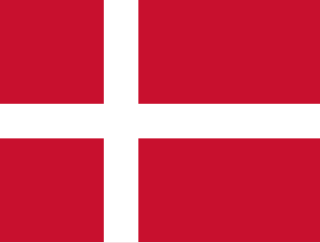
Denmark is a Nordic country in Northern Europe. It is the most populous and politically central constituent of the Kingdom of Denmark, a constitutionally unitary state that includes the autonomous territories of the Faroe Islands and Greenland in the North Atlantic Ocean. European Denmark is the southernmost of the Scandinavian countries, lying southwest of Sweden, south of Norway, and north of Germany.
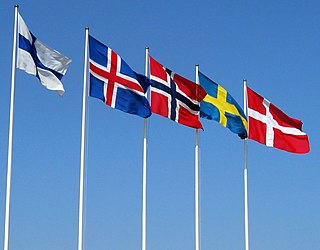
A Nordic cross flag is a flag bearing the design of the Nordic or Scandinavian cross, a cross symbol in a rectangular field, with the centre of the cross shifted towards the hoist.
Philip II of Spain recognized the sovereign rights of the principalía, the local nobles and chieftains of the Philippines who had converted to Catholicism.
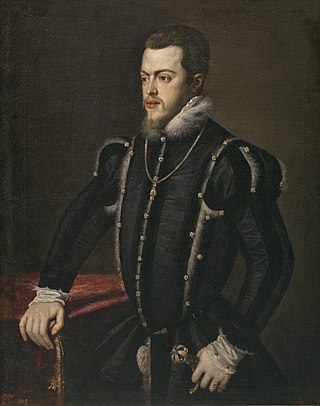
Philip II, also known as Philip the Prudent, was King of Spain from 1556, King of Portugal from 1580, and King of Naples and Sicily from 1554 until his death in 1598. He was also jure uxoris King of England and Ireland from his marriage to Queen Mary I in 1554 until her death in 1558. He was also Duke of Milan from 1540. From 1555, he was Lord of the Seventeen Provinces of the Netherlands.

The principalía or noble class was the ruling and usually educated upper class in the pueblos of Spanish Philippines, comprising the gobernadorcillo, tenientes de justicia, and the cabezas de barangay who governed the districts. Also included in this class were former gobernadorcillos or municipal captains, and municipal lieutenants in good standing during their term of office.
Philip II recognizes the rights and privileges of the local nobles and chieftains in the Philippines, which paved way to the stabilization of the rule of the Principalía (an elite ruling class of native nobility in Spanish Philippines).

Philip II, also known as Philip the Prudent, was King of Spain from 1556, King of Portugal from 1580, and King of Naples and Sicily from 1554 until his death in 1598. He was also jure uxoris King of England and Ireland from his marriage to Queen Mary I in 1554 until her death in 1558. He was also Duke of Milan from 1540. From 1555, he was Lord of the Seventeen Provinces of the Netherlands.

The Philippines, officially the Republic of the Philippines, is an archipelagic country in Southeast Asia. It is situated in the western Pacific Ocean and consists of around 7,641 islands that are broadly categorized under three main geographical divisions from north to south: Luzon, Visayas, and Mindanao. The Philippines is bounded by the South China Sea to the west, the Philippine Sea to the east, and the Celebes Sea to the southwest. It shares maritime borders with Taiwan to the north, Japan to the northeast, Palau to the east and southeast, Indonesia to the south, Malaysia to the southwest, Vietnam to the west, and China to the northwest. The Philippines covers an area of 300,000 km2 (120,000 sq mi) and, as of 2021, it had a population of around 109 million people, making it the world's thirteenth-most populous country. The Philippines has diverse ethnicities and cultures throughout its islands. Manila is the country's capital, while the largest city is Quezon City; both lie within the urban area of Metro Manila.

The principalía or noble class was the ruling and usually educated upper class in the pueblos of Spanish Philippines, comprising the gobernadorcillo, tenientes de justicia, and the cabezas de barangay who governed the districts. Also included in this class were former gobernadorcillos or municipal captains, and municipal lieutenants in good standing during their term of office.
Don Tristan de Luna y Arellano sails for Florida with party of 1,500, intending to settle on gulf coast (Vera Cruz, Mexico).
Tristán de Luna y Arellano was a Spanish explorer and Conquistador of the 16th century.
Silken Thomas rode through Dublin and renounced his allegiance to King Henry VIII, leading to the outbreak of the Kildare Rebellion.

Thomas FitzGerald, 10th Earl of Kildare, also known as Silken Thomas, was a leading figure in 16th-century Irish history.

Henry VIII was King of England from 22 April 1509 until his death in 1547. Henry is best known for his six marriages, and for his efforts to have his first marriage annulled. His disagreement with Pope Clement VII about such an annulment led Henry to initiate the English Reformation, separating the Church of England from papal authority. He appointed himself Supreme Head of the Church of England and dissolved convents and monasteries, for which he was excommunicated by the pope. Henry is also known as "the father of the Royal Navy" as he invested heavily in the navy and increased its size from a few to more than 50 ships, and established the Navy Board.
Catherine of Aragon married King Henry VIII of England, becoming the first of his six wives.

Catherine of Aragon was Queen of England as the first wife of King Henry VIII from their marriage on 11 June 1509 until their annulment on 23 May 1533. She was previously Princess of Wales as the wife of Henry's elder brother, Arthur, Prince of Wales.

Henry VIII was King of England from 22 April 1509 until his death in 1547. Henry is best known for his six marriages, and for his efforts to have his first marriage annulled. His disagreement with Pope Clement VII about such an annulment led Henry to initiate the English Reformation, separating the Church of England from papal authority. He appointed himself Supreme Head of the Church of England and dissolved convents and monasteries, for which he was excommunicated by the pope. Henry is also known as "the father of the Royal Navy" as he invested heavily in the navy and increased its size from a few to more than 50 ships, and established the Navy Board.

In common parlance, the wives of Henry VIII were the six queens consort of King Henry VIII of England between 1509 and his death in 1547. In legal terms, Henry had only three wives, because three of his marriages were annulled by the Church of England. However, he was never granted an annulment by the Pope, as he desired, for Catherine of Aragon, his first wife. Annulments declare that a true marriage never took place, unlike a divorce, in which a married couple end their union. Along with his six wives, Henry took several mistresses.
Henry VIII of England marries Catherine of Aragon.

Henry VIII was King of England from 22 April 1509 until his death in 1547. Henry is best known for his six marriages, and for his efforts to have his first marriage annulled. His disagreement with Pope Clement VII about such an annulment led Henry to initiate the English Reformation, separating the Church of England from papal authority. He appointed himself Supreme Head of the Church of England and dissolved convents and monasteries, for which he was excommunicated by the pope. Henry is also known as "the father of the Royal Navy" as he invested heavily in the navy and increased its size from a few to more than 50 ships, and established the Navy Board.

Catherine of Aragon was Queen of England as the first wife of King Henry VIII from their marriage on 11 June 1509 until their annulment on 23 May 1533. She was previously Princess of Wales as the wife of Henry's elder brother, Arthur, Prince of Wales.
Battle of Sauchieburn: Fought between rebel Lords and James III of Scotland, resulting in the death of the king.
The Battle of Sauchieburn was fought on 11 June 1488, at the side of Sauchie Burn, a stream about two miles (3 km) south of Stirling, Scotland. The battle was fought between the followers of King James III of Scotland and a large group of rebellious Scottish nobles including the future Alexander Home, 2nd Lord Home, who were nominally led by the king's 15-year-old son, James, Duke of Rothesay. James III was killed in the battle, and his son succeeded him as James IV.

James III was King of Scots from 1460 until his death at the Battle of Sauchieburn in 1488. He inherited the throne as a child following the death of his father, King James II, at the siege of Roxburgh Castle. James III's reign began with a minority that lasted almost a decade, during which Scotland was governed by a series of regents and factions who struggled for possession of the young king, before his personal rule began in 1469.
Hundred Years' War: Start of the Battle of Jargeau.
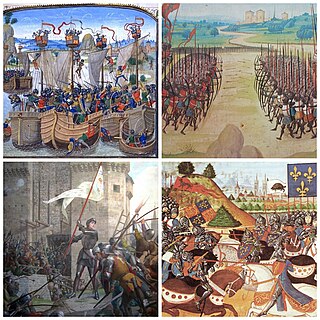
The Hundred Years' War was a series of armed conflicts between the kingdoms of England and France during the Late Middle Ages. It originated from disputed claims to the French throne between the English House of Plantagenet and the French royal House of Valois. Over time, the war grew into a broader power struggle involving factions from across Western Europe, fuelled by emerging nationalism on both sides.

The Battle of Jargeau took place on 11–12 June 1429. It was part of the Loire Campaign during the Hundred Years' War, where Charles VII's forces successfully recaptured much of the region following their victory at the siege of Orleans. The battle ended in victory for Charles VII and is notable as Joan of Arc's first offensive battle.
Inspecting a new prison without being escorted by his bodyguard, the megas doux Alexios Apokaukos, chief minister of the Byzantine Empire, was lynched by the prisoners.

The megas doux was one of the highest positions in the hierarchy of the later Byzantine Empire, denoting the commander-in-chief of the Byzantine navy. It is sometimes also given in English by the half-Latinizations megaduke or megadux. The Greek word δούξ is the Hellenized form of the Latin term dux, meaning leader or commander.

Alexios Apokaukos, also Latinized as Alexius Apocaucus, was a leading Byzantine statesman and high-ranking military officer during the reigns of emperors Andronikos III Palaiologos and John V Palaiologos. Although he owed his rise to high state offices to the patronage of John VI Kantakouzenos, he became, together with Patriarch John XIV Kalekas, one of the leaders of the faction supporting Emperor John V in the civil war of 1341–1347 against his one-time benefactor. Apokaukos died when he was lynched by political prisoners during an inspection of a new prison.

The Byzantine Empire, also referred to as the Eastern Roman Empire or Byzantium, was the continuation of the Roman Empire in its eastern provinces during Late Antiquity and the Middle Ages, when its capital city was Constantinople. It survived the fragmentation and fall of the Western Roman Empire in the 5th century AD and continued to exist for an additional thousand years until the fall of Constantinople to the Ottoman Empire in 1453. During most of its existence, the empire remained the most powerful economic, cultural, and military force in Europe. The terms "Byzantine Empire" and "Eastern Roman Empire" were coined after the end of the realm; its citizens continued to refer to their empire as the Roman Empire, and to themselves as Romans—a term which Greeks continued to use for themselves into Ottoman times. Although the Roman state continued and its traditions were maintained, modern historians distinguish Byzantium from its earlier incarnation because it was centered on Constantinople, oriented towards Greek rather than Latin culture, and characterised by Eastern Orthodox Christianity.
The megas doux Alexios Apokaukos, chief minister of the Byzantine Empire, is lynched by political prisoners.

The megas doux was one of the highest positions in the hierarchy of the later Byzantine Empire, denoting the commander-in-chief of the Byzantine navy. It is sometimes also given in English by the half-Latinizations megaduke or megadux. The Greek word δούξ is the Hellenized form of the Latin term dux, meaning leader or commander.

Alexios Apokaukos, also Latinized as Alexius Apocaucus, was a leading Byzantine statesman and high-ranking military officer during the reigns of emperors Andronikos III Palaiologos and John V Palaiologos. Although he owed his rise to high state offices to the patronage of John VI Kantakouzenos, he became, together with Patriarch John XIV Kalekas, one of the leaders of the faction supporting Emperor John V in the civil war of 1341–1347 against his one-time benefactor. Apokaukos died when he was lynched by political prisoners during an inspection of a new prison.

The Byzantine Empire, also referred to as the Eastern Roman Empire or Byzantium, was the continuation of the Roman Empire in its eastern provinces during Late Antiquity and the Middle Ages, when its capital city was Constantinople. It survived the fragmentation and fall of the Western Roman Empire in the 5th century AD and continued to exist for an additional thousand years until the fall of Constantinople to the Ottoman Empire in 1453. During most of its existence, the empire remained the most powerful economic, cultural, and military force in Europe. The terms "Byzantine Empire" and "Eastern Roman Empire" were coined after the end of the realm; its citizens continued to refer to their empire as the Roman Empire, and to themselves as Romans—a term which Greeks continued to use for themselves into Ottoman times. Although the Roman state continued and its traditions were maintained, modern historians distinguish Byzantium from its earlier incarnation because it was centered on Constantinople, oriented towards Greek rather than Latin culture, and characterised by Eastern Orthodox Christianity.
Albert I of Brandenburg, also called The Bear (Ger: Albrecht der Bär), becomes the founder of the Margraviate of Brandenburg, Germany and the first margrave.

Albert the Bear was the first margrave of Brandenburg from 1157 to his death and was briefly duke of Saxony between 1138 and 1142.
Margrave was originally the medieval title for the military commander assigned to maintain the defence of one of the border provinces of the Holy Roman Empire or of a kingdom. That position became hereditary in certain feudal families in the Empire and the title came to be borne by rulers of some Imperial principalities until the abolition of the Empire in 1806. Thereafter, those domains were absorbed in larger realms or the titleholders adopted titles indicative of full sovereignty.

Brandenburg is a state in the northeast of Germany bordering the states of Mecklenburg-Vorpommern, Lower Saxony, Saxony-Anhalt, and Saxony, as well as the country of Poland. With an area of 29,480 square kilometres and a population of 2.5 million residents, it is the fifth-largest German state by area and the tenth-most populous. Potsdam is the state capital and largest city, and other major towns are Cottbus, Brandenburg an der Havel and Frankfurt (Oder).
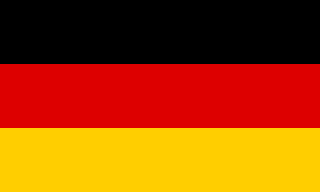
Germany, officially the Federal Republic of Germany, is a country in Central Europe. It is the second most populous country in Europe after Russia, and the most populous member state of the European Union. Germany is situated between the Baltic and North seas to the north, and the Alps to the south; it covers an area of 357,022 square kilometres (137,847 sq mi), with a population of almost 84 million within its 16 constituent states. Germany borders Denmark to the north, Poland and the Czech Republic to the east, Austria and Switzerland to the south, and France, Luxembourg, Belgium, and the Netherlands to the west. The nation's capital and most populous city is Berlin and its financial centre is Frankfurt; the largest urban area is the Ruhr.
Roger of Salerno, Prince of Antioch, captures Azaz from the Seljuk Turks.
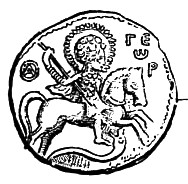
Roger of Salerno was regent of the Principality of Antioch from 1112 to 1119. He was the son of Richard of the Principate and the 2nd cousin of Tancred, Prince of Galilee, both participants on the First Crusade. He became regent of Antioch when Tancred died in 1112; the actual prince, Bohemund II, was still a child. Like Tancred, Roger was almost constantly at war with the nearby Muslim states such as Aleppo. In 1114 there was an earthquake that destroyed many of the fortifications of the principality, and Roger took great care to rebuild them, especially those near the frontier.

The Principality of Antioch was one of the crusader states created during the First Crusade which included parts of modern-day Turkey and Syria. The principality was much smaller than the County of Edessa or the Kingdom of Jerusalem. It extended around the northeastern edge of the Mediterranean, bordering the County of Tripoli to the south, Edessa to the east, and the Byzantine Empire or the Kingdom of Armenia to the northwest, depending on the date.
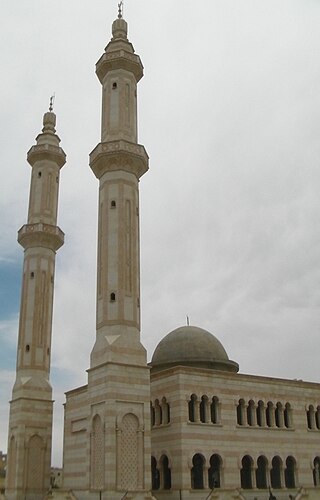
Azaz is a city in northwest Syria, roughly 20 miles north-northwest of Aleppo. According to the Syria Central Bureau of Statistics (CBS), Azaz had a population of 31,623 in the 2004 census. As of 2015, its inhabitants were almost entirely Sunni Muslims, mostly Arabs but also some Kurds and Turkmen.
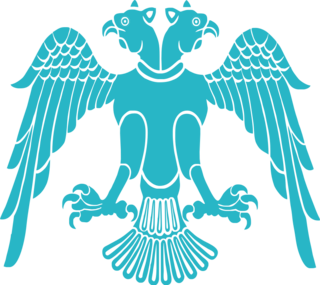
The Seljuk dynasty, or Seljukids, also known as Seljuk Turks, Seljuk Turkomans or the Saljuqids, was a Oghuz Turkic Sunni Muslim dynasty that gradually became Persianate and contributed to the Turco-Persian tradition in the medieval Middle East and Central Asia. The Seljuks established the Seljuk Empire (1037-1194), the Sultanate of Kermân (1041-1186) and the Sultanate of Rum (1074-1308), which at their heights stretched from Iran to Anatolia, and were the prime targets of the First Crusade.
Lombard Revolt: Greek citizens of Bari rise up against the Lombard rebels led by Melus and deliver the city to Basil Mesardonites, Byzantine governor (catepan) of the Catepanate of Italy.

The Norman conquest of southern Italy lasted from 999 to 1139, involving many battles and independent conquerors.
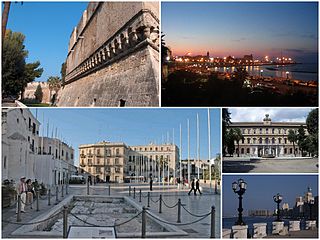
Bari is the capital city of the Metropolitan City of Bari and of the Apulia region, on the Adriatic Sea, southern Italy. It is the second most important economic centre of mainland Southern Italy after Naples. It is a port and university city, as well as the city of Saint Nicholas. The city itself has a population of 315,284 inhabitants, over 116 square kilometres (45 sq mi), while the urban area has 750,000 inhabitants. The metropolitan area has 1.3 million inhabitants.

Lombardy is an administrative region of Italy that covers 23,844 km2 (9,206 sq mi); it is located in the northern-central part of the country and has a population of about 10 million people, constituting more than one-sixth of Italy's population. Over a fifth of the Italian gross domestic product (GDP) is produced in the region.
Melus was a Lombard nobleman from the Apulian town of Bari, whose ambition to carve for himself an autonomous territory from the Byzantine catapanate of Italy in the early eleventh century inadvertently sparked the Norman presence in Southern Italy.
Basil Mesardonites was the Catapan of Italy, representing the Byzantine Emperor there, from 1010 to 1016 or 1017. He succeeded the catapan John Kourkouas, who died fighting the Lombards, then in rebellion under Melus, early in 1010. In March, Basil disembarked with reinforcements from Constantinople and Leo Tornikios Kontoleon, the strategos of Cephalonia. Basil immediately besieged the rebels in Bari. The Greek citizens of the city negotiated with Basil and forced the Lombard leaders, Melus and Dattus, to flee. Basil entered the city on June 11, 1011 and reestablished Byzantine authority. He did not follow his victory up with any severe reactions. He simply sent the family of Melus, including his son Argyrus, to Constantinople. Basil's next move was to ally to the Roman Empire as many Lombard principalities as possible. He visited Salerno in October, where Prince Guaimar III was nominally a Byzantine vassal. He then moved on to Monte Cassino, which monastery was sheltering Dattus on its lands. Basil nevertheless confirmed all the privileges of the monastery over its property in Greek territory. The abbot, Atenulf, was a brother of the prince of Capua, Pandulf IV. The monastery then promptly expelled Dattus and he fled to papal territory. Basil held the Greek catapanate in peace until his death in 1016, or, according to Lupus Protospatharius, 1017. He was replaced by the aforementioned strategos of Cephalonia, Leo.

The katepánō was a senior Byzantine military rank and office. The word was Latinized as capetanus/catepan, and its meaning seems to have merged with that of the Italian "capitaneus". This hybridized term gave rise to the English language term captain and its equivalents in other languages

The Catepanate of Italy was a province of the Byzantine Empire from 965 until 1071. At its greatest extent, it comprised mainland Italy south of a line drawn from Monte Gargano to the Gulf of Salerno. North of that line, Amalfi and Naples also maintained allegiance to Constantinople through the catepan. The Italian region of Capitanata derives its name from katepanikion.
Vladimir the Great consolidates the Kievan realm from Ukraine to the Baltic Sea. He is proclaimed ruler (knyaz) of all Kievan Rus'.

Vladimir I Sviatoslavich or Volodymyr I Sviatoslavych, also known as Vladimir the Great or Volodymyr the Great, was Prince of Novgorod, Grand Prince of Kiev, and ruler of Kievan Rus' from 980 to 1015.
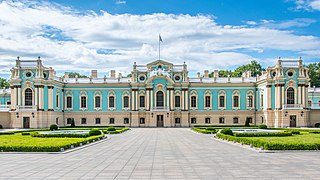
Kyiv, also spelled Kiev, is the capital and most populous city of Ukraine. It is in north-central Ukraine along the Dnieper River. As of 1 January 2021, its population was 2,962,180, making Kyiv the seventh-most populous city in Europe.
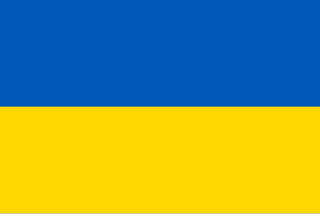
Ukraine is a country in Eastern Europe. It is the second-largest European country after Russia, which it borders to the east and northeast. Ukraine covers approximately 600,000 square kilometres (230,000 sq mi). Prior to the ongoing Russo-Ukrainian War, it was the eighth-most populous country in Europe, with a population of around 41 million people. It is also bordered by Belarus to the north; by Poland, Slovakia, and Hungary to the west; and by Romania and Moldova to the southwest; with a coastline along the Black Sea and the Sea of Azov to the south and southeast. Kyiv is the nation's capital and largest city. Ukraine's official and national language is Ukrainian; most people are also fluent in Russian.

The Baltic Sea is an arm of the Atlantic Ocean that is enclosed by Denmark, Estonia, Finland, Germany, Latvia, Lithuania, Poland, Russia, Sweden and the North and Central European Plain.

Knyaz, kniaz or knez is a historical Slavic title, used both as a royal and noble title in different times of history and different ancient Slavic lands. It is usually translated into English as prince or duke, depending on specific historical context and the potentially known Latin equivalents of the title for each bearer of the name. In Latin sources the title is usually translated as princeps, but the word was originally derived from the common Germanic *kuningaz (king).

Kievan Rus', also known as Kyivan Rus', was a state in Eastern and Northern Europe from the late 9th to the mid-13th century. Encompassing a variety of polities and peoples, including East Slavic, Norse, and Finnic, it was ruled by the Rurik dynasty, founded by the Varangian prince Rurik. The modern nations of Belarus, Russia, and Ukraine all claim Kievan Rus' as their cultural ancestor, with Belarus and Russia deriving their names from it. At its greatest extent in the mid-11th century, Kievan Rus' stretched from the White Sea in the north to the Black Sea in the south and from the headwaters of the Vistula in the west to the Taman Peninsula in the east, uniting the East Slavic tribes.
Arab–Byzantine wars: The Abbasid army departed Raqqa in northern Syria to begin an invasion of Byzantine-controlled Asia Minor.
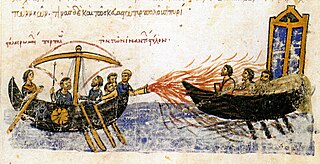
The Arab–Byzantine wars were a series of wars between a number of Muslim Arab dynasties and the Byzantine Empire between the 7th and 11th centuries AD. Conflict started during the initial Muslim conquests, under the expansionist Rashidun and Umayyad caliphs, in the 7th century and continued by their successors until the mid-11th century.

The Abbasid Caliphate was the third caliphate to succeed the Islamic prophet Muhammad. It was founded by a dynasty descended from Muhammad's uncle, Abbas ibn Abdul-Muttalib, from whom the dynasty takes its name. They ruled as caliphs for most of the caliphate from their capital in Baghdad in modern-day Iraq, after having overthrown the Umayyad Caliphate in the Abbasid Revolution of 750 CE (132 AH). The Abbasid Caliphate first centered its government in Kufa, modern-day Iraq, but in 762 the caliph Al-Mansur founded the city of Baghdad, near the ancient Babylonian capital city of Babylon. Baghdad became the center of science, culture and invention in what became known as the Golden Age of Islam. This, in addition to housing several key academic institutions, including the House of Wisdom, as well as a multiethnic and multi-religious environment, garnered it a worldwide reputation as the "Center of Learning".

Raqqa is a city in Syria on the northeast bank of the Euphrates River, about 160 kilometres east of Aleppo. It is located 40 kilometres east of the Tabqa Dam, Syria's largest dam. The Hellenistic, Roman, and Byzantine city and bishopric Callinicum was the capital of the Abbasid Caliphate between 796 and 809, under the reign of Harun al-Rashid. It was also the capital of the Islamic State from 2014 to 2017. With a population of 531,952 based on the 2021 official census, Raqqa is the sixth largest city in Syria.

The Abbasid invasion of Asia Minor in 806 was the largest of a long series of military operations launched by the Abbasid Caliphate against the Byzantine Empire. The expedition took place in southeastern and central Asia Minor, where the Abbasid and Byzantine empires shared a long land border.

The Byzantine Empire, also referred to as the Eastern Roman Empire or Byzantium, was the continuation of the Roman Empire in its eastern provinces during Late Antiquity and the Middle Ages, when its capital city was Constantinople. It survived the fragmentation and fall of the Western Roman Empire in the 5th century AD and continued to exist for an additional thousand years until the fall of Constantinople to the Ottoman Empire in 1453. During most of its existence, the empire remained the most powerful economic, cultural, and military force in Europe. The terms "Byzantine Empire" and "Eastern Roman Empire" were coined after the end of the realm; its citizens continued to refer to their empire as the Roman Empire, and to themselves as Romans—a term which Greeks continued to use for themselves into Ottoman times. Although the Roman state continued and its traditions were maintained, modern historians distinguish Byzantium from its earlier incarnation because it was centered on Constantinople, oriented towards Greek rather than Latin culture, and characterised by Eastern Orthodox Christianity.

Anatolia, also known as Asia Minor, is a large peninsula in Western Asia and the westernmost protrusion of the Asian continent. It constitutes the major part of modern-day Turkey. The region is bounded by the Turkish Straits to the northwest, the Black Sea to the north, the Armenian Highlands to the east, the Mediterranean Sea to the south, and the Aegean Sea to the west. The Sea of Marmara forms a connection between the Black and Aegean seas through the Bosporus and Dardanelles straits and separates Anatolia from Thrace on the Balkan peninsula of Southeast Europe.
A Hasanid Alid uprising in Mecca is crushed by the Abbasids at the Battle of Fakhkh.
The Hasanids are the descendants of Hasan ibn Ali, a grandson of the Islamic prophet Muhammad. They are a branch of the Alids, and one of the two most important branches of the ashrāf.

The Alids are those who claim descent from the Muslim caliph and Imam Ali ibn Abi Talib, cousin, son-in-law and companion of the Islamic prophet Muhammad, through all his wives. The main branches are the Ashrafites, and the Alawids.
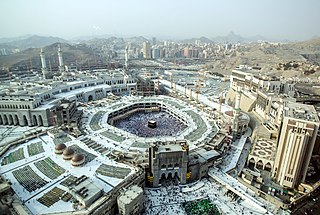
Mecca, commonly shortened to Makkah, is a city and administrative center of the Mecca Province of Saudi Arabia, and the holiest city in Islam. It is 70 km (43 mi) inland from Jeddah on the Red Sea, in a narrow valley 277 m (909 ft) above sea level. Its last recorded population was 1,578,722 in 2015. Its estimated metro population in 2020 is 2.042 million, making it the third-most populated city in Saudi Arabia after Riyadh and Jeddah. Pilgrims more than triple this number every year during the Ḥajj pilgrimage, observed in the twelfth Hijri month of Dhūl-Ḥijjah.

The Abbasid Caliphate was the third caliphate to succeed the Islamic prophet Muhammad. It was founded by a dynasty descended from Muhammad's uncle, Abbas ibn Abdul-Muttalib, from whom the dynasty takes its name. They ruled as caliphs for most of the caliphate from their capital in Baghdad in modern-day Iraq, after having overthrown the Umayyad Caliphate in the Abbasid Revolution of 750 CE (132 AH). The Abbasid Caliphate first centered its government in Kufa, modern-day Iraq, but in 762 the caliph Al-Mansur founded the city of Baghdad, near the ancient Babylonian capital city of Babylon. Baghdad became the center of science, culture and invention in what became known as the Golden Age of Islam. This, in addition to housing several key academic institutions, including the House of Wisdom, as well as a multiethnic and multi-religious environment, garnered it a worldwide reputation as the "Center of Learning".
The Battle of Fakhkh was fought on 11 June 786 between the forces of the Abbasid Caliphate and the supporters of a pro-Alid rebellion in Mecca under al-Husayn ibn Ali, a descendant of Hasan ibn Ali.
Emperor Taizong of Tang sends envoys to the Xueyantuo bearing gold and silk in order to seek the release of Chinese prisoners captured during the transition from Sui to Tang.

Emperor Taizong of Tang, previously Prince of Qin, personal name Li Shimin, was the second emperor of the Tang dynasty of China, ruling from 626 to 649. He is traditionally regarded as a co-founder of the dynasty for his role in encouraging Li Yuan, his father, to rebel against the Sui dynasty at Jinyang in 617. Taizong subsequently played a pivotal role in defeating several of the dynasty's most dangerous opponents and solidifying its rule over China.

The Xueyantuo were an ancient Tiele tribe and khaganate in Northeast Asia who were at one point vassals of the Göktürks, later aligning with the Tang dynasty against the Eastern Göktürks.
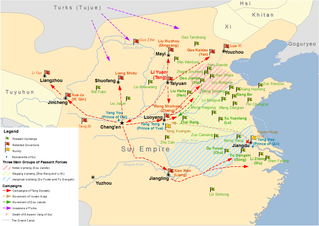
The transition from Sui to Tang (613–628) was the period of Chinese history between the end of the Sui dynasty and the start of the Tang dynasty. The Sui dynasty's territories were carved into a handful of short-lived states by its officials, generals, and agrarian rebel leaders. A process of elimination and annexation followed that ultimately culminated in the consolidation of the Tang dynasty by the former Sui general Li Yuan. Near the end of the Sui, Li Yuan installed the puppet child emperor Yang You. Li later executed Yang and proclaimed himself emperor of the new Tang dynasty.
Marcomannic Wars: The Roman army in Moravia is encircled by the Quadi, who have broken the peace treaty (171). In a violent thunderstorm emperor Marcus Aurelius defeats and subdues them in the so-called "miracle of the rain".
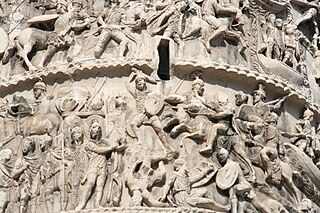
The Marcomannic Wars were a series of wars lasting from about 166 until 180 AD. These wars pitted the Roman Empire against, principally, the Germanic Marcomanni and Quadi and the Sarmatian Iazyges; there were related conflicts with several other Germanic, Sarmatian and Gothic peoples along both sides of the whole length of the Roman Empire's northeastern European border, the river Danube.

The Roman army was the armed forces deployed by the Romans throughout the duration of Ancient Rome, from the Roman Kingdom to the Roman Republic and the Roman Empire, and its medieval continuation, the Eastern Roman Empire. It is thus a term that may span approximately 2,205 years, during which the Roman armed forces underwent numerous permutations in size, composition, organisation, equipment and tactics, while conserving a core of lasting traditions.

Moravia is a historical region in the east of the Czech Republic and one of three historical Czech lands, with Bohemia and Czech Silesia.

The Quadi were a Germanic people who lived approximately in the area of modern Moravia in the time of the Roman Empire. The only surviving contemporary reports about the Germanic tribe are those of the Romans, whose empire had its border on the River Danube just to the south of the Quadi. They associated the Quadi with their neighbours the Marcomanni, and described both groups as having entered the region after the Celtic Boii had left it deserted. The Quadi may later have contributed to the "Suebian" group who crossed the Rhine with the Vandals and Alans in the 406 Crossing of the Rhine, and later founded a kingdom in northwestern Iberia.
Year 171 (CLXXI) was a common year starting on Monday of the Julian calendar. At the time, it was known as the Year of the Consulship of Severus and Herennianus. The denomination 171 for this year has been used since the early medieval period, when the Anno Domini calendar era became the prevalent method in Europe for naming years.

A thunderstorm, also known as an electrical storm or a lightning storm, is a storm characterized by the presence of lightning and its acoustic effect on the Earth's atmosphere, known as thunder. Relatively weak thunderstorms are sometimes called thundershowers. Thunderstorms occur in a type of cloud known as a cumulonimbus. They are usually accompanied by strong winds and often produce heavy rain and sometimes snow, sleet, or hail, but some thunderstorms produce little precipitation or no precipitation at all. Thunderstorms may line up in a series or become a rainband, known as a squall line. Strong or severe thunderstorms include some of the most dangerous weather phenomena, including large hail, strong winds, and tornadoes. Some of the most persistent severe thunderstorms, known as supercells, rotate as do cyclones. While most thunderstorms move with the mean wind flow through the layer of the troposphere that they occupy, vertical wind shear sometimes causes a deviation in their course at a right angle to the wind shear direction.

Marcus Aurelius Antoninus was Roman emperor from 161 to 180 AD and a Stoic philosopher. He was the last of the rulers known as the Five Good Emperors, and the last emperor of the Pax Romana, an age of relative peace and stability for the Roman Empire lasting from 27 BC to 180 AD. He served as Roman consul in 140, 145, and 161.
Hilary Devey, English businesswoman, television presenter (b. 1957) deaths
Hilary Lorraine Devey CBE was an English businesswoman and television personality best known for her role on the BBC Two programme Dragons' Den until she left to present the Channel 4 series The Intern.
Stella Pevsner, children's author (b. 1921) deaths
Stella Pevsner was an American author of children's books and works of young adult literature published since the late 1960s.
Rudi Altig, German track and road racing cyclist (b. 1937) deaths

Rudi Altig was a German professional track and road racing cyclist who won the 1962 Vuelta a España and the world championship in 1966. After his retirement from sports he worked as a television commentator.
Jim Ed Brown, American singer-songwriter and guitarist (b. 1934) deaths

James Edward Brown was an American country singer-songwriter who achieved fame in the 1950s with his two sisters as a member of the Browns. He later had a successful solo career from 1965 to 1974, followed by a string of major duet hits with fellow country music vocalist Helen Cornelius, through 1981. Brown was also the host of the Country Music Greats Radio Show, a syndicated country music program from Nashville, Tennessee.
Ornette Coleman, American saxophonist, violinist, trumpet player, and composer (b. 1930) deaths

Randolph Denard Ornette Coleman was an American jazz saxophonist, violinist, trumpeter, and composer known as a principal founder of the free jazz genre, a term derived from his 1960 album Free Jazz: A Collective Improvisation. His pioneering performances often abandoned the chordal and harmony-based structure found in bebop, instead emphasizing a jarring and avant-garde approach to improvisation.
Ian McKechnie, Scottish footballer and manager (b. 1941) deaths
Ian Hector McKechnie was a Scottish footballer, who played as a goalkeeper.
Ron Moody, English actor and singer (b. 1924) deaths
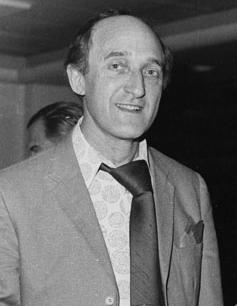
Ron Moody was an English actor, composer, singer and writer. He was best known for his portrayal of Fagin in Oliver! (1968) and its 1983 Broadway revival. Moody earned a Golden Globe Award and an Academy Award nomination for the film, as well as a Tony Award nomination for the stage production. Other notable projects include The Mouse on the Moon (1963), Mel Brooks' The Twelve Chairs (1970) and Flight of the Doves (1971), in which Moody shared the screen with Oliver! co-star Jack Wild.
Dusty Rhodes, American wrestler (b. 1945) deaths

Virgil Riley Runnels Jr., better known as "The American Dream" Dusty Rhodes, was an American professional wrestler, booker, and trainer who most notably worked for the National Wrestling Alliance, Jim Crockett Promotions, World Championship Wrestling, and the World Wrestling Federation, later known as the WWE. Rhodes is considered as one of the greatest wrestlers and talkers in the history of professional wrestling.
Ruby Dee, American actress (b. 1922) deaths

Ruby Dee was an American actress, poet, playwright, screenwriter, journalist, and civil rights activist. She originated the role of "Ruth Younger" in the stage and film versions of A Raisin in the Sun (1961). Her other notable film roles include The Jackie Robinson Story (1950) and Do the Right Thing (1989).
Rafael Frühbeck de Burgos, Spanish conductor and composer (b. 1933) deaths

Rafael Frühbeck de Burgos was a Spanish conductor and composer. Frühbeck was born in Burgos, Spain to a family of German ancestry. He first took up conducting while on military service in the Spanish Army before graduating from the Hochschule für Musik in Munich. Frühbeck was principal conductor of various orchestras around the world, starting with the Bilbao Symphony Orchestra from 1958 to 1962, then moving on to the Spanish National Orchestra, Yomiuri Nippon Symphony Orchestra of Tokyo and many others. Throughout his career Frühbeck de Burgos recorded on a number of labels. He was a member of the Academy of Fine Arts and History Institución Fernán González. His honours include the 2011 Conductor of the Year award from Musical America.
Susan B. Horwitz, American computer scientist, engineer, and academic (b. 1955) deaths
Susan Beth Horwitz was an American computer scientist noted for her research on programming languages and software engineering, and in particular on program slicing and dataflow-analysis. She had several best paper and an impact paper award mentioned below under awards.
Mipham Chokyi Lodro, Tibetan lama and educator (b. 1952) deaths

Mipham Chokyi Lodro, also known as Kunzig Shamar Rinpoche, was the fourteenth Shamarpa of the Karma Kagyu school of Tibetan Buddhism. The Shamarpa is the second-most important teacher of the Karma Kagyu school, after the Karmapa.
Benjamin Mophatlane, South African businessman (b. 1973) deaths
Leetile Benjamin Mophatlane was a South African business magnate, and former Chief Executive Officer of Business Connexion Group. He died on 11 June 2014 after suffering cardiac arrest while in a meeting in Rosebank in Johannesburg.
Carlton Sherwood, American soldier and journalist (b. 1947) deaths
Carlton Alex Sherwood was an American journalist who produced the anti-John Kerry film Stolen Honor. Sherwood served on two news teams which were responsible for the award of the Pulitzer Prize and the Peabody Award to their organizations.
Miller Barber, American golfer (b. 1931) deaths
Miller Westford Barber, Jr. was an American professional golfer who enjoyed significant success on the PGA Tour in the 1960s and 1970s, and a greater degree of success on the Senior PGA Tour in the 1980s.
Carl W. Bauer, American lawyer and politician (b. 1933) deaths
Carl Wiegmann Bauer was a lawyer and businessman who served as a Democrat in both houses of the Louisiana State Legislature from 1966 to 1976 and capped his career as the chief lobbyist, specifically the "Coordinator of Governmental Relations," for the University of Louisiana at Lafayette.
Robert Fogel, American economist and academic, Nobel Prize laureate (b. 1926) deaths

Robert William Fogel was an American economic historian and scientist, and winner of the 1993 Nobel Memorial Prize in Economic Sciences. As of his death, he was the Charles R. Walgreen Distinguished Service Professor of American Institutions and director of the Center for Population Economics (CPE) at the University of Chicago's Booth School of Business. He is best known as an advocate of new economic history (cliometrics) – the use of quantitative methods in history.

The Nobel Memorial Prize in Economic Sciences, officially the Sveriges Riksbank Prize in Economic Sciences in Memory of Alfred Nobel, is an economics award administered by the Nobel Foundation.
James Grimsley, Jr., American general (b. 1921) deaths
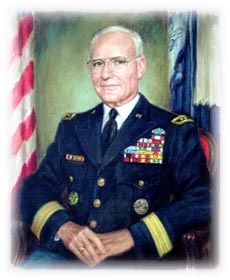
James Alexander Grimsley Jr., was a United States Army Major General and combat veteran of two wars who also served as President of his alma mater, The Citadel from 1980 to 1989.
Rory Morrison, English journalist (b. 1964) deaths

Rory David Morrison was a newsreader and continuity announcer for BBC Radio 4.
Kristiāns Pelšs, Latvian ice hockey player (b. 1992) deaths
Kristiāns Pelšs was a Latvian ice hockey player. He was the son of poet and translator Einārs Pelšs. At the time of his death, he played for the Oklahoma City Barons of the American Hockey League (AHL) as a prospect of the Edmonton Oilers of the National Hockey League.
Vidya Charan Shukla, Indian politician, Indian Minister of External Affairs (b. 1929) deaths

Vidya Charan Shukla was an Indian politician whose political career spanned six decades. He was predominantly a member of the Indian National Congress, but also had spells in Jan Morcha, Janata Dal, Samajwadi Janata Party (Rashtriya), Nationalist Congress Party and Bharatiya Janata Party. He was known as a close associate of Indira Gandhi.

The Minister of External Affairs is the head of the Ministry of External Affairs of the Government of India. One of the senior-most offices in the Union Cabinet, the chief responsibility of the Foreign Minister is to represent India and its government in the international community. The Foreign Minister also plays an important role in determining Indian foreign policy. Occasionally, the Foreign Minister is assisted by a Minister of State for External Affairs or the lower-ranked Deputy Minister of External Affairs.
Ann Rutherford, Canadian-American actress (b. 1917) deaths

Therese Ann Rutherford was a Canadian-born American actress in film, radio, and television. She had a long career starring and co-starring in films, playing Polly Benedict during the 1930s and 1940s in the Andy Hardy series, and appearing as one of Scarlett O'Hara's sisters in the film Gone with the Wind (1939).
Teófilo Stevenson, Cuban boxer and engineer (b. 1952) deaths

Teófilo Stevenson Lawrence was a Cuban amateur boxer who competed from 1966 to 1986. He won the Val Barker Trophy (1972) and was honored with the Olympic Order (1987). Stevenson is one of only three boxers to win three Olympic gold medals, alongside Hungarian László Papp and fellow Cuban Félix Savón.
Eliyahu M. Goldratt, Israeli physicist and engineer (b. 1947) deaths
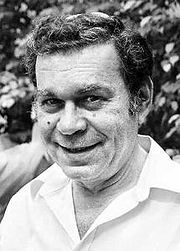
Eliyahu Moshe Goldratt was an Israeli business management guru. He was the originator of the Optimized Production Technique, the Theory of Constraints (TOC), the Thinking Processes, Drum-Buffer-Rope, Critical Chain Project Management (CCPM) and other TOC derived tools.
Seth Putnam, American singer-songwriter and guitarist (b. 1968) deaths

Seth Edward Putnam was an American musician who was the founder, vocalist and occasional guitarist of grindcore band Anal Cunt. He was known for his high-pitched screamed vocals and lyrics that either shock, offend, or invoke morbid humor. Throughout his career, Putnam was also involved in numerous side projects.
Ove Andersson, Swedish race car driver (b. 1938) deaths
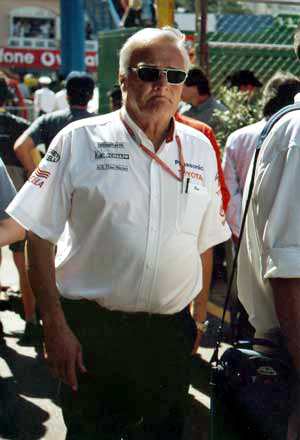
Ove Andersson, nicknamed Påven, was a Swedish rally driver and the first head of Toyota's F1 programme.
Võ Văn Kiệt, Vietnamese soldier and politician, 5th Prime Minister of Vietnam (b. 1922) deaths
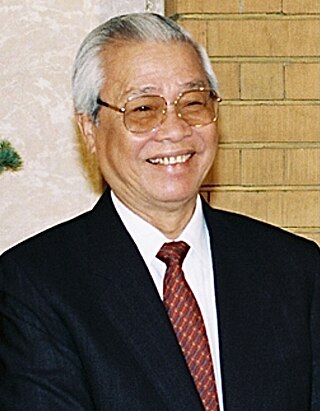
Võ Văn Kiệt was a Vietnamese politician who served as the Prime Minister of the Socialist Republic of Vietnam from 1991 to 1997. He was a well regarded Vietnamese revolutionary and political leader. He was a revolutionary veteran fighter in the long war against the French colonialists and then South Vietnamese and American forces in South Vietnam during the Vietnam War. In the difficult years following the war, he was one of the most prominent political leaders that led the innovation policy in Vietnam. He served as Prime Minister of Vietnam from 8 August 1991 to 25 September 1997, the period experienced the communist nation's return to the world arena after decades of war and isolation.

The prime minister of Vietnam, officially styled as the Prime Minister of the Government of the Socialist Republic, is the head of government of Vietnam who presides over the meetings of the Central Government. The prime minister directs the work of government members, and may propose deputy prime ministers to the National Assembly.
Imre Friedmann, American biologist and academic (b. 1921) deaths
E. Imre Friedmann was a biologist, Robert O. Lawton Distinguished Professor of Biology at Florida State University and the NASA Ames Research Center, and Director, Polar Desert Research Center. He studied endolithic microbial communities and astrobiology. After escaping the Holocaust, Friedmann received his Ph.D. in botany from the University of Vienna, Austria in 1951, and he died on June 11, 2007.
Mala Powers, American actress (b. 1931) deaths

Mary Ellen "Mala" Powers was an American actress.
Neroli Fairhall, New Zealand archer (b. 1944) deaths

Neroli Susan Fairhall was a New Zealand athlete, who was the first paraplegic competitor in the Olympic Games.
Bruce Shand, English soldier (b. 1917) deaths

Bruce Middleton Hope Shand was an officer in the British Army. He is best known as the father of Queen Camilla.
Vasco Gonçalves, Portuguese general and politician, 103rd Prime Minister of Portugal (b. 1922) deaths

General Vasco dos Santos Gonçalves OA was a Portuguese army officer in the Engineering Corps who took part in the Carnation Revolution and later served as the 104th Prime Minister from 18 July 1974 to 19 September 1975.

The prime minister of Portugal is the head of government of Portugal. As head of government, the prime minister coordinates the actions of ministers, represents the Government of Portugal to the other bodies of state, is accountable to parliament and keeps the president informed. The prime minister can hold the role of head of government with the portfolio of one or more ministries.
Anne-Marie Alonzo, Canadian playwright, poet, novelist, critic and publisher (b. 1951) deaths
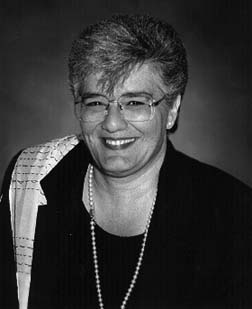
Anne-Marie Alonzo, was a Canadian playwright, poet, novelist, critic and publisher.
Katrina Scott, American tennis player births
Katrina Scott is an American tennis player.
Egon von Fürstenberg, Swiss fashion designer (b. 1946) deaths

Prince Egon von Fürstenberg was a socialite, banker, fashion and interior designer, and a member of the German princely family of Fürstenberg.
David Brinkley, American journalist and author (b. 1920) deaths
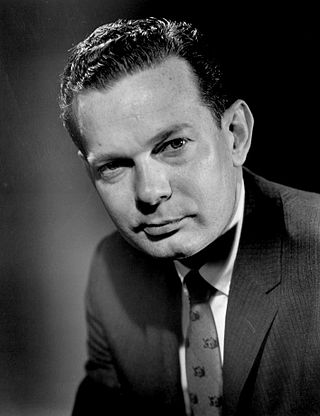
David McClure Brinkley was an American newscaster for NBC and ABC in a career lasting from 1943 to 1997.
Timothy McVeigh, American terrorist (b. 1968) deaths

Timothy James McVeigh was an American domestic terrorist responsible for the 1995 Oklahoma City bombing that killed 168 people, 19 of whom were children, injured more than 680 others, and destroyed one-third of the Alfred P. Murrah Federal Building. The bombing was the deadliest act of terrorism in the United States prior to the September 11 attacks. It remains the deadliest act of domestic terrorism in U.S. history.
Amalia Mendoza, Mexican singer and actress (b. 1923) deaths
Amalia Mendoza García, nicknamed La Tariácuri, was a Mexican singer and actress. "Échame a mi la culpa" and "Amarga navidad" were some of her greatest hits. her best friend since youth was Martha De Miranda Jimenez "Martuquia" as she called her, she was her companion for many years when Amalia was on tour.
Eartha Cumings, Scottish footballer births

Eartha Cumings is a Scottish footballer who plays as a goalkeeper for Liverpool in the Women's Super League and the Scotland national team.
DeForest Kelley, American actor and screenwriter (b. 1920) deaths

Jackson DeForest Kelley, known to colleagues as "Dee", was an American actor, screenwriter, poet, and singer. He was known for his roles in Westerns and as Dr. Leonard "Bones" McCoy of the USS Enterprise in the television and film series Star Trek (1966–1991).
Charlie Tahan, American actor births

Charles Tahan is an American actor. His notable roles include Wyatt Langmore in the Netflix original crime drama Ozark (2017–2022), the voice of Victor Frankenstein in the Disney 3D stop-motion-animated fantasy horror comedy Frankenweenie (2012), Ben Burke in the Fox dystopian mystery thriller series Wayward Pines (2015–16) and the young Jonathan Crane / Scarecrow in the Fox/DC Comics superhero drama Gotham (2014–17).
Catherine Cookson, English author (b. 1906) deaths
Dame Catherine Ann Cookson, DBE was a British writer. She is in the top 20 of the most widely read British novelists, with sales topping 100 million, while retaining a relatively low profile in the world of celebrity writers. Her books were inspired by her deprived youth in South Shields, North East England, the setting for her novels. With 104 titles written in her own name or two other pen names, she is one of the most prolific British novelists.
Ayaka Sasaki, Japanese singer births

Ayaka Sasaki is a Japanese idol. She is known as a member of the female musical group Momoiro Clover Z.
George Hees, Canadian politician (b. 1910) deaths

George Harris Hees was a Canadian politician and businessman.
Brigitte Helm, German-Swiss actress (b. 1908) deaths
Brigitte Helm was a German actress, best remembered for her dual role as Maria and her double named Futura, in Fritz Lang's 1927 silent film, Metropolis.
Rodel Naval, Filipino singer-songwriter and actor (b. 1953) deaths

Rodel Belvis Naval was a Filipino actor, singer, and songwriter. He is best remembered for such songs as "Lumayo Ka Man" and "Muli".
Ivana Baquero, Spanish actress births

Ivana Baquero Macías is a Spanish actress. At the age of 11, she was chosen to star as Ofelia in Pan's Labyrinth, for which she won critical acclaim and the Goya Award for Best New Actress. In 2015, she was cast as Eretria in the television series The Shannara Chronicles.
A. Thurairajah, Sri Lankan engineer and academic (b. 1934) deaths

Alagiah Thurairajah was a leading Sri Lankan Tamil academic and vice-chancellor of the University of Jaffna.
Brittany Boyd, American basketball player births

Brittany Boyd-Jones is an American basketball free agent in the Women's National Basketball Association (WNBA). She previously played for the Chicago Sky. She played college basketball for the California Golden Bears. She was selected by New York in the first round of the 2015 WNBA draft with the ninth overall pick.
Ray Sharkey, American actor (b. 1952) deaths

Raymond Sharkey Jr. was an American stage, film and television actor. His most notable film role was Vincent Vacarri in the 1980 film The Idolmaker, for which he won the Golden Globe Award for Best Actor – Motion Picture Musical or Comedy. He is also known for his role as Sonny Steelgrave in the television series Wiseguy.
Rafael Orozco Maestre, Colombian singer (b. 1954) deaths

Rafael José Orozco Maestre was a Colombian singer of vallenato music. He was one of the major representatives of Colombian popular folk music and was lead singer and co-founder, alongside fellow accordionist Israel Romero, of the vallenato group Binomio de Oro de América, which was very popular in Colombia, Mexico and Venezuela.
Daniel Howell, English YouTuber births

Daniel James Howell is an English YouTuber, presenter, comedian and author. He gained prominence through his YouTube channels Daniel Howell, which reached over six million subscribers, and DanAndPhilGAMES. Together with frequent collaborator Phil Lester, Howell presented the Sunday night entertainment show Dan and Phil on BBC Radio 1 from January 2013 until August 2014, and the station's Internet Takeover slot from September 2014 until April 2016.
Cromwell Everson, South African composer (b. 1925) deaths

Cromwell Everson was primarily known as a composer during his lifetime. He was brought up as an Afrikaner by his mother, Maria De Wit and father, Robert Everson. He continued this tradition and all his children were brought up as Afrikaners.
Christophe Lemaitre, French sprinter births
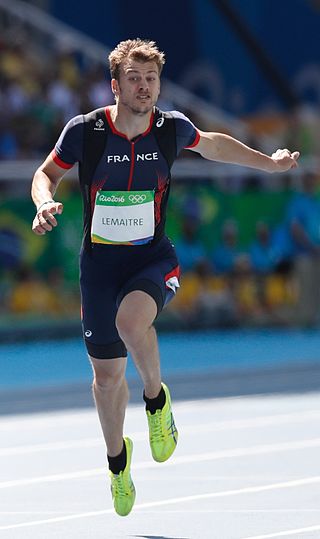
Christophe Lemaitre is a French sprinter who specialises in the 100 and 200 metres. In 2010, Lemaitre became the first white athlete to break the 10-second barrier in an officially timed 100 m event. Lemaitre has run a sub-10 second 100m on seven occasions: three times in 2010 and four times in 2011. He won a bronze medal in the 4 × 100 m relay at the 2012 London Olympic Games and in the 200 metres at the Rio 2016 Summer Olympics.
Maya Moore, American basketball player births

Maya April Moore is an American professional basketball player for the Minnesota Lynx, who is currently on sabbatical. Naming her their inaugural Performer of the Year in 2017, Sports Illustrated called Moore the greatest winner in the history of women's basketball.
Jesús Fernández Collado, Spanish footballer births

Jesús Fernández Collado is a Spanish professional footballer who plays for Liga I club FC Voluntari as a goalkeeper.
Yui Aragaki, Japanese actress, voice actress, singer-songwriter, model, radio host births
Yui Aragaki is a Ryukyuan Japanese actress, model, singer and occasional radio show host. She has been selected several times as the most desired girlfriend and the most desired female celebrity face in Oricon's yearly survey.
Marsel İlhan, Turkish tennis player births

Marsel İlhan is a Turkish professional tennis player, who was ranked No. 1 in Turkey and with a career-high singles ranking of world No. 77 in March 2015. He is the first ever Turkish player to reach the second round in a Grand Slam tournament, as well as the first Turkish player to win a Challenger Tournament and also the first to enter the top 100 in the world rankings.
Didrik Solli-Tangen, Norwegian singer births
Didrik Solli-Tangen is a Norwegian singer who represented Norway in the Eurovision Song Contest 2010 with the song "My Heart Is Yours".
Sebastian Bayer, German long jumper births

Sebastian Bayer is a German long jumper best known for having history's second longest indoor long jump.
Shia LaBeouf, American actor births

Shia Saide LaBeouf is an American actor, performance artist, and filmmaker. He played Louis Stevens in the Disney Channel series Even Stevens, a role for which he received Young Artist Award nominations in 2001 and 2002 and won a Daytime Emmy Award in 2003. He made his film debut in The Christmas Path (1998). In 2004, he made his directorial debut with the short film Let's Love Hate and later directed a short film titled Maniac (2011), starring American rappers Cage and Kid Cudi.
Chesley Bonestell, American painter and illustrator (b. 1888) deaths
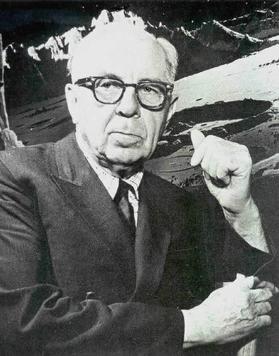
Chesley Knight Bonestell Jr. was an American painter, designer and illustrator. His paintings inspired the American space program, and they have been influential in science fiction art and illustration. A pioneering creator of astronomical art, along with the French astronomer-artist Lucien Rudaux, Bonestell has been dubbed the "Father of Modern Space art".
Tim Hoogland, German footballer births

Tim Klaus Hoogland is a retired German footballer who last played as a defender or midfielder for Australian A-League club Melbourne Victory FC.
Andy Lee, Irish boxer births
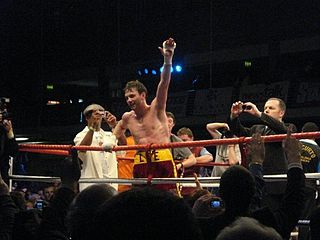
Andy Lee is an Irish former professional boxer who competed from 2006 to 2017. He held the WBO middleweight title from 2014 to 2015, and in doing so became the first member of the travelling community to win a major world title. He is the second cousin of heavyweight champion Tyson Fury. During his professional career, Lee was trained by the late Emmanuel Steward.
Vágner Love, Brazilian footballer births

Vágner Silva de Souza, known as Vágner Love, is a Brazilian professional footballer who plays as a striker for Sport Recife. He is a forward who has been described by World Soccer Magazine as possessing "mobility, flair, awareness and powerful shooting".
Enrico Berlinguer, Italian politician (b. 1922) deaths

Enrico Berlinguer was an Italian politician, considered the most popular leader of the Italian Communist Party (PCI), which he led as the national secretary from 1972 until his death during a tense period in Italy's history, marked by the Years of Lead and social conflicts such as the Hot Autumn of 1969–1970.
Chuck Hayes, American basketball player births

Charles Edward Hayes Jr. is a retired American professional basketball player and former player development coach for the Denver Nuggets of the National Basketball Association (NBA). He played college basketball for the University of Kentucky.
José Reyes, Dominican baseball player births

José Bernabe Reyes is a Dominican-American former professional baseball infielder. He played, most notably at shortstop, in Major League Baseball (MLB) for the New York Mets, Miami Marlins, Toronto Blue Jays, and Colorado Rockies.
Ghanshyam Das Birla, Indian businessman and politician (b. 1894) deaths

Ghanshyam Das Birla was an Indian businessman and member of the Birla Family.
Vanessa Boslak, French pole vaulter births

Vanessa Boslak is a French pole vaulter. She was born in Lesquin, France.
Jacques Freitag, South African high jumper births
Jacques Freitag is a South African high jumper. He is one of only ten athletes to win world championships at the youth, junior, and senior level of an athletic event.
Joey Graham, American basketball player births

Joseph Graham is an American former professional basketball player who played six seasons in the National Basketball Association (NBA).
Stephen Graham, American basketball player births

Stephen Graham is an American former professional basketball player coach. Graham's twin brother, Joey, was his college teammate and has also played in the NBA. He is currently a player development coach with the Denver Nuggets.
Reni Maitua, Australian rugby league player births

Reni Maitua is a former professional rugby league footballer. An Australian and Samoan International representative player, he previously played for the Canterbury-Bankstown Bulldogs, with whom he won the 2004 NRL Premiership. Maitua covered a number of positions, known for typically playing on an edge as a backrow forward or centre, Maitua's skillset saw him play in the halves as well.
Eldar Rønning, Norwegian skier births

Eldar Rønning is a Norwegian former cross-country skier. He skis with the Skogn IL club, in Nord-Trøndelag.
Diana Taurasi, American basketball player births

Diana Lorena Taurasi is an American professional basketball player for the Phoenix Mercury of the Women's National Basketball Association (WNBA). She was drafted by Phoenix first overall in the 2004 WNBA draft. Taurasi has won the WNBA Rookie of the Year Award (2004), three WNBA championships, a historic five Olympic gold medals, one WNBA Most Valuable Player Award (2009), two WNBA Finals MVP Awards, five scoring titles, and three FIBA World Cups. She has also been selected to ten WNBA All-Star teams and fourteen All-WNBA teams. In 2011, she was voted by fans as one of the WNBA's Top 15 Players of All Time, and was named by the league to its 20th and 25th anniversary teams, respectively the WNBA Top 20@20 in 2016 and The W25 in 2021. Also in 2021, she was selected by fans as the league's greatest player of all time. On June 18, 2017, Taurasi became the WNBA all-time leading scorer and on June 27, 2021, became the first player to surpass 9,000 points.
H. Radclyffe Roberts, American entomologist (b. 1906) deaths

Howard Radclyffe Roberts Jr. was an American entomologist known for his work on grasshoppers. His 1941 University of Pennsylvania Ph.D. dissertation was an early work highlighting the role phallic structures could play in grasshopper taxonomy. While serving in World War II, he and Edward Shearman Ross cowrote The Mosquito Atlas, used by the armed forces to identify malaria-transmitting mosquitos. Roberts worked for the Academy of Natural Sciences of Philadelphia (ANSP), serving as its managing director from 1947 to 1972. He described dozens of grasshopper species from North and South America, and also is the eponym of several taxa named in his honor.
Emiliano Moretti, Italian footballer births

Emiliano Moretti is an Italian former professional footballer who played as a centre back.
Kristo Tohver, Estonian footballer and referee births
Kristo Tohver is an Estonian international referee who refereed at 2014 FIFA World Cup qualifiers.
Yhency Brazoban, Dominican baseball player births

Yhency José Brazobán is a Dominican former professional baseball pitcher. He pitched in Major League Baseball for the Los Angeles Dodgers and Arizona Diamondbacks and in Nippon Professional Baseball for the Fukuoka SoftBank Hawks. He throws and bats right-handed.
Ali Boussaboun, Moroccan-Dutch footballer births

Ali Boussaboun is a Dutch-Moroccan former professional footballer who played as a striker. After retiring from playing, Boussaboun worked as a scout for the Moroccan football federation.
Amy Duggan, Australian footballer and sportscaster births

Amy Elizabeth Duggan is an Australian retired association football player and media personality.
Alice Dalgliesh, Trinidadian-American author and publisher (b. 1893) deaths
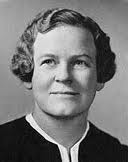
Alice Dalgliesh was a naturalized American writer and publisher who wrote more than 40 fiction and non-fiction books, mainly for children. She has been called "a pioneer in the field of children's historical fiction". Three of her books were runners-up for the annual Newbery Medal, the partly autobiographical The Silver Pencil, The Bears on Hemlock Mountain, and The Courage of Sarah Noble, which was also named to the Lewis Carroll Shelf Award list.
John Wayne, American actor, director, and producer (b. 1907) deaths

Marion Robert Morrison, known professionally as John Wayne and nicknamed The Duke, was an American actor who became a popular icon through his starring roles in films made during Hollywood's Golden Age, especially in Western and war movies. His career flourished from the silent era of the 1920s through the American New Wave, as he appeared in a total of 179 film and television productions. He was among the top box-office draws for three decades, and he appeared with many other important Hollywood stars of his era. In 1999, the American Film Institute selected Wayne as one of the greatest male stars of classic American cinema.
Joshua Jackson, Canadian-American actor births

Joshua Carter Jackson is an American-Canadian actor. He is known for his starring role as Charlie Conway in Mighty Ducks, as Pacey Witter in The WB teen drama series Dawson's Creek (1998–2003), Peter Bishop in the Fox science fiction series Fringe (2008–2013), Cole Lockhart in the Showtime drama series The Affair (2014–2018), Mickey Joseph in the drama miniseries When They See Us (2019), Bill Richardson in the drama miniseries Little Fires Everywhere (2020), and Dr. Christopher Duntsch in Dr. Death (2021).
Daryl Tuffey, New Zealand cricketer births

Daryl Raymond Tuffey is a former New Zealand cricketer who represented New Zealand in all formats internationally. Tuffey was born in Milton, Otago, and played domestic first-class cricket for Northern Districts Knights. Tuffey retired from all forms of cricket on 14 September 2012.
Geoff Ogilvy, Australian golfer births
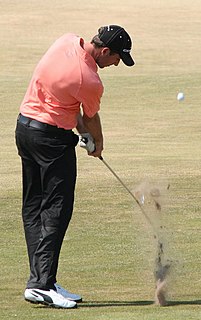
Geoff Charles Ogilvy is an Australian professional golfer. He won the 2006 U.S. Open and has also won three World Golf Championships.
Reiko Tosa, Japanese runner births

Reiko Tosa is a Japanese long-distance runner who specializes in the marathon race. She was born in Matsuyama, Ehime.
Jim Konstanty, American baseball player (b. 1917) deaths

Casimir James Konstanty was an American relief pitcher in Major League Baseball and National League Most Valuable Player of 1950. He played for the Cincinnati Reds (1944), Boston Braves (1946), Philadelphia Phillies (1948–1954), New York Yankees (1954–1956) and St. Louis Cardinals (1956). Konstanty batted and threw right-handed, stood 6 feet 1 inch (1.85 m) tall and weighed 202 pounds (92 kg).
Fragiskos Alvertis, Greek basketball player, coach, and manager births

Fragiskos "Frankie" Alvertis is a Greek former professional basketball player and general manager of Panathinaikos Athens. As a player, he was the long-time captain of Panathinaikos, where he spent his whole professional career. In 1990, Alvertis joined Panathinaikos, after moving to the club from Glyfada. Alvertis is first in “EuroLeague titles” list in the modern era of European Basketball.
Eurico Gaspar Dutra, Brazilian general and politician, 16th President of Brazil (b. 1883) deaths
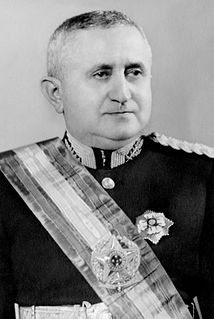
Eurico Gaspar Dutra was a Brazilian military leader and politician who served as the 16th president of Brazil from 1946 to 1951. He was the first President of the Fourth Brazilian Republic, which followed the Vargas Regime.
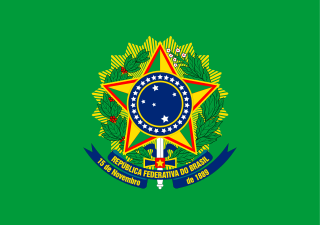
The president of Brazil, officially the president of the Federative Republic of Brazil or simply the President of the Republic, is the head of state and head of government of Brazil. The president leads the executive branch of the federal government and is the commander-in-chief of the Brazilian Armed Forces. The presidential system was established in 1889, upon the proclamation of the republic in a military coup d'état against Emperor Pedro II. Since then, Brazil has had six constitutions, three dictatorships, and three democratic periods. During the democratic periods, voting has always been compulsory. The Constitution of Brazil, along with several constitutional amendments, establishes the requirements, powers, and responsibilities of the president, their term of office and the method of election.
Julius Evola, Italian philosopher and author (b. 1898) deaths
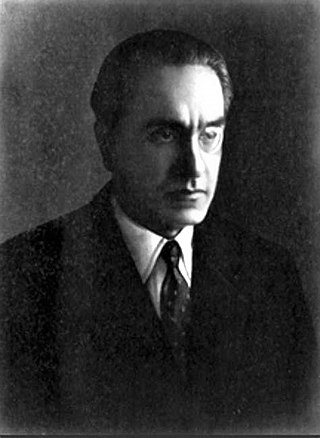
Giulio Cesare Andrea "Julius" Evola was an Italian philosopher, poet, painter, esotericist, and radical-right ideologue. Evola regarded his values as aristocratic, masculine, traditionalist, heroic, and defiantly reactionary. An eccentric thinker in Fascist Italy, he also had ties to Nazi Germany; in the post-war era, he was known as an ideological mentor of the Italian neo-fascist and militant right.
José Manuel Abundis, Mexican footballer and coach births
José Manuel Abundis Sandoval is a Mexican former professional footballer who played as a forward.
Stephen Kearney, New Zealand rugby league player and coach births
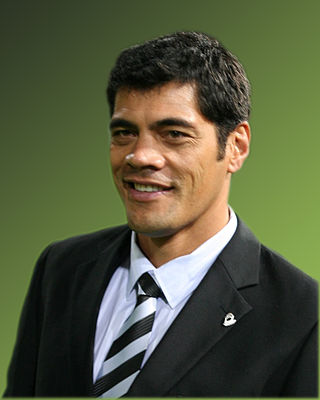
Stephen Peter Kearney is a New Zealand professional rugby league football coach who until 2020 was the head coach of the New Zealand Warriors in the NRL and a former player.
Vladimir Gaidamașciuc, Moldovan footballer births
Vladimir Gaidamașciuc is a retired footballer from Moldova who played as a midfielder for various clubs in Moldova, Ukraine and Russia. He made 45 appearances for the Moldova national team, scoring once.
Liz Kendall, British politician births

Elizabeth Louise Kendall is a British Labour Party politician who has been Member of Parliament (MP) for Leicester West since 2010.
Mark Richardson, New Zealand cricketer births
Mark Hunter Richardson is a former New Zealand cricketer. He was a left-handed opening batsman. He represented New Zealand in 38 Tests from 2000 to 2004. During his cricketing career he played for Auckland, Buckinghamshire and Otago.
Frank Laubach, American missionary and mystic (b. 1884) deaths

Frank Charles Laubach, from Benton, Pennsylvania was a Congregational Christian missionary educated at Union Theological Seminary and Columbia University, and a mystic known as "The Apostle to the Illiterates." In 1915, while working among Muslims at a remote location in the Philippines, he developed the "Each One Teach One" literacy program. It has been used to teach about 60 million people to read in their own language. He was deeply concerned about poverty, injustice and illiteracy, and considered them barriers to peace in the world.
Peter Dinklage, American actor and producer births

Peter Hayden Dinklage is an American film, television and stage actor. He received international recognition for portraying Tyrion Lannister on the HBO television series Game of Thrones (2011–2019), for which he won the Primetime Emmy Award for Outstanding Supporting Actor in a Drama Series a record of four times. He also received a Golden Globe Award in 2011 and a Screen Actors Guild Award in 2020 for the role.
Olaf Kapagiannidis, German footballer births
Olaf Kapagiannidis is a former professional German footballer.
Alois, Hereditary Prince of Liechtenstein births

Alois, Hereditary Prince and Regent of Liechtenstein, Count of Rietberg, is the eldest son of Hans-Adam II, Prince of Liechtenstein, and Countess Marie Kinsky von Wchinitz und Tettau. The heir apparent to the throne of Liechtenstein, Alois has also been regent of the country since 15 August 2004. He is married to Duchess Sophie in Bavaria.
Manoa Thompson, Fijian rugby player births
Manoa Thompson is a Fijian former professional rugby league footballer. Primarily playing as a centre, he played his first grade career with the South Sydney Rabbitohs, Western Suburbs Magpies, and the Auckland Warriors in the NSWRL / ARL competition, as well as playing in the Super League for the Warrington Wolves. He represented the Fijian national team.
Graeme Bachop, New Zealand rugby player births
Graeme Thomas Miro Bachop is a former rugby union footballer from New Zealand. He is of Samoan, Tahitian and Cook Islands heritage.
João Garcia, Portuguese mountaineer births
João José Silva Abranches Garcia, is a leading mountaineer in Portugal. His main professional activities are as organizer and guide in mountaineering expeditions. On May 18, 1999, he became the first Portuguese man to reach the summit of Mount Everest, without the use of supplementary oxygen. Three years later, in 2002, he published a book, A Mais Alta Solidão (The Highest Loneliness), in which he describes his experiences in mountain climbing, namely his 1999 expedition to Everest, where he endured bitter adversities. Nevertheless, João Garcia continued to climb and on the 17th April 2010, he summited Annapurna without the aid of supplemental oxygen, becoming the 10th man of all time to climb all 14 eight-thousanders without bottled oxygen or Sherpas.
Bruce Robison, American country music singer-songwriter and guitarist births

Bruce Ben Robison is an American, Austin-based Texas country music singer-songwriter. Bruce and his brother, fellow singer-songwriter Charlie Robison, grew up in Bandera, Texas, near San Antonio, and he currently resides in Austin, Texas. His self-titled debut album was released in 1995.
Georgios Bartzokas, Greek former professional basketball player births

Georgios Bartzokas is a Greek former professional basketball player and current head coach for Olympiacos of the Greek Basket League and the EuroLeague. He became the first Greek head coach to win the EuroLeague title, after winning the 2012–13 competition with Olympiacos.
Gavin Hill, New Zealand rugby player births
Gavin Lyle Hill is a New Zealand former rugby union and rugby league footballer who played in the 1980s, 1990s and 2000s, and coached rugby union the 2000s. He resided in Wellington for 10-years before moving back to Auckland in 2008 to take a coaching position in the Air New Zealand Cup.
Paul B. Coremans, Belgian chemist and academic (b. 1908) deaths
Paul Bernard Joseph Marie Coremans was a Belgian scientist who advanced the fields of cultural heritage management and cultural heritage curation. He was the founder and first director of the Royal Institute for Cultural Heritage.
José Mendes Cabeçadas, Portuguese admiral and politician, 9th President of Portugal (b. 1883) deaths

José Mendes Cabeçadas Júnior, OTE, ComA, commonly known as Mendes Cabeçadas, was a Portuguese Navy officer, Freemason and republican, having a major role in the preparation of the revolutionary movements that created and ended the Portuguese First Republic: the 5 October revolution in 1910 and the 28 May coup d'état of 1926. In the outcome he became the 69th minister of finance for one day only on 30 May 1926, then becoming interim minister for foreign affairs for two days between 30 May and 1 June, after which he again became the 70th minister for finance on the same day. He served as the ninth president of Portugal and prime minister for a brief period of time.
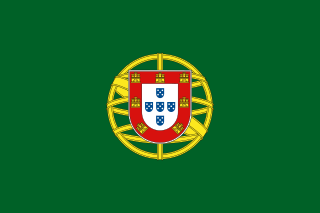
The president of Portugal, officially the president of the Portuguese Republic, is the head of state and highest office of Portugal.
Jean Alesi, French race car driver births

Jean Alesi is a French professional racing driver of Italian origin. After successes in minor categories, notably winning the 1989 Formula 3000 Championship, his Formula One career included spells at Tyrrell, Benetton, Sauber, Prost, Jordan and Ferrari, where he proved very popular among the Tifosi. During his spell at Ferrari from 1991 to 1995, his aggressive driving style, combined with the use of the number 27 on his car, led some journalists and the Tifosi to compare him to Gilles Villeneuve. He won the 1995 Canadian Grand Prix, but this proved to be the only win of his Formula One career. During his time in Formula One, Alesi was particularly good in the wet and was a mercurial and passionate racer, whose emotions sometimes got the better of him.
Kim Gallagher, American runner (d. 2002) births

Kimberly Ann "Kim" Gallagher was an American middle-distance runner who won a silver and a bronze medal at the 1984 and 1988 Olympics.
Gioia Bruno, American singer-songwriter births

Gioia Bruno is an Italian-born American popular music singer, most noted as a member of the vocal group Exposé. In September 2006, Bruno temporarily stopped touring as a solo artist.
Sandra Schmirler, Canadian curler and sportscaster (d. 2000) births

Sandra Marie Schmirler, was a Canadian curler who captured three Canadian Curling Championships and three World Curling Championships. Schmirler also skipped (captained) her Canadian team to a gold medal at the 1998 Winter Olympics, the first year women's curling was a medal sport. At tournaments where she was not competing, Schmirler sometimes worked as a commentator for CBC Sports, which popularized her nickname "Schmirler the Curler" and claimed she was the only person who had a name that rhymed with the sport she played. She died in 2000 at 36 of cancer, leaving a legacy that extended outside of curling. Schmirler was honoured posthumously with an induction into the Canadian Sports Hall of Fame and was awarded the World Curling Freytag Award, which later led to her induction into the World Curling Federation Hall of Fame.
Thích Quảng Đức, Vietnamese monk and martyr (b. 1897) deaths

Thích Quảng Đức was a Vietnamese Mahayana Buddhist monk who burned himself to death at a busy Saigon road intersection on 11 June 1963. Quảng Đức was protesting the persecution of Buddhists by the South Vietnamese government led by Ngô Đình Diệm, a staunch Roman Catholic. Photographs of his self-immolation circulated around the world, drawing attention to the policies of the Diệm government. John F. Kennedy said of one photograph, "No news picture in history has generated so much emotion around the world as that one." Malcolm Browne won the World Press Photo of the Year for his photograph of the monk's death.
Mano Menezes, Brazilian footballer and coach births

Luiz Antônio Venker de Menezes, known as Mano Menezes, is a Brazilian professional football coach and former player. He is the current head coach of Internacional.
Chhabi Biswas, Indian actor and director (b. 1900) deaths

Chhabi Biswas was an Indian actor, primarily known for his performances in Tapan Sinha's Kabuliwala and Satyajit Ray's films Jalshaghar, Devi and Kanchenjungha (1962).
Mehmet Oz, American surgeon, author, and television host births

Mehmet Cengiz Öz, known professionally as Dr. Oz, is an American–Turkish television presenter, author, former political candidate, professor emeritus, and retired cardiothoracic surgeon.
Hugh Laurie, English actor and screenwriter births

James Hugh Calum Laurie is an English actor, comedian, writer, and musician. He first gained recognition for his work as one half of the comedy double act Fry and Laurie with Stephen Fry. The two men acted together in a number of projects during the 1980s and 1990s, including the BBC sketch comedy series A Bit of Fry & Laurie and the P. G. Wodehouse adaptation Jeeves and Wooster. He appeared in two series of the period comedy Blackadder (1987–1989) alongside Rowan Atkinson.
Joe Montana, American football player and sportscaster births

Joseph Clifford Montana Jr. is an American former football quarterback who played in the National Football League (NFL) for 16 seasons, primarily with the San Francisco 49ers. Nicknamed "Joe Cool" and "the Comeback Kid", Montana is widely regarded as one of the greatest quarterbacks of all time. After winning a national championship at Notre Dame, Montana began his NFL career in 1979 at San Francisco, where he played for the next 14 seasons. With the 49ers, Montana started and won four Super Bowls and was the first player to be named the Super Bowl Most Valuable Player (MVP) three times. He also holds Super Bowl career records for most passes without an interception and the all-time highest passer rating of 127.8. In 1993, Montana was traded to the Kansas City Chiefs, where he played for his last two seasons, and led the franchise to its first AFC Championship Game. Montana was inducted to the Pro Football Hall of Fame in 2000.
Yuriy Sedykh, Ukrainian hammer thrower (d. 2021) births
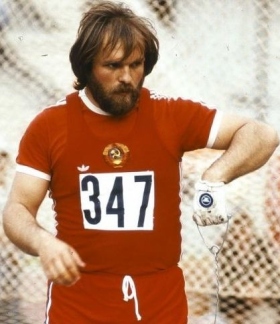
Yuriy Georgiyevich Sedykh was a track and field athlete who represented the Soviet Union from 1976–1991 in the hammer throw. He was a European, World and Olympic Champion, and holds the world record with a throw of 86.74 m in 1986.
Duncan Steel, English-Australian astronomer and author births
Duncan I. Steel is a British space scientist. He has discovered several minor planets and has written four popular science books. He is a member of the International Astronomical Union, which lists him as working at the Xerra Earth Observation Institute in Nelson, in the South Island of New Zealand. He was formerly on the staff of the University of Salford in the United Kingdom.
Pierre Levegh, French race car driver (b. 1905) deaths
Pierre Eugène Alfred Bouillin was a French sportsman and racing driver. He took the racing name Pierre Levegh [ləvɛk] in memory of his uncle, a pioneering driver who died in 1904. Levegh died in the 1955 Le Mans disaster which also killed 83 spectators during the 1955 24 Hours of Le Mans automobile race.
John Dyson, Australian cricketer births
John Dyson is a former international cricketer (batsman) who is now a cricket coach, most recently in charge of the West Indies.
Johnny Neel, American singer-songwriter and keyboard player births

Johnny Neel is an American vocalist, songwriter, and musician based in Nashville, Tennessee. He is best known for his songwriting, stage, and being a member of the Allman Brothers Band and the Dickey Betts Band.
Steve Bassam, Baron Bassam of Brighton, English politician births
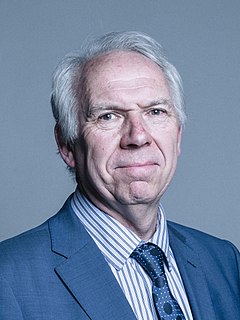
John Steven Bassam, Baron Bassam of Brighton, is a British Labour and Co-operative politician and a member of the House of Lords.
José Bové, French farmer and politician births

Joseph "José" Bové is a French farmer, politician, and syndicalist, member of the alter-globalization movement, and spokesman for Via Campesina. He was one of the twelve official candidates in the 2007 French presidential election. He served in the European Parliament as a member of the European Green Party in the 2009–2014 and 2014–2019.
Yekaterina Podkopayeva, Russian runner births
Yekaterina Ilyinychna Podkopayeva is a retired middle distance runner who represented the USSR and later Russia. She gained international recognition in 1983, when she won two bronze medals at the World Championships. The same year she managed an 800 m time of 1:55.96. She resurfaced in 1992, winning the European Indoor Championships and placing 8th in the Olympics. More victories in European and World Indoor Championships followed until she retired after the 1998 season. When she won the 1500 metres at the 1997 World Indoors, she was 44, the oldest World Indoor champion ever.
Donnie Van Zant, American singer-songwriter and guitarist births

Donald Newton Van Zant is an American rock singer, songwriter, and guitarist. He is best known for being a member of the band 38 Special, from its formation in 1974 until 2013. He is the middle of three sons; his older brother Ronnie was the original lead singer for Lynyrd Skynyrd who died in a 1977 plane crash in Mississippi, and his younger brother Johnny has been the lead singer for Lynyrd Skynyrd since 1987. Donnie and Johnny Van Zant also perform together as the group Van Zant.
Yasumasa Morimura, Japanese painter and photographer births

Yasumasa Morimura is a contemporary Japanese performance and appropriation artist whose work encompasses photography, film, and live performance. He is known for his reinterpretation of recognizable artworks and figures from art history, history, and mass media through his adoption of personas that transcend national, ethnic, gendered, and racial boundaries. Across his photographic and performative series, Morimura’s works explore a number of interconnected themes, including: the nature of identity and its ability to undergo change, postcolonialism, authorship, and the Western view of Japan – and Asia, more broadly – as feminine.
Lynsey de Paul, English singer-songwriter, pianist, producer, cartoonist and actress (d. 2014) births

Lynsey de Paul was an English singer-songwriter and producer. After initially writing hits for others, she had her own chart hits in the UK and Europe in the 1970s, starting with UK top 10 single "Sugar Me", and became the first British female artist to achieve a number one with a self-written song. She represented the UK in the 1977 Eurovision Song Contest, scoring another chart-topping hit in Switzerland and had a successful career as a two-time Ivor Novello Award-winning composer, record producer, actress and television celebrity.
Graham Russell, English-Australian singer-songwriter and guitarist births
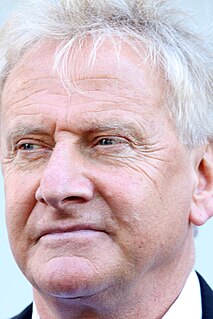
Graham Cyril Russell is an English musician, singer-songwriter, producer and guitarist of the soft rock duo Air Supply.
Frank Beard, American drummer and songwriter births

Frank Lee Beard is an American drummer best known as a member of the rock band ZZ Top.
Dave Cash, American baseball player and coach births

David Cash Jr., is an American former professional baseball player and coach. He played in Major League Baseball as a second baseman from 1969 to 1980, most prominently as a member of the Pittsburgh Pirates where, he was a member of the 1971 World Series winning team and, with the Philadelphia Phillies where he became a three-time All-Star player. He also played for the Montreal Expos and the San Diego Padres. After his playing career, Cash spent several years as a minor league hitting coach and manager for several major league organizations.
Lalu Prasad Yadav, Indian politician, 20th Chief Minister of Bihar births

Lalu Prasad Yadav is an Indian politician and president of the Rashtriya Janata Dal (RJD). He is a former Chief Minister of Bihar (1990-1997), a former Railway Minister of India (2004-2009), and a former Member of Parliament (MP) of the Lok Sabha.

The chief minister of Bihar is the chief executive of the Indian state of Bihar. As per the Constitution of India, the governor of Bihar is the state's de jure head, but de facto executive authority rests with the chief minister. Following elections to the Bihar Legislative Assembly, the governor usually invites the party with a majority of seats to form the government. The governor appoints the chief minister, whose council of ministers are collectively responsible to the assembly. Given that they have the confidence of the assembly, the chief minister's term is for five years and is subject to no term limits.
Adrienne Barbeau, American actress births

Adrienne Jo Barbeau is an American actress, singer and the author of three books. Barbeau came to prominence in the 1970s as Broadway's original Rizzo in the musical Grease, and as Carol Traynor, the divorced daughter of Maude Findlay on the sitcom Maude (1972–1978). In 1980, she began appearing in horror and science fiction films, including The Fog (1980), Escape from New York (1981), Creepshow (1982), and Swamp Thing (1982). During the 1990s, she became known for providing the voice of Catwoman on Batman: The Animated Series (1992–1995), and subsequent Batman cartoon series. In the 2000s, she appeared on the HBO series Carnivàle as Ruthie the snake dancer.
Henry Hill, American mobster (d. 2012) births

Henry Hill Jr. was an American mobster who was associated with the Lucchese crime family of New York City from 1955 until 1980, when he was arrested on narcotics charges and became an FBI informant. Hill testified against his former Mafia associates, resulting in 50 convictions, including those of caporegime (captain) Paul Vario and fellow associate James Burke on multiple charges. He subsequently entered the Witness Protection Program, but was removed from the program in the early 1990s.
Parris Glendening, American politician, 59th Governor of Maryland births
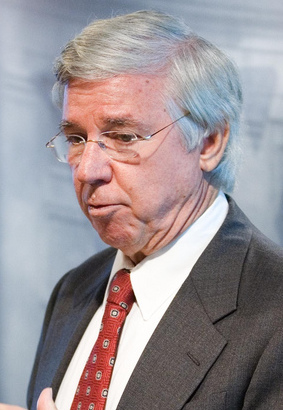
Parris Nelson Glendening is an American politician and academic who served as the 59th Governor of Maryland from January 18, 1995, to January 15, 2003. Previously, he was the County Executive of Prince George's County, Maryland from 1982 to 1994 as a member of the Democratic Party.

The Governor of the State of Maryland is the head of government of Maryland, and is the commander-in-chief of the state's National Guard units. The Governor is the highest-ranking official in the state and has a broad range of appointive powers in both the state and local governments, as specified by the Maryland Constitution. Because of the extent of these constitutional powers, the Governor of Maryland has been ranked as being among the most powerful governors in the United States.
Daniel Carter Beard, American author and illustrator, founded the Boy Scouts of America (b. 1850) deaths
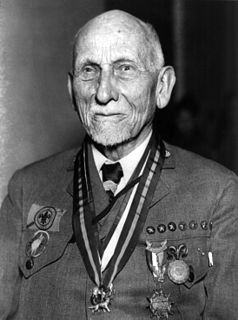
Daniel Carter "Uncle Dan" Beard was an American illustrator, author, youth leader, Georgist and social reformer who founded the Sons of Daniel Boone in 1905, which Beard later merged with the Boy Scouts of America (BSA).

The Boy Scouts of America is one of the largest scouting organizations and one of the largest youth organizations in the United States, with about 1.2 million youth participants. The BSA was founded in 1910, and since then, about 110 million Americans have participated in BSA programs. BSA is part of the international Scout Movement and became a founding member organization of the World Organization of the Scout Movement in 1922.
Rachael Heyhoe Flint, Baroness Heyhoe Flint, English cricketer and journalist (d. 2017) births

Rachael Heyhoe Flint, Baroness Heyhoe Flint, was an English cricketer, businesswoman and philanthropist. She was best known for being captain of England from 1966 to 1978, and was unbeaten in six Test series: in total, she played for the English women's cricket team from 1960 to 1982. Heyhoe Flint was captain when her team won the inaugural 1973 Women's Cricket World Cup, which England hosted. She was also the first female cricketer to hit a six in a Test match, and one of the first ten women to become a member of the MCC.
Jackie Stewart, Scottish racing driver and sports presenter births

Sir John Young Stewart, known as Jackie Stewart, is a British former Formula One racing driver from Scotland. Nicknamed the "Flying Scot", he competed in Formula One between 1965 and 1973, winning three World Drivers' Championships and twice finishing as runner-up over those nine seasons.
Chad Everett, American actor and director (d. 2012) births
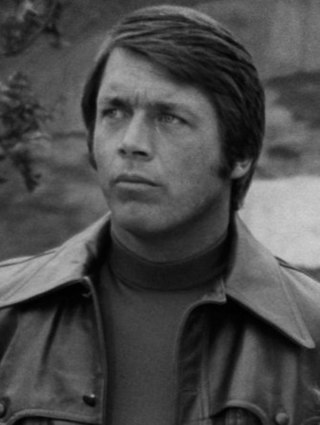
Raymon Lee Cramton, known professionally as Chad Everett, was an American actor who appeared in more than 40 films and television series. He played Dr. Joe Gannon in the television drama Medical Center, which aired from 1969 to 1976.
Robin Warren, Australian pathologist and academic, Nobel Prize laureate births
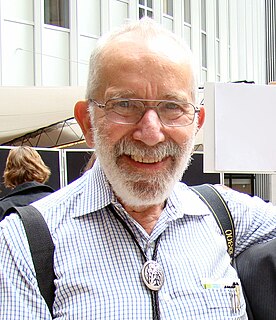
John Robin Warren is an Australian pathologist, Nobel Laureate and researcher who is credited with the 1979 re-discovery of the bacterium Helicobacter pylori, together with Barry Marshall. The duo proved to the medical community that the bacterium Helicobacter pylori is the cause of most peptic ulcers.

The Nobel Prize in Physiology or Medicine is awarded yearly by the Nobel Assembly at the Karolinska Institute for outstanding discoveries in physiology or medicine. The Nobel Prize is not a single prize, but five separate prizes that, according to Alfred Nobel's 1895 will, are awarded "to those who, during the preceding year, have conferred the greatest benefit to humankind". Nobel Prizes are awarded in the fields of Physics, Chemistry, Physiology or Medicine, Literature, and Peace.
R. J. Mitchell, English engineer, designed the Supermarine Spitfire (b. 1895) deaths

Reginald Joseph Mitchell CBE, FRAeS, was a British aircraft designer who worked for the Southampton aviation company Supermarine from 1916 until 1936. He is best remembered for designing racing seaplanes such as the Supermarine S.6B, and for leading the team that designed the Supermarine Spitfire.

The Supermarine Spitfire is a British single-seat fighter aircraft used by the Royal Air Force and other Allied countries before, during, and after World War II. Many variants of the Spitfire were built, from the Mk 1 to the Rolls-Royce Griffon engined Mk 24 using several wing configurations and guns. It was the only British fighter produced continuously throughout the war, and the Spitfire remains popular among enthusiasts, around 70 remain airworthy, and many more are static exhibits in aviation museums throughout the world.
Robert E. Howard, American author and poet (b. 1906) deaths

Robert Ervin Howard was an American writer. He wrote pulp fiction in a diverse range of genres. He is well known for his character Conan the Barbarian and is regarded as the father of the sword and sorcery subgenre.
Lev Vygotsky, Belarusian-Russian psychologist and theorist (b. 1896) deaths
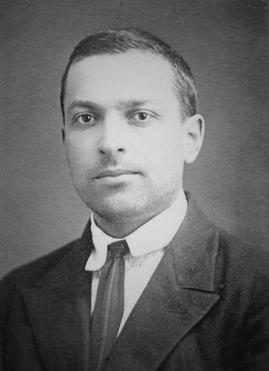
Lev Semyonovich Vygotsky was a Soviet psychologist, known for his work on psychological development in children. He published on a diverse range of subjects, and from multiple views as his perspective changed over the years. Among his students was Alexander Luria and Kharkiv school of psychology.
Gene Wilder, American actor, director, and screenwriter (d. 2016) births

Jerome Silberman, known professionally as Gene Wilder, was an American actor, comedian, writer and filmmaker. He is known mainly for his comedic roles, but also for his portrayal of Willy Wonka in Willy Wonka & the Chocolate Factory (1971). He is also known for his collaborations with Mel Brooks on the films The Producers (1967), Blazing Saddles (1974) and Young Frankenstein (1974), as well as with Richard Pryor in the films Silver Streak (1976), Stir Crazy (1980), See No Evil, Hear No Evil (1989) and Another You (1991). He also starred in Woody Allen's Everything You Always Wanted to Know About Sex* (1972).
Athol Fugard, South African-American actor, director, and playwright births
Athol Fugard, Hon., , is a South African playwright, novelist, actor, and director widely regarded as South Africa's greatest playwright. He is best known for his political and penetrating plays opposing the system of apartheid and for the 2005 Oscar-winning film of his novel Tsotsi, directed by Gavin Hood.
Tim Sainsbury, English businessman and politician, Minister of State for Trade births
Sir Timothy Alan Davan Sainsbury is a Conservative politician and businessman in the United Kingdom.

The Minister of State for Trade Policy is a mid-level role at the Department for International Trade in the Government of the United Kingdom. It is currently held by Greg Hands, who took the office on 9 October 2022. The minister deputizes for the Secretary of State for International Trade.
Charles Rangel, American soldier, lawyer, and politician births

Charles Bernard Rangel is an American politician who was a U.S. representative for districts in New York from 1971 to 2017. A member of the Democratic Party, he was the second-longest serving incumbent member of the House of Representatives at the time of his retirement, serving continuously since 1971. As its most senior member, he was also the Dean of New York's congressional delegation. Rangel was the first African American Chair of the influential House Ways and Means Committee. He is also a founding member of the Congressional Black Caucus.
Ayhan Şahenk, Turkish businessman (d. 2001) births
Ayhan Şahenk was a Turkish businessman and founder of the Doğuş Group.
Queen Fabiola of Belgium (d. 2014) births

Doña Fabiola Fernanda María-de-las-Victoria Antonia Adelaida de Mora y Aragón was Queen of the Belgians from her marriage to King Baudouin in 1960 until his death in 1993. The couple had no children, so the Crown passed to her husband's younger brother, King Albert II.
Beryl Grey, English ballerina births

Dame Beryl Elizabeth Grey is an English retired ballet dancer.
John W. O'Malley, American Catholic historian, academic and Jesuit priest births

John William O'Malley was an American academic, Catholic historian, and Jesuit priest. He was a University Professor at Georgetown University, housed in the Department of Theology and Religious Studies. O'Malley was a widely published expert on the religious history of Early Modern Europe, with specialities on the Council of Trent, the Second Vatican Council, and the First Vatican Council.
Kit Pedler, English parapsychologist and author (d. 1981) births

Christopher Magnus Howard "Kit" Pedler was a British medical scientist, parapsychologist and science fiction author.
William Attewell, English cricketer (b. 1861) deaths

William Attewell was a cricketer who played for Nottinghamshire County Cricket Club and England. Attewell was a medium pace bowler who was renowned for his extraordinary accuracy and economy. On the many sticky or crumbling pitches encountered in his prime Attewell could get on a great deal of spin so as to always beat the bat, whilst his accuracy would make slogging – the only way to make runs under such conditions – very difficult. He was responsible for the development of "off theory" – bowling wide of the off stump to a packed off-side field to frustrate batsmen on the rapidly improving pitches of the 1890s. At times Attewell was a useful batsman for his county, and he scored 102 against Kent in 1897.
Carlisle Floyd, American composer and educator (d. 2021) births

Carlisle Sessions Floyd was an American composer primarily known for his operas. These stage works, for which he wrote the librettos, typically engage with themes from the American South, particularly the Post-civil war South, the Great Depression and rural life. His best known opera, Susannah, is based on a story from the Biblical Apocrypha, transferred to contemporary rural Tennessee, and written for a Southern dialect. It was premiered at Florida State University in 1955, with Phyllis Curtin in the title role. When it was staged at the New York City Opera the following year, the reception was initially mixed; some considered it a masterpiece, while others degraded it as a 'folk opera'. Subsequent performances led to an increase in Susannah's reputation and the opera quickly became among the most performed of American operas.
Johnny Esaw, Canadian sportscaster (d. 2013) births
Johnny Esaw, CM was a Canadian of Assyrian descent, a sports broadcaster and television network executive. He was a pioneer of sports broadcasting in Canada, best known for his involvement with figure skating, football, and international hockey.
William Styron, American novelist and essayist (d. 2006) births

William Clark Styron Jr. was an American novelist and essayist who won major literary awards for his work.
Théodore Dubois, French organist, composer, and educator (b. 1837) deaths
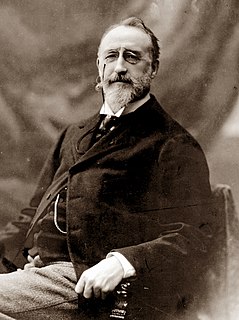
Clément François Théodore Dubois was a French Romantic composer, organist, and music teacher.
Jean Sutherland Boggs, Peruvian-Canadian historian, academic, and civil servant (d. 2014) births

Jean Sutherland Boggs was a Canadian academic, art historian and civil servant. She was the first female Director of both the National Gallery of Canada and the Philadelphia Museum of Art. She was also a specialist in the work of Edgar Degas and Picasso.
Michael Cacoyannis, Greek Cypriot director, producer, and screenwriter (d. 2011) births

Michael Cacoyannis, sometimes credited as Michael Yannis, was a Greek Cypriot theatre and film director, writer, producer, and actor.
Hazel Scott, Trinidadian-American singer, actress, and pianist (d. 1981) births
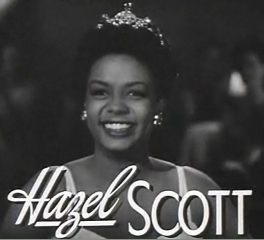
Hazel Dorothy Scott was a Trinidad-born American jazz and classical pianist and singer. She was an outspoken critic of racial discrimination and segregation. She used her influence to improve the representation of Black Americans in film.
Keith Seaman, Australian lawyer and politician, 29th Governor of South Australia (d. 2013) births
Sir Keith Douglas Seaman was Governor of South Australia from 1 September 1977 until 28 March 1982. He was the second successive governor to have been a minister of religion, Seaman being a minister in then recently merged Uniting Church in Australia.
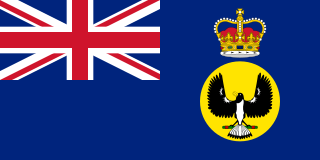
The governor of South Australia is the representative in South Australia of the Monarch of Australia, currently King Charles III. The governor performs the same constitutional and ceremonial functions at the state level as does the governor-general of Australia at the national level. In accordance with the conventions of the Westminster system of parliamentary government, the governor nearly always acts solely on the advice of the head of the elected government, the Premier of South Australia. Nevertheless, the governor retains the reserve powers of the Crown, and has the right to dismiss the Premier. As from June 2014, the Queen, upon the recommendation of the Premier, accorded all current, future and living former governors the title 'The Honourable' for life. The first six governors oversaw the colony from proclamation in 1836, until self-government and an elected Parliament of South Australia was granted in the year prior to the inaugural 1857 election.
William F. Halsey, Sr., American captain (b. 1853) deaths
William Frederick Halsey was a United States naval officer.
Suleiman Mousa, Jordanian historian and author (d. 2008) births
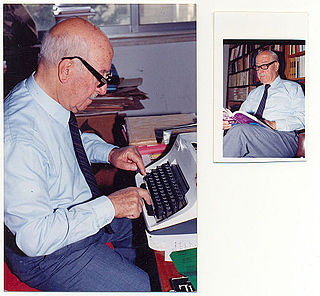
Suleiman Mousa was a Jordanian author and historian born in Al-Rafeed, a small village north of the city of Irbid. He wrote up to fifty books of which most prominent are Biography of Sharif Hussein Bin Ali, Jordan in the 1948 War, Great Arab Revolt, History of Jordan in the 20th century, and was the first and only Arab author to write about Lawrence of Arabia and show the Arab perspective.
Richard Todd, Irish-English actor (d. 2009) births
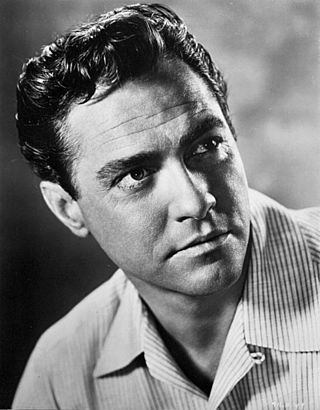
Richard Andrew Palethorpe-Todd was an Irish-British actor known for his leading man roles of the 1950s. He received a Golden Globe Award for Most Promising Newcomer – Male, and an Academy Award for Best Actor nomination and a Golden Globe Award for Best Actor nomination for his performance as Corporal Lachlan MacLachlan in the 1949 film The Hasty Heart. His other notable roles include Jonathan Cooper in Stage Fright (1950), Wing Commander Guy Gibson in The Dam Busters (1955), Sir Walter Raleigh in The Virgin Queen (1955), and Major John Howard in The Longest Day (1962). He was previously a Captain in the British Army during World War II, fighting in the D-Day landings as a member of the 7th Parachute Battalion.
Ruth Aarons, American table tennis player and manager (d. 1980) births
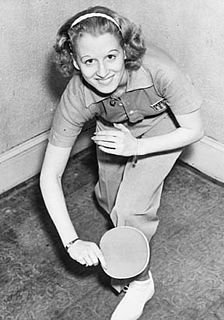
Ruth Hughes Aarons was a US table tennis player, vaudeville entertainer, and talent manager.
Magda Gabor, Hungarian-American actress (d. 1997) births
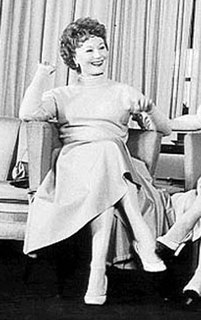
Magdolna "Magda" Gabor was a Hungarian-American actress and socialite, and the elder sister of Zsa Zsa and Eva Gabor.
Nicholas Metropolis, American mathematician and physicist (d. 1999) births
Nicholas Constantine Metropolis was a Greek-American physicist.
Jan Hendrik van den Berg, Dutch psychiatrist and academic (d. 2012) births
Jan Hendrik van den Berg was a Dutch psychiatrist notable for his work in phenomenological psychotherapy and metabletics, or "psychology of historical change." He is the author of numerous articles and books, including A different existence and The changing nature of man.
Adolphus Frederick V, Grand Duke of Mecklenburg-Strelitz (b. 1848) deaths

Adolphus Frederick V was reigning grand duke of Mecklenburg-Strelitz from 1904 to 1914.
Vince Lombardi, American football player, coach, and manager (d. 1970) births

Vincent Thomas Lombardi was an American football coach and executive in the National Football League (NFL). Lombardi is considered by many to be the greatest coach in football history, and he is recognized as one of the greatest coaches and leaders in the history of all American sports. He is best known as the head coach of the Green Bay Packers during the 1960s, where he led the team to three straight and five total NFL Championships in seven years, in addition to winning the first two Super Bowls at the conclusion of the 1966 and 1967 NFL seasons.
Risë Stevens, American soprano and actress (d. 2013) births

Risë Stevens was an American operatic mezzo-soprano and actress. Beginning in 1938, she sang for the Metropolitan Opera in New York City for more than two decades during the 1940s and 1950s. She was most noted for her portrayals of the central character in Carmen by Georges Bizet. From 1963 to 1968 she was director of the Metropolitan Opera National Company.
Mahmud Shevket Pasha, Ottoman general and politician, 279th Grand Vizier of the Ottoman Empire (b. 1856) deaths

Mahmud Shevket Pasha was an Ottoman generalissimo and statesman, who was an important political figure during the Second Constitutional Era. During the 31 March Incident, Shevket Pasha and the Committee of Union and Progress overthrew Abdul Hamid II after an anti-Constitutionalist uprising in Constantinople. He played the role of a power broker after the crisis, balancing the various factions of the Young Turks and the army. As War Minister he played a leading role in military reform and the establishment of the Ottoman Air Force. Shevket Pasha became Grand Vizier during the First Balkan War in the aftermath of the 1913 coup d'état, from 23 January 1913 until his death by assassination.

The grand vizier of the Ottoman Empire was the de facto prime minister of the sultan in the Ottoman Empire, with the absolute power of attorney and, in principle, removable only by the sultan himself in the classical period, before the Tanzimat reforms, or until the 1908 Revolution. He held the imperial seal and could summon all other viziers to attend to affairs of the state in the Imperial Council; the viziers in conference were called "kubbe viziers" in reference to their meeting place, the Kubbealtı ('under-the-dome') in Topkapı Palace. His offices were located at the Sublime Porte.
James Algar, American director, producer, and screenwriter (d. 1998) births
James Algar was an American film director, screenwriter, and producer. He worked at Walt Disney Productions for 43 years and received the Disney Legends award in 1998. He was born in Modesto, California and died in Carmel, California.
William Baziotes, American painter and academic (d. 1963) births

William Baziotes was an American painter influenced by Surrealism and was a contributor to Abstract Expressionism.
Mohammad Hassan Ganji, Iranian meteorologist and academic (d. 2012) births

Mohammad Hassan Ganji Ph.D, was an Iranian meteorologist and academic. He was born in Birjand. He is credited as being the father of modern geography in Iran.
James Curtis Hepburn, American physician and missionary (b. 1815) deaths

James Curtis Hepburn was an American physician, translator, educator, and lay Christian missionary. He is known for the Hepburn romanization system for transliteration of the Japanese language into the Latin alphabet, which he popularized in his Japanese–English dictionary.
Carmine Coppola, American flute player and composer (d. 1991) births
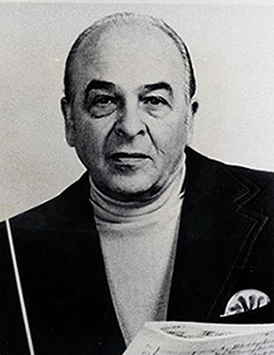
Carmine Valentino Coppola was an American composer, flautist, pianist, and songwriter who contributed original music to The Godfather, The Godfather Part II, Apocalypse Now, The Outsiders, and The Godfather Part III, all directed by his son Francis Ford Coppola. In the course of his career, he won both Academy Award for Best Original Score and Golden Globe Award for Best Original Score with BAFTA Award and Grammy Award nominations.
Jacques Cousteau, French biologist, author, and inventor, co-developed the aqua-lung (d. 1997) births

Jacques-Yves Cousteau, was a French naval officer, oceanographer, filmmaker and author. He co-invented the first successful Aqua-Lung, open-circuit SCUBA. The apparatus assisted him in producing some of the first underwater documentaries.
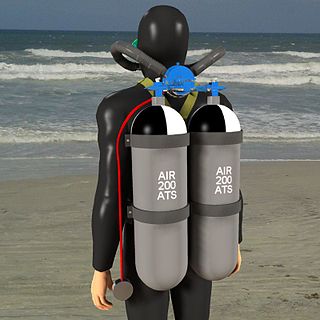
Aqua-Lung was the first open-circuit, self-contained underwater breathing apparatus to achieve worldwide popularity and commercial success. This class of equipment is now commonly referred to as a twin-hose diving regulator, or demand valve. The Aqua-Lung was invented in France during the winter of 1942–1943 by two Frenchmen: the engineer Émile Gagnan and the Naval Lieutenant Jacques Cousteau. It allowed Cousteau and Gagnan to film and explore underwater more easily.
Natascha Artin Brunswick, German-American mathematician and photographer (d. 2003) births

Natascha Artin Brunswick, née Jasny was a Russian-American mathematician and photographer.
Karl Hein, German hammer thrower (d. 1982) births
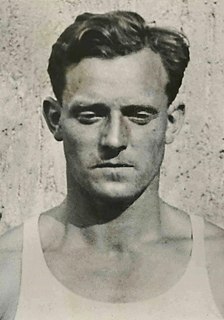
Karl Hein was a German hammer thrower who won a gold medal at the 1936 Summer Olympics held in Berlin.
Francisco Marto, Portuguese saint (d. 1919) births

Francisco de Jesus Marto and Jacinta de Jesus Marto were siblings from Aljustrel, a small hamlet near Fátima, Portugal, who with their cousin Lúcia dos Santos (1907–2005) reportedly witnessed three apparitions of the Angel of Peace in 1916 and several apparitions of the Blessed Virgin Mary at Cova da Iria in 1917. The title Our Lady of Fátima was given to the Virgin Mary as a result, and the Sanctuary of Fátima became a major centre of world Christian pilgrimage.
Ernie Nevers, American football player and coach (d. 1976) births

Ernest Alonzo Nevers, sometimes known by the nickname "Big Dog", was an American football and baseball player and football coach. Widely regarded as one of the best football players in the first half of the 20th century, he played as a fullback and was a triple-threat man known for his talents in running, passing, and kicking. He was inducted with the inaugural classes of inductees into both the College Football Hall of Fame in 1951 and the Pro Football Hall of Fame in 1963. He was also named in 1969 to the NFL 1920s All-Decade Team.
Nikolai Bugaev, Russian mathematician and philosopher (b. 1837) deaths

Nikolai Vasilievich Bugaev was a prominent Russian mathematician, the father of Andrei Bely.
Alexander I of Serbia (b. 1876) deaths

Alexander I reigned as the king of Serbia from 1889 to 1903 when he and his wife, Draga Mašin, were assassinated by a group of Royal Serbian Army officers, led by Captain Dragutin Dimitrijević.
Draga Mašin, Serbian wife of Alexander I of Serbia (b. 1864) deaths

Draginja "Draga" Obrenović, formerly Mašin (Машин), was the Queen consort of Serbia as the wife of King Aleksandar Obrenović. She was formerly a lady-in-waiting to Aleksandar's mother, Queen Natalija.

Alexander I reigned as the king of Serbia from 1889 to 1903 when he and his wife, Draga Mašin, were assassinated by a group of Royal Serbian Army officers, led by Captain Dragutin Dimitrijević.
Eric Fraser, British illustrator and graphic designer (d. 1983) births
Eric George Fraser was a British illustrator and graphic artist. He was famous in the public mind for contributions to the Radio Times, and as the creator in 1931 of 'Mr Therm' in adverts for the Gas Light and Coke Company.
Cap Fear, Canadian football player and rower (d. 1978) births
Alfred Henry "Cap" Fear was a star football player in the Canadian Football League for seven seasons for the Toronto Argonauts. He was inducted into the Canadian Football Hall of Fame in 1967 and into the Canada's Sports Hall of Fame in 1975.
Benny Wearing, Australian rugby league player (d. 1968) births

Benny Wearing was an Australian rugby league footballer who played in the 1920s and 1930s. An Australian international and New South Wales representative three-quarter, he played his club football in the NSWRFL Premiership for South Sydney. Wearing was the third player in Australian rugby league history to score 100 premiership tries.
Yasunari Kawabata, Japanese novelist and short story writer Nobel Prize laureate (d. 1972) births
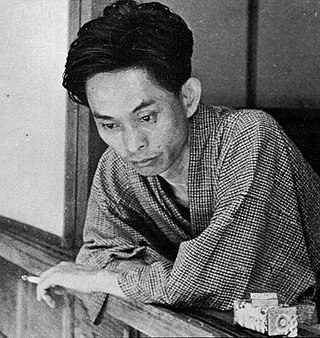
Yasunari Kawabata was a Japanese novelist and short story writer whose spare, lyrical, subtly shaded prose works won him the Nobel Prize in Literature in 1968, the first Japanese author to receive the award. His works have enjoyed broad international appeal and are still widely read.

The Nobel Prize in Literature is a Swedish literature prize that is awarded annually, since 1901, to an author from any country who has, in the words of the will of Swedish industrialist Alfred Nobel, "in the field of literature, produced the most outstanding work in an idealistic direction". Though individual works are sometimes cited as being particularly noteworthy, the award is based on an author's body of work as a whole. The Swedish Academy decides who, if anyone, will receive the prize. The academy announces the name of the laureate in early October. It is one of the five Nobel Prizes established by the will of Alfred Nobel in 1895. Literature is traditionally the final award presented at the Nobel Prize ceremony. On some occasions the award has been postponed to the following year, most recently in 2018 as of May 2022.
Ram Prasad Bismil, Indian activist, founded the Hindustan Republican Association (d. 1927) births

Ram Prasad Bismil was an Indian poet, writer, revolutionary and an Indian freedom fighter who participated in the Mainpuri Conspiracy of 1918, and the Kakori Conspiracy of 1925, and fought against British Raj. He also had a good command over Urdu and the Hindi languages and was an accomplished poet, composing in these languages using the pen names Ram, Agyat and Bismil, the latter through which he became famously known by. He was also a multilingual translator and his Hindi poem "Manipuri ki Pratigya" became very famous. Bismil was hanged on 19 December 1927 by the British for his revolutionary activities. He was associated with Arya Samaj where he got inspiration from Satyarth Prakash, a book written by Swami Dayanand Saraswati. He also had a confidential connection with Lala Har Dayal through his guru Swami Somdev, a preacher of Arya Samaj. Bismil was one of the founding members of the revolutionary organization Hindustan Republican Association. Bhagat Singh praised him as a great poet-writer of Urdu and Hindi, who had also translated the books Catherine from English and Bolshevikon Ki Kartoot from Bengali.
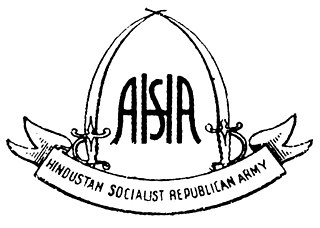
Hindustan Socialist Republican Association (HSRA), previously known as the Hindustan Republican Army and Hindustan Republican Association (HRA), was an Indian revolutionary organisation founded by Ram Prasad Bismil, Ashfaqulla Khan, Sachindra Nath Bakshi, Sachindranath Sanyal and Jogesh Chandra Chatterjee. HRA's written constitution and published manifesto, titled The Revolutionary, were produced as evidence in the Kakori conspiracy case of 1925.
Reg Latta, Australian rugby league player (d. 1970) births
Reginald Augustine 'Whip' Latta (1897–1970) was an Australian professional rugby league footballer who played in the 1910s and 1920s who also became a coach. An Australia national and New South Wales state representative forward, he played his club football in Sydney for the Balmain club, with whom he won five premierships. Latta also coached the team.
Henry Ayers, English-Australian politician, 8th Premier of South Australia (b. 1821) deaths
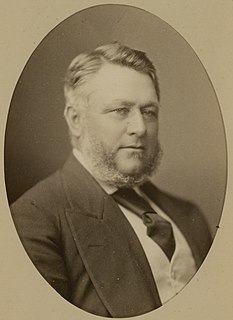
Sir Henry Ayers was the eighth Premier of South Australia, serving a record five times between 1863 and 1873.

The premier of South Australia is the head of government in the state of South Australia, Australia. The Government of South Australia follows the Westminster system, with a Parliament of South Australia acting as the legislature. The premier is appointed by the governor of South Australia, and by modern convention holds office by virtue of his or her ability to command the support of a majority of members of the lower house of Parliament, the House of Assembly.
Nikolai Bulganin, Soviet politician (d. 1975) births

Nikolai Alexandrovich Bulganin was a Soviet politician who served as Minister of Defense (1953–1955) and Premier of the Soviet Union (1955–1958) under Nikita Khrushchev, following service in the Red Army and as defence minister under Joseph Stalin.
Kiichiro Toyoda, Japanese businessman, founded Toyota (d. 1952) births

Kiichiro Toyoda was a Japanese businessman and the son of Toyoda Loom Works founder Sakichi Toyoda. His decision to change Toyoda's focus from automatic loom manufacture into automobile manufacturing created what would become Toyota Motor Corporation.

Toyota Motor Corporation is a Japanese multinational automotive manufacturer headquartered in Toyota City, Aichi, Japan. It was founded by Kiichiro Toyoda and incorporated on August 28, 1937. Toyota is the largest automobile manufacturer in the world, producing over 10 million vehicles per year as of 2017.
Hugo Wieslander, Swedish decathlete (d. 1976) births

Karl Hugo Wieslander was a Swedish athlete. He set the inaugural world record in the pentathlon in Gothenburg in 1911 with a score of 5516 points. The following year he finished second in the decathlon at the 1912 Summer Olympics in Stockholm, 688 points behind Jim Thorpe. In 1913, after it was discovered that Thorpe had played semi-professional baseball for a minor league team, Thorpe was disqualified for not being an amateur. Wieslander was declared the winner of the 1912 Olympics event and awarded the gold medal, which he refused to accept. In 1982 Thorpe was reinstated by the IOC with Hugo Wieslander as joint winners of the 1912 Olympic decathlon. The IOC announced 15 July 2022 that Thorpe's gold medal had been reinstated and Wieslander, whose family had considered Thorpe the rightful winner, became the silver medalist.
Bartolomeo Vanzetti, Italian-American anarchist and convicted criminal (d. 1927) births

Nicola Sacco and Bartolomeo Vanzetti were Italian immigrant anarchists who were controversially accused of murdering Alessandro Berardelli and Frederick Parmenter, a guard and paymaster respectively, during the April 15, 1920, armed robbery of the Slater and Morrill Shoe Company in Braintree, Massachusetts, United States. Seven years later, they were executed in the electric chair at Charlestown State Prison.
Matías Ramos Mejía, Argentinian colonel (b. 1810) deaths

Matías Ramos Mejía was an Argentine colonel. He joined the 1828 coup of Juan Lavalle against Manuel Dorrego, and the 1839 rebellion of the Freemen of the South. He took part in the move of Lavalle's corpse to Potosí. He also fought in the Paraguayan War. He is the father of historian José María Ramos Mejía.
Louis Désiré Maigret, French bishop (b. 1804) deaths

Louis-Désiré Maigret, SS.CC.,, served as the first vicar apostolic of the Vicariate Apostolic of the Sandwich Islands; now the Roman Catholic Diocese of Honolulu. Born in Saint-Pierre-de-Maillé (France), Maigret was ordained to the priesthood as a member of the Congregation of the Sacred Hearts of Jesus and Mary on September 23, 1828, at the age of 24. As part of his missionary work, Father Maigret sailed to the Kingdom of Hawaiʻi to l.p. build its Catholic community of native Hawaiians.
Spiros Xenos, Greek-Swedish painter (d. 1963) births

Spiros George Xenos was a Greek-Swedish artist.
Mordecai Kaplan, Lithuanian rabbi, founded Reconstructionist Judaism (d. 1983) births

Mordecai Menahem Kaplan, was a Lithuanian-born American rabbi, writer, Jewish educator, professor, theologian, philosopher, activist, and religious leader who founded the Reconstructionist branch of Judaism along with his son-in-law Ira Eisenstein. He has been described as a "towering figure" in the recent history of Judaism for his influential work in adapting it to modern society, contending that Judaism should be a unifying and creative force by stressing the cultural and historical character of the religion as well as theological doctrine.

Reconstructionist Judaism is a Jewish movement that views Judaism as a progressively evolving civilization rather than a religion, based on concepts developed by Mordecai Kaplan (1881–1983). The movement originated as a semi-organized stream within Conservative Judaism and developed from the late 1920s to 1940s, before it seceded in 1955 and established a rabbinical college in 1967. Reconstructionist Judaism is recognized by some scholars as one of the five streams of Judaism alongside Orthodox, Conservative, Reform, and Humanistic.
Maggie Gripenberg, Finnish dancer and choreographer (d. 1976) births
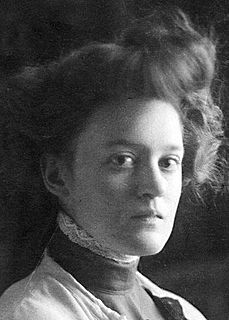
Margarita Maria “Maggie” Gripenberg was a pioneer of modern dance in Finland. She was the first to introduce Dalcroze Eurhythmics to Finland and modeled her early works on the improvisational style of Isadora Duncan. As a dancer, choreographer and teacher, she laid the educational foundations for the study of movement and dance. She was recognized by numerous awards for her choreographic work as well as being honored with the Pro Finlandia Medal and as a knight of the Order of the White Rose of Finland.
Jeannette Rankin, American social worker and politician (d. 1973) births

Jeannette Pickering Rankin was an American politician and women's rights advocate who became the first woman to hold federal office in the United States in 1917. She was elected to the U.S. House of Representatives as a Republican from Montana in 1916; she served one term until she was elected again in 1940. As of 2022, Rankin is still the only woman ever elected to Congress from Montana.
Roger Bresnahan, American baseball player and manager (d. 1944) births

Roger Philip Bresnahan, nicknamed "The Duke of Tralee", was an American player and manager in Major League Baseball (MLB). As a player, Bresnahan competed in MLB for the Washington Senators (1897), Chicago Orphans (1900), Baltimore Orioles (1901–02), New York Giants (1902–1908), St. Louis Cardinals (1909–1912) and Chicago Cubs (1913–1915). Bresnahan also managed the Cardinals (1909–1912) and Cubs (1915). He was a member of the 1905 World Series champions.
William, Prince of Orange (b. 1840) deaths

William, Prince of Orange, was heir apparent to the Dutch throne as the eldest son of King William III from 17 March 1849 until his death.
Renée Vivien, English-French poet and author (d. 1909) births

Renée Vivien was a British poet who wrote in French, in the style of the Symbolistes and the Parnassiens. A high-profile lesbian in the Paris of the Belle Époque, she is notable for her work, which has received more attention following a recent revival of interest in Sapphic verse. Many of her poems are autobiographical, pertaining mostly to Baudelarian themes of extreme romanticism and frequent despair. Apart from poetry, she wrote several works of prose, including L'Etre Double, and an unfinished biography of Anne Boleyn, which was published posthumously. She has been the object of multiple biographies, most notably by Jean-Paul Goujon, André Germain, and Yves-Gerard Le Dantec.
Alfred L. Kroeber, American-French anthropologist and ethnologist (d. 1960) births
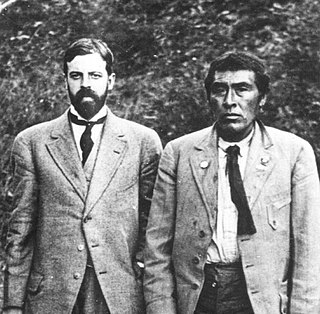
Alfred Louis Kroeber was an American cultural anthropologist. He received his PhD under Franz Boas at Columbia University in 1901, the first doctorate in anthropology awarded by Columbia. He was also the first professor appointed to the Department of Anthropology at the University of California, Berkeley. He played an integral role in the early days of its Museum of Anthropology, where he served as director from 1909 through 1947. Kroeber provided detailed information about Ishi, the last surviving member of the Yahi people, whom he studied over a period of years. He was the father of the acclaimed novelist, poet, and writer of short stories Ursula K. Le Guin.
Stjepan Radić, Croatian lawyer and politician (d. 1928) births
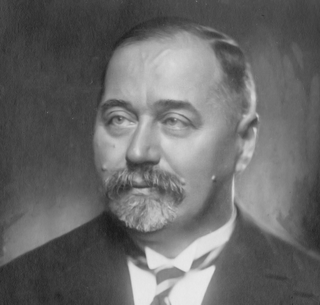
Stjepan Radić was a Croat politician and founder of the Croatian People's Peasant Party (HPSS), active in Austria-Hungary and the Kingdom of Serbs, Croats and Slovenes.
Charles Fabry, French physicist and academic (d. 1945) births

Maurice Paul Auguste Charles Fabry was a French physicist.
Richard Strauss, German composer and conductor (d. 1949) births

Richard Georg Strauss was a German composer, conductor, pianist, and violinist. Considered a leading composer of the late Romantic and early modern eras, he has been described as a successor of Richard Wagner and Franz Liszt. Along with Gustav Mahler, he represents the late flowering of German Romanticism, in which pioneering subtleties of orchestration are combined with an advanced harmonic style.
Alexander Peacock, Australian politician, 20th Premier of Victoria (d. 1933) births

Sir Alexander James Peacock was an Australian politician who served as the 20th Premier of Victoria.

The premier of Victoria is the head of government in the Australian state of Victoria. The premier is appointed by the governor of Victoria, and is the leader of the political party able to secure a majority in the Victorian Legislative Assembly.
Klemens von Metternich, German-Austrian politician, 1st State Chancellor of the Austrian Empire (b. 1773) deaths

Klemens Wenzel Nepomuk Lothar, Prince of Metternich-Winneburg zu Beilstein, known as Klemens von Metternich or Prince Metternich, was a conservative Austrian statesman and diplomat who was at the center of the European balance of power known as the Concert of Europe for three decades as the Austrian Empire's foreign minister from 1809 and Chancellor from 1821 until the liberal Revolutions of 1848 forced his resignation.

This is a list of heads of government under Austrian Emperors.
Karl Bryullov, Russian painter (b. 1799) deaths

Karl Pavlovich Bryullov, original name Charles Bruleau, also transliterated Briullov and Briuloff, and referred to by his friends as "Karl the Great", was a Russian painter. He is regarded as a key figure in transition from the Russian neoclassicism to romanticism.
Millicent Fawcett, English academic and activist (d. 1929) births

Dame Millicent Garrett Fawcett was an English politician, writer and feminist. She campaigned for women's suffrage by legal change and in 1897–1919 led Britain's largest women's rights association, the National Union of Women's Suffrage Societies (NUWSS), explaining, "I cannot say I became a suffragist. I always was one, from the time I was old enough to think at all about the principles of Representative Government." She tried to broaden women's chances of higher education, as a governor of Bedford College, London and co-founding Newnham College, Cambridge in 1875. In 2018, a century after the Representation of the People Act, she was the first woman honoured by a statue in Parliament Square.
John Franklin, English admiral and politician (b. 1786) deaths

Sir John Franklin was a British Royal Navy officer and Arctic explorer. After serving in wars against Napoleonic France and the United States, he led two expeditions into the Canadian Arctic and through the islands of the Arctic Archipelago, in 1819 and 1825, and served as Lieutenant-Governor of Van Diemen's Land from 1839 to 1843. During his third and final expedition, an attempt to traverse the Northwest Passage in 1845, Franklin's ships became icebound off King William Island in what is now Nunavut, where he died in June 1847. The icebound ships were abandoned ten months later and the entire crew died, from causes such as starvation, hypothermia, and scurvy.
William Louis Marshall, American general and engineer (d. 1920) births
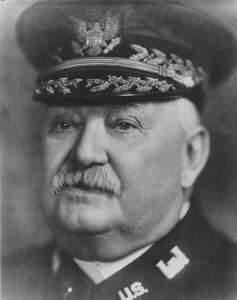
William Louis Marshall was an influential figure in the US Corps of Engineers.
Carl von Linde, German engineer and academic (d. 1934) births

Carl Paul Gottfried von Linde was a German scientist, engineer, and businessman. He discovered a refrigeration cycle and invented the first industrial-scale air separation and gas liquefaction processes, which led to the first reliable and efficient compressed-ammonia refrigerator in 1876. These breakthroughs laid the backbone for the 1913 Nobel Prize in Physics that was awarded to Heike Kamerlingh Onnes. Linde was a member of scientific and engineering associations, including being on the board of trustees of the Physikalisch-Technische Reichsanstalt and the Bavarian Academy of Sciences and Humanities. Linde was also the founder of what is now known as Linde plc but formerly known (variously) as the Linde division of Union Carbide, Linde, Linde Air Products, Praxair, and others. Linde is the world's largest producer of industrial gases and ushered in the creation of the global supply chain for industrial gases. He was knighted in 1897 as Ritter von Linde.
Johann Bauschinger, German mechanical engineer and physicist (d. 1893) births

Johann Bauschinger was a mathematician, builder, and professor of Engineering Mechanics at Munich Polytechnic from 1868 until his death. The Bauschinger effect in materials science is named after him. He was also the father of astronomer Julius Bauschinger (1860–1934).
Lucy Pickens, American wife of Francis Wilkinson Pickens (d. 1899) births
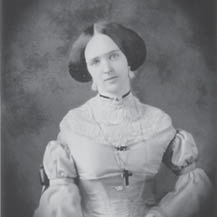
Lucy Petway Holcombe Pickens was a 19th-century American socialite of Tennessee and Texas, known during and after her lifetime as the "Queen of the Confederacy". She was also a First Lady of South Carolina. Described as "beautiful, brilliant, and captivating" by her male contemporaries, she helped shape the stereotype of the "Southern belle." Born into a planter's family, she moved with them to Marshall, Texas, the seat of Harrison County, at age 16.

Francis Wilkinson Pickens was a political Democrat and Governor of South Carolina when that state became the first to secede from the United States.
Edward Braddon, English-Australian politician, 18th Premier of Tasmania (d. 1904) births

Sir Edward Nicholas Coventry Braddon was an Australian politician who served as Premier of Tasmania from 1894 to 1899, and was a Member of the First Australian Parliament in the House of Representatives. Braddon was a Tasmanian delegate to the Constitutional Conventions.
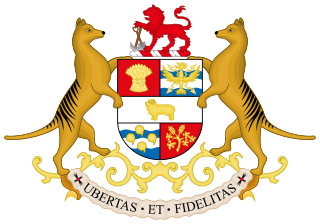
The premier of Tasmania is the head of the executive government in the Australian state of Tasmania. By convention, the leader of the party or political grouping which has majority support in the House of Assembly is invited by the governor of Tasmania to be premier and principal adviser.
Alexander Bain, Scottish philosopher and academic (d. 1903) births

Alexander Bain was a Scottish philosopher and educationalist in the British school of empiricism and a prominent and innovative figure in the fields of psychology, linguistics, logic, moral philosophy and education reform. He founded Mind, the first ever journal of psychology and analytical philosophy, and was the leading figure in establishing and applying the scientific method to psychology. Bain was the inaugural Regius Chair in Logic and Professor of Logic at the University of Aberdeen, where he also held Professorships in Moral Philosophy and English Literature and was twice elected Lord Rector of the University of Aberdeen.
Julia Margaret Cameron, Indian-Sri Lankan photographer (d. 1879) births

Julia Margaret Cameron was a British photographer who is considered one of the most important portraitists of the 19th century. She is known for her soft-focus close-ups of famous Victorian men and women, for illustrative images depicting characters from mythology, Christianity, and literature, and for sensitive portraits of men, women and children.
James F. Schenck, American admiral (d. 1882) births
James Findlay Schenck was a rear admiral in the United States Navy who served in the Mexican–American War and the American Civil War. His younger brother, Robert C. Schenck, was a Union Army general and a United States Ambassador to Brazil.
José Trinidad Reyes, Honduran philosopher and theorist (d. 1855) births

The Father José Trinidad Reyes y Sevilla was a Honduran priest who founded the National Autonomous University of Honduras, formerly called "La Sociedad del Genio emprendedor y del buen gusto". He advocated against poverty, assisting the poor and insisting on their right to education on matters of faith, culture and science.
François-Louis Cailler, Swiss chocolatier (d. 1852) births

François-Louis Cailler was a Swiss entrepreneur and early chocolatier who founded Cailler, the first modern brand of Swiss chocolate and the oldest still in existence, in 1819.
Samuel Whitbread, English brewer and politician, founded the Whitbread Company (b. 1720) deaths

Samuel Whitbread was an English brewer and Member of Parliament. In 1742, he established a brewery that in 1799 became Whitbread & Co Ltd.
Whitbread plc is a multinational British hotel and restaurant company headquartered in Houghton Regis, England.
John Constable, English painter and academic (d. 1837) births

John Constable was an English landscape painter in the Romantic tradition. Born in Suffolk, he is known principally for revolutionising the genre of landscape painting with his pictures of Dedham Vale, the area surrounding his home – now known as "Constable Country" – which he invested with an intensity of affection. "I should paint my own places best", he wrote to his friend John Fisher in 1821, "painting is but another word for feeling".
Felice Torelli, Italian painter (b. 1667) deaths
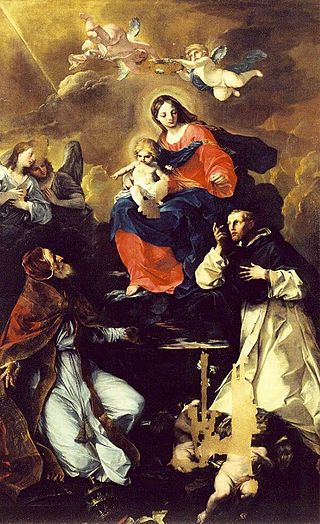
Felice Torelli was an Italian painter of the Baroque style, active mainly in Bologna.
Joseph Warren, American physician and general (d. 1775) births

Joseph Warren, a Founding Father of the United States, was an American physician who was one of the most important figures in the Patriot movement in Boston during the early days of the American Revolution, eventually serving as President of the revolutionary Massachusetts Provincial Congress. Warren enlisted Paul Revere and William Dawes on April 18, 1775, to leave Boston and spread the alarm that the British garrison in Boston was setting out to raid the town of Concord and arrest rebel leaders John Hancock and Samuel Adams. Warren participated in the Battles of Lexington and Concord the following day, the opening engagements of the American Revolutionary War.
George I of Great Britain (b. 1660) deaths

George I was King of Great Britain and Ireland from 1 August 1714 and ruler of the Electorate of Hanover within the Holy Roman Empire from 23 January 1698 until his death in 1727. He was the first British monarch of the House of Hanover as the most senior Protestant descendant of his great-grandfather James VI and I.
Infanta Maria Teresa Rafaela of Spain (d. 1746) births

Marie Thérèse Raphaëlle, Dauphine of France, born Infanta María Teresa Antonia Rafaela of Spain, was the daughter of King Philip V of Spain and Elisabeth Farnese and the wife of Louis, Dauphin of France, son of King Louis XV. The Dauphine died aged 20, three days after giving birth to a daughter who died in 1748.
Johann Georg Palitzsch, German astronomer (d. 1788) births

Johann Georg Palitzsch was a German astronomer who became famous for recovering Comet 1P/Halley on Christmas Day, 1758. The periodic nature of this comet had been deduced by its namesake Edmond Halley in 1705, but Halley had died before seeing if his prediction would come true.
Benjamin Ingham, American missionary (d. 1772) births
Benjamin Ingham was an English cleric who was the founder of the Moravian Church in England as well as his own Inghamite societies.
Louis Joseph, Duke of Vendôme (b. 1654) deaths

Louis Joseph de Bourbon, Duke of Vendôme, often simply called Vendôme was a French general and Marshal of France. One of the great generals of his era, he was one of Louis XIV's most successful commanders in the War of the Grand Alliance and War of the Spanish Succession.
Joachim Martin Falbe, German painter (d. 1782) births

Joachim Martin Falbe was a German portrait painter.
Carlos Seixas, Portuguese harpsichord player and composer (d. 1742) births
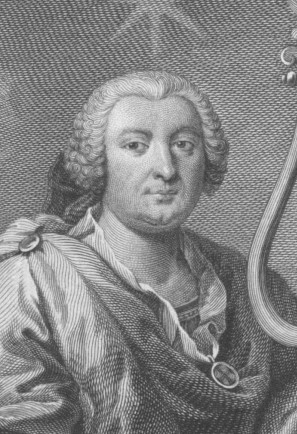
José António Carlos de Seixas was a pre-eminent Portuguese composer of the 18th century. An accomplished virtuoso of both the organ and the harpsichord, Seixas succeeded his father as the organist for Coimbra Cathedral at the age of fourteen. In 1720, he departed for the capital, Lisbon, where he was to serve as the organist for the royal chapel, one of the highest offices for a musician in Portugal, a position which earned him a knighthood. Much of Seixas' music rests in an ambiguous transitional period from the learned style of the 17th century to the galant style of the 18th century.
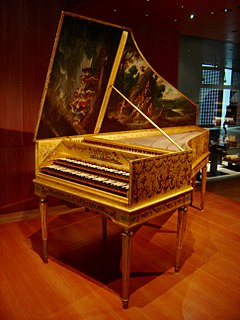
A harpsichord is a musical instrument played by means of a keyboard. This activates a row of levers that turn a trigger mechanism that plucks one or more strings with a small plectrum made from quill or plastic. The strings are under tension on a soundboard, which is mounted in a wooden case; the soundboard amplifies the vibrations from the strings so that the listeners can hear it. Like a pipe organ, a harpsichord may have more than one keyboard manual, and even a pedal board. Harpsichords may also have stop buttons which add or remove additional octaves. Some harpsichords may have a buff stop, which brings a strip of buff leather or other material in contact with the strings, muting their sound to simulate the sound of a plucked lute.
Francesco Antonio Vallotti, Italian organist and composer (d. 1780) births

Francesco Antonio Vallotti was an Italian composer, music theorist, and organist.
James Francis Edward Keith, Scottish-Prussian field marshal (d. 1758) births

James Francis Edward Keith was a Scottish soldier and Generalfeldmarschall of the Royal Prussian Army. As a Jacobite he took part in a failed attempt to restore the Stuart Monarchy to Britain. When this failed, he fled to Europe, living in France, and then Spain. He joined the Spanish and eventually the Russian armies and fought in the Anglo-Spanish War and the Russo-Swedish War. In the latter he participated in the conquest of Finland and became its viceroy. Subsequently, he participated in the coup d'état that put Elizabeth of Russia on the throne.
André Félibien, French historian and author (b. 1619) deaths

André Félibien, sieur des Avaux et de Javercy, was a French chronicler of the arts and official court historian to Louis XIV of France.
Giovanni Antonio Giay, Italian composer (d. 1764) births
Giovanni Antonio Giay was an Italian composer. His compositional output includes 15 operas, 5 symphonies, and a significant amount of sacred music.
Nikita Pustosvyat, a leader of the Russian Old Believers, beheaded (b. unknown) deaths
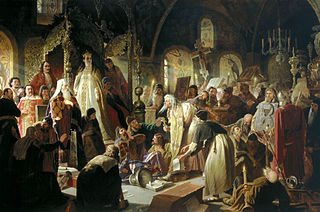
Nikita Pustosvyat was one of the leaders of the Russian Old Believers during Raskol.

Old Believers or Old Ritualists are Eastern Orthodox Christians who maintain the liturgical and ritual practices of the Russian Orthodox Church as they were before the reforms of Patriarch Nikon of Moscow between 1652 and 1666. Resisting the accommodation of Russian piety to the contemporary forms of Greek Orthodox worship, these Christians were anathematized, together with their ritual, in a Synod of 1666–67, producing a division in Eastern Europe between the Old Believers and those who followed the state church in its condemnation of the Old Rite. Russian speakers refer to the schism itself as raskol (раскол), etymologically indicating a "cleaving-apart".
Francesco Antonio Bonporti, Italian priest and composer (d. 1749) births

Francesco Antonio Bonporti was an Italian priest and amateur composer.
Tokugawa Ienobu, Japanese shōgun (d. 1712) births
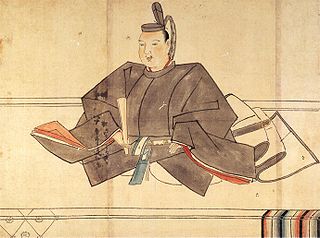
Tokugawa Ienobu was the sixth shōgun of the Tokugawa dynasty of Japan. He was the eldest son of Tokugawa Tsunashige, thus making him the nephew of Tokugawa Ietsuna and Tokugawa Tsunayoshi, the grandson of Tokugawa Iemitsu, the great-grandson of Tokugawa Hidetada, and the great-great-grandson of Tokugawa Ieyasu. All of Ienobu's children died young.
Antonio Cifrondi, Italian painter (d. 1730) births

Antonio Cifrondi was an Italian painter of the late Baroque, mainly of genre themes. He was active in Brescia and near Bergamo.
John Moore, English businessman and politician, Lord Mayor of London (d. 1702) births
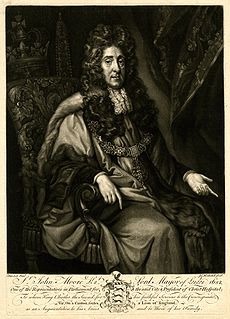
Sir John Moore was a British politician. He was the Member of Parliament for the City of London from 15 May 1685 to 9 January 1687, and Lord Mayor of London, 1681–82. He also invested in the slave trade.
The Lord Mayor of London is the mayor of the City of London and the leader of the City of London Corporation. Within the City, the Lord Mayor is accorded precedence over all individuals except the sovereign and retains various traditional powers, rights, and privileges, including the title and style The Right Honourable Lord Mayor of London.
George Wither, English poet (d. 1667) births
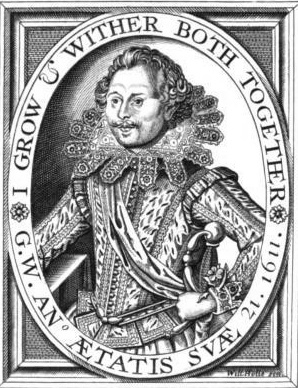
George Wither was a prolific English poet, pamphleteer, satirist and writer of hymns. Wither's long life spanned one of the most tumultuous periods in the history of England, during the reigns of Elizabeth I, James I, and Charles I, the Civil War, the Parliamentary period and the Restoration period.
Evert Horn, Swedish soldier (d. 1615) births
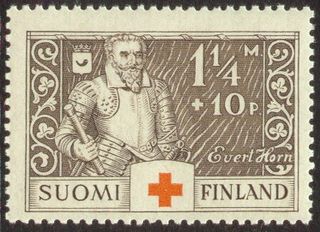
Evert Karlsson Horn af Kanckas was a Swedish Field Marshal and Governor of Narva.
Ben Jonson, English poet, playwright, and critic (d. 1637) births

Benjamin "Ben" Jonson was an English playwright and poet. Jonson's artistry exerted a lasting influence upon English poetry and stage comedy. He popularised the comedy of humours; he is best known for the satirical plays Every Man in His Humour (1598), Volpone, or The Fox, The Alchemist (1610) and Bartholomew Fair (1614) and for his lyric and epigrammatic poetry. "He is generally regarded as the second most important English dramatist, after William Shakespeare, during the reign of James I."
Mary of Guise, queen of James V of Scotland (b. 1515) deaths

Mary of Guise, also called Mary of Lorraine, was a French noblewoman of the House of Guise, a cadet branch of the House of Lorraine and one of the most powerful families in France. She was Queen of Scotland from 1538 until 1542, as the second wife of King James V. As the mother of Mary, Queen of Scots, she was a key figure in the political and religious upheaval that marked mid-16th-century Scotland, ruling the kingdom as regent on behalf of her daughter from 1554 until her death in 1560.

James V was King of Scotland from 9 September 1513 until his death in 1542. He was crowned on 21 September 1513 at the age of seventeen months. James was the son of King James IV and Margaret Tudor, and during his childhood Scotland was governed by regents, firstly by his mother until she remarried, and then by his second cousin, John, Duke of Albany. James's personal rule began in 1528 when he finally escaped the custody of his stepfather, Archibald Douglas, Earl of Angus. His first action was to exile Angus and confiscate the lands of the Douglases.
John III of Portugal (b. 1502) deaths

John III, nicknamed The Pious, was the King of Portugal and the Algarves from 1521 until his death in 1557. He was the son of King Manuel I and Maria of Aragon, the third daughter of King Ferdinand II of Aragon and Queen Isabella I of Castile. John succeeded his father in 1521 at the age of nineteen.
Lodovico Zacconi, Italian composer and theorist (d. 1627) births

Lodovico Zacconi was an Italian composer and musical theorist of the late Renaissance and early Baroque eras. He worked as a singer, theologian, and writer on music in northern Italy and Austria; for a time he was in the employ of Archduke Karl of Graz, and worked in Graz and Vienna.
Barnabe Googe, English poet and translator (d. 1594) births
Barnabe Googe, also spelt Barnabe Goche and Barnaby Goodge, was a poet and translator, one of the earliest English pastoral poets.
James III of Scotland (b. 1451) deaths

James III was King of Scots from 1460 until his death at the Battle of Sauchieburn in 1488. He inherited the throne as a child following the death of his father, King James II, at the siege of Roxburgh Castle. James III's reign began with a minority that lasted almost a decade, during which Scotland was governed by a series of regents and factions who struggled for possession of the young king, before his personal rule began in 1469.
John of Sahagun, hermit and saint (b. 1419) deaths
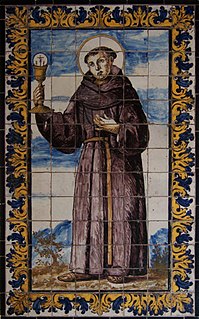
John of Sahagún, OESA, was a Spanish Augustinian friar and priest. He was a leading preacher of his day, and was known as a peacemaker and reconciler of enemies among the nobles and factions of Salamanca. He was declared a saint by the Catholic Church in 1690 by Pope Alexander VIII.
Anne Neville, Princess of Wales and Queen of England (d. 1485) births
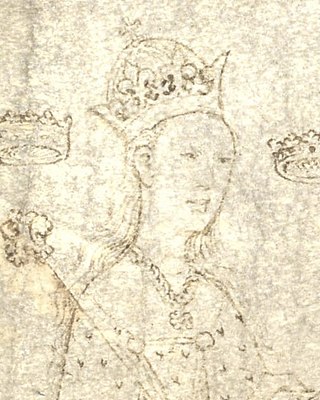
Anne Neville was Queen of England as the wife of King Richard III. She was the younger of the two daughters and co-heiresses of Richard Neville, 16th Earl of Warwick. Before her marriage to Richard, she had been Princess of Wales as the wife of Edward of Westminster, Prince of Wales, the only son and heir apparent of King Henry VI.
Henry de Beauchamp, 1st Duke of Warwick (b. 1425) deaths

Henry Beauchamp, 14th Earl and Duke of Warwick was an English nobleman.
John IV, Duke of Brabant (d. 1427) births
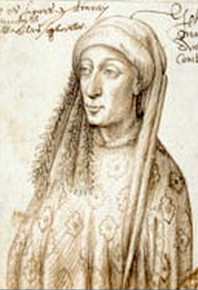
John IV, Duke of Brabant was the son of Antoine of Burgundy, Duke of Brabant, Lothier and Limburg and his first wife Jeanne of Saint-Pol. He was the second Brabantian ruler from the House of Valois. He is best known for founding the Old University of Leuven in 1425.
Bartholomew of San Concordio, Italian Dominican canonist and man of letters (b. 1260) deaths
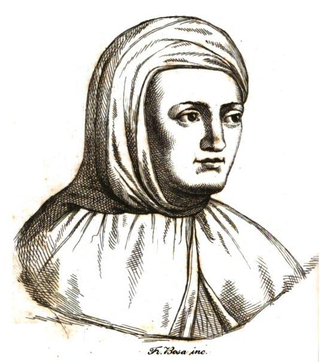
Bartholomew of San Concordio was an Italian Dominican canonist and man of letters. He was the author of the Summa de casibus conscientiae (1338) and of the Ammaestramenti degli antichi.
Alexios Apokaukos, chief minister of the Byzantine Empire deaths

Alexios Apokaukos, also Latinized as Alexius Apocaucus, was a leading Byzantine statesman and high-ranking military officer during the reigns of emperors Andronikos III Palaiologos and John V Palaiologos. Although he owed his rise to high state offices to the patronage of John VI Kantakouzenos, he became, together with Patriarch John XIV Kalekas, one of the leaders of the faction supporting Emperor John V in the civil war of 1341–1347 against his one-time benefactor. Apokaukos died when he was lynched by political prisoners during an inspection of a new prison.
Berengar Fredol the Elder, French lawyer and bishop (b. 1250) deaths

Berengar Fredol or Bérenger Frédol was a French canon lawyer and Cardinal-Bishop of Frascati.
Yolanda of Poland (b. 1235) deaths
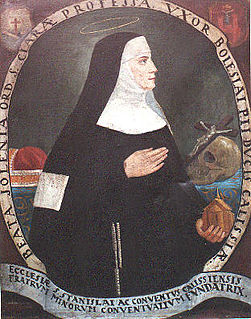
Yolanda of Poland or Yolanda of Hungary, also Blessed Yolanda was the daughter of King Béla IV of Hungary and Maria Laskarina. She was the sister of Margaret of Hungary and Kinga of Poland (Cunegunda). One of her paternal aunts was the Franciscan Elizabeth of Hungary.
Amadeus IV, count of Savoy (b. 1197) deaths
Amadeus IV was Count of Savoy from 1233 to 1253.
Adachi Kagemori, Japanese samurai deaths
Adachi Kagemori was a Japanese warrior. He was part of the Adachi clan, and then he joined the Hojo clan.
Henry of Flanders, emperor of the Latin Empire (b. c. 1174) deaths

Henry was Latin emperor of Constantinople from 1205 until his death in 1216. He was one of the leaders of the Fourth Crusade in which the Byzantine Empire was conquered and Latin Empire formed.

The Latin Empire, also referred to as the Latin Empire of Constantinople, was a feudal Crusader state founded by the leaders of the Fourth Crusade on lands captured from the Byzantine Empire. The Latin Empire was intended to replace the Byzantine Empire as the Western-recognized Roman Empire in the east, with a Catholic emperor enthroned in place of the Eastern Orthodox Roman emperors.
Henry the Young King of England (b. 1155) deaths
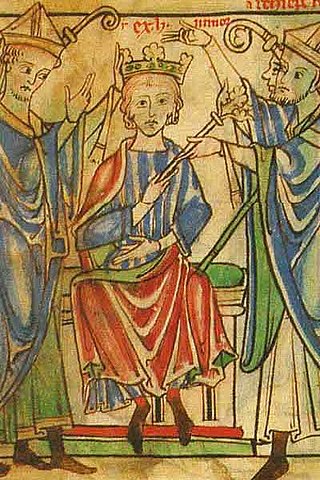
Henry the Young King was the eldest son of Henry II of England and Eleanor of Aquitaine to survive childhood. Beginning in 1170, he was titular King of England, Duke of Normandy, Count of Anjou and Maine. Henry the Young King was the only English king since the Norman Conquest to be crowned during his father's reign, but was frustrated by his father's refusal to grant him meaningful autonomous power. He died aged 28, six years before his father, leaving his brother Richard to become the next king.
Rimbert, archbishop of Bremen (b. 830) deaths

Year 888 (DCCCLXXXVIII) was a leap year starting on Monday of the Julian calendar.
Saint Rimbert was archbishop of Hamburg-Bremen, in the northern part of the Kingdom of East Frankia from 865 until his death in 888. He most famously wrote the hagiography about the life Ansgar, the Vita Ansgari, one of the most popular hagiographies of middle ages.

The Prince-Archbishopric of Bremen — not to be confused with the modern Archdiocese of Hamburg, founded in 1994 — was an ecclesiastical principality (787–1566/1648) of the Holy Roman Empire and the Catholic Church that after its definitive secularization in 1648 became the hereditary Duchy of Bremen. The prince-archbishopric, which was under the secular rule of the archbishop, consisted of about a third of the diocesan territory. The city of Bremen was de facto and de jure not part of the prince-archbishopric. Most of the prince-archbishopric lay rather in the area to the north of the city of Bremen, between the Weser and Elbe rivers. Even more confusingly, parts of the prince-archbishopric belonged in religious respect to the neighbouring Diocese of Verden, making up 10% of its diocesan territory.
Shi Jingsi, general of the Tang Dynasty deaths
Shi Jingcun (史敬存), known as Shi Jingsi (史敬思) in Chinese historiography likely for naming taboo reasons, was a minor general in imperial China under the Shatuo military leader Li Keyong near the end of the Tang Dynasty. He sacrificed his life to help his inebriated lord escape an assassination attempt by Zhu Wen in Zhu's territory.

The Tang dynasty, or Tang Empire, was an imperial dynasty of China that ruled from 618 to 907 AD, with an interregnum between 690 and 705. It was preceded by the Sui dynasty and followed by the Five Dynasties and Ten Kingdoms period. Historians generally regard the Tang as a high point in Chinese civilization, and a golden age of cosmopolitan culture. Tang territory, acquired through the military campaigns of its early rulers, rivaled that of the Han dynasty.
Junna, emperor of Japan (b. 785) deaths

Emperor Junna was the 53rd emperor of Japan, according to the traditional order of succession. Junna reigned from 823 to 833.

Japan is an island country in East Asia. It is situated in the northwest Pacific Ocean, and is bordered on the west by the Sea of Japan, while extending from the Sea of Okhotsk in the north toward the East China Sea, Philippine Sea, and Taiwan in the south. Japan is a part of the Ring of Fire, and spans an archipelago of 6852 islands covering 377,975 square kilometers (145,937 sq mi); the five main islands are Hokkaido, Honshu, Shikoku, Kyushu, and Okinawa. Tokyo is the nation's capital and largest city, followed by Yokohama, Osaka, Nagoya, Sapporo, Fukuoka, Kobe, and Kyoto.
Al-Husayn ibn Ali al-Abid, anti-Abbasid rebel leader deaths
Al-Ḥusayn ibn ʿAlī al-ʿĀbid was an Alid who rebelled at Medina against the Abbasid caliph al-Hadi. He was killed with many of his followers at the Battle of Fakhkh outside Mecca on 11 June 786, whence he is known to history as the Man of Fakhkh.
Emilian of Cogolla, Iberic saint (b. 472) deaths
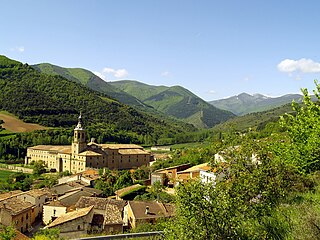
Saint Aemilian (; is an Iberic saint, widely revered throughout Spain, who lived during the age of Visigothic rule.

The Iberian Peninsula, also known as Iberia, is a peninsula in southwestern Europe, defining the westernmost edge of Eurasia. It is principally divided between Spain and Portugal, comprising most of their territory, as well as a small area of Southern France, Andorra, and Gibraltar. With an area of approximately 583,254 square kilometres (225,196 sq mi), and a population of roughly 53 million, it is the second largest European peninsula by area, after the Scandinavian Peninsula.
Alexander the Great, Macedonian king (b. 356 BC) deaths

Alexander III of Macedon, commonly known as Alexander the Great, was a king of the ancient Greek kingdom of Macedon. He succeeded his father Philip II to the throne in 336 BC at the age of 20, and spent most of his ruling years conducting a lengthy military campaign throughout Western Asia and Egypt. By the age of thirty, he had created one of the largest empires in history, stretching from Greece to northwestern India. He was undefeated in battle and is widely considered to be one of history's greatest and most successful military commanders.
American Evacuation Day (Libya)
This is a list of public holidays in Libya.

Libya, officially the State of Libya, is a country in the Maghreb region in North Africa. It is bordered by the Mediterranean Sea to the north, Egypt to the east, Sudan to the southeast, Chad to the south, Niger to the southwest, Algeria to the west, and Tunisia to the northwest. Libya is made of three historical regions: Tripolitania, Fezzan, and Cyrenaica. With an area of almost 700,000 square miles, it is the fourth-largest country in Africa and the Arab world, and the 16th-largest in the world. Libya has the 10th-largest proven oil reserves in the world. The largest city and capital, Tripoli, is located in western Libya and contains over three million of Libya's seven million people.
Brazilian Navy commemorative day (Brazil)
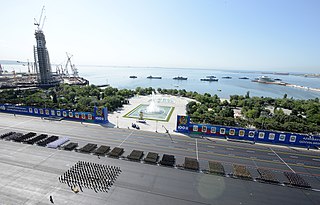
Many nations around the world observe some kind of Armed Forces Day to honor their military forces. This day is not to be confused with Veterans Day or Memorial Day.
Christian feast day: Barnabas the Apostle

Barnabas, born Joseph (Ἰωσήφ) or Joses (Ἰωσής), was according to tradition an early Christian, one of the prominent Christian disciples in Jerusalem. According to Acts 4:36, Barnabas was a Cypriot Jew. Named an apostle in Acts 14:14, he and Paul the Apostle undertook missionary journeys together and defended Gentile converts against the Judaizers. They traveled together making more converts, and participated in the Council of Jerusalem. Barnabas and Paul successfully evangelized among the "God-fearing" Gentiles who attended synagogues in various Hellenized cities of Anatolia.
Christian feast day: Bartholomew the Apostle (Eastern Christianity)
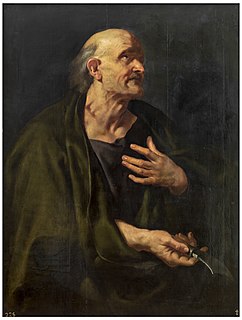
Bartholomew was one of the twelve apostles of Jesus according to the New Testament. He is also commonly identified as Nathanael or Nathaniel, who appears in the Gospel of John when introduced to Jesus by Philip, although some modern commentators reject the identification of Nathanael with Bartholomew.

Eastern Christianity comprises Christian traditions and church families that originally developed during classical and late antiquity in Eastern Europe, Southeastern Europe, Asia Minor, the Caucasus, Northeast Africa, the Fertile Crescent and the Malabar coast of South Asia, and ephemerally parts of Persia, Central Asia, the Near East and the Far East. The term does not describe a single communion or religious denomination.
Christian feast day: Blessed Ignatius Maloyan (Armenian Catholic Church)

Beatification is a recognition accorded by the Catholic Church of a deceased person's entrance into Heaven and capacity to intercede on behalf of individuals who pray in their name. Beati is the plural form, referring to those who have undergone the process of beatification; they possess the title of "Blessed" before their names and are often referred to in English as "a Blessed" or, plurally, "Blesseds".

Ignatius Shoukrallah Maloyan, was the Armenian Catholic Archbishop of Mardin between 1911 and 1915, when he fell victim to the Armenian Genocide. He was Beatified by Pope John Paul II as a martyr in 2001.

The Armenian Catholic Church is one of the Eastern particular churches sui iuris of the Catholic Church. It accepts the leadership of the Bishop of Rome, known as papal supremacy, and therefore it is in full communion with the Catholic Church, including the Latin Church and the 22 other Eastern Catholic Churches. The Armenian Catholic Church is regulated by Eastern canon law, namely the Code of Canons of the Eastern Churches.
Christian feast day: Paula Frassinetti
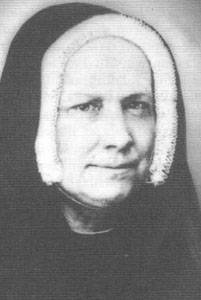
Paula Frassinetti is an Italian saint in the Roman Catholic Church and foundress of the Congregation of the Sisters of Saint Dorothy. Her feast day is June 11.
Christian feast day: Riagail of Bangor
Riagail of Bangor, aka Reghuil, Abbot of Bangor, died 881.
Christian feast day: June 11 (Eastern Orthodox liturgics)

June 10 - Eastern Orthodox Church calendar - June 12
Davis Day (Cape Breton, Nova Scotia, Canada)

Davis Day, also known as Miners' Memorial Day is an annual day of remembrance observed on June 11 in coal mining communities in Nova Scotia, Canada to recognize all miners killed in the province's coal mines.

Cape Breton Island is an island on the Atlantic coast of North America and part of the province of Nova Scotia, Canada.

Nova Scotia is one of the thirteen provinces and territories of Canada. It is one of the three Maritime provinces and one of the four Atlantic provinces. Nova Scotia is Latin for "New Scotland".

Canada is a country in North America. Its ten provinces and three territories extend from the Atlantic Ocean to the Pacific Ocean and northward into the Arctic Ocean, covering over 9.98 million square kilometres, making it the world's second-largest country by total area. Its southern and western border with the United States, stretching 8,891 kilometres (5,525 mi), is the world's longest binational land border. Canada's capital is Ottawa, and its three largest metropolitan areas are Toronto, Montreal, and Vancouver.
King Kamehameha I Day (Hawaii, United States)

King Kamehameha I Day on June 11 is a public holiday in the U.S. state of Hawaii. It honors Kamehameha the Great, the monarch who first established the unified Kingdom of Hawaiʻi—comprising the Hawaiian Islands of Niʻihau, Kauaʻi, Oʻahu, Molokaʻi, Lānaʻi, Kahoʻolawe, Maui, and Hawaiʻi. In 1883 a statue of King Kamehameha was dedicated in Honolulu by King David Kalākaua. There are duplicates of this statue in Emancipation Hall at the Capitol Visitor Center in Washington, D.C. and in Hilo, island of Hawaiʻi.

Hawaii is a state in the Western United States, located in the Pacific Ocean about 2,000 miles (3,200 km) from the U.S. mainland. It is the only U.S. state outside North America, the only state that is an archipelago, and the only state geographically located within the tropics.

The United States of America, commonly known as the United States or informally America, is a country in North America. It consists of 50 states, a federal district, five major unincorporated territories, nine Minor Outlying Islands, and 326 Indian reservations. It is the third-largest country by both land and total area. The United States shares land borders with Canada to its north and with Mexico to its south. It has maritime borders with the Bahamas, Cuba, Russia, and other nations. With a population of over 331 million, it is the third most populous country in the world. The national capital is Washington, D.C., and the most populous city and financial center is New York City.
Student Day (Honduras)
Public holidays in Honduras are centered on Christianity and the commemoration of events in Honduran history. Each celebration is very important to many families across this country. They are often celebrated with extended family members, and friends. On a few of the most important holidays, such as Independence Day and holy week parades and processions are held from early morning to later in the afternoon or evening.

Honduras, officially the Republic of Honduras, is a country in Central America. The republic of Honduras is bordered to the west by Guatemala, to the southwest by El Salvador, to the southeast by Nicaragua, to the south by the Pacific Ocean at the Gulf of Fonseca, and to the north by the Gulf of Honduras, a large inlet of the Caribbean Sea. Its capital and largest city is Tegucigalpa.